

Hand-Picked Top-Read Stories

Vision Zero: A Comprehensive Guide
- Environment
- Transportation

Advantages of Public Transport: 20 Reasons to Make the Shift Today
- Planet earth

CNG Fuel: A Comprehensive Guide
Trending tags.
- Zoning Laws
- Zero-waste living
- zero-waste kitchen
- workplace safety
- workplace charging
- WineTasting
- Sustainable Tourism
20 Sustainable Tourism Practices and Destinations in India to Visit Now
Sustainable Tourism in India: India is a country of diverse landscapes, cultures, and traditions, making it a popular destination for travelers from all over the world. With its rich cultural heritage, stunning natural beauty, and bustling cities, India has much to offer to travelers seeking unique experiences. However, with the growth of tourism, the country has also witnessed an increase in environmental and social issues, such as waste management, carbon emissions, and exploitation of local communities. To address these concerns, sustainable tourism practices and initiatives have been developed across the country to promote responsible tourism. In this article, we will highlight 20 sustainable tourism practices and destinations in India that travelers can visit to support sustainable tourism.
20 Sustainable Tourism Practices and Destinations in India
- Spiti Valley, Himachal Pradesh : Nestled in the Himalayas, Spiti Valley is a remote and pristine destination that offers travelers a chance to experience the unique culture and traditions of the Spiti people. The valley is home to several eco-tourism initiatives, such as the Spiti Ecosphere, which supports the conservation of the region’s natural resources, and provides economic opportunities for local communities.
- Chilika Lake, Odisha : Chilika Lake is the largest saltwater lake in Asia and home to a variety of bird species and aquatic life. The lake is a popular destination for bird watching and eco-tourism, with several sustainable tourism initiatives aimed at promoting the conservation of the lake’s ecology and supporting the livelihoods of local communities.
- Kabini, Karnataka : Kabini is a wildlife sanctuary located in the southern Indian state of Karnataka. The sanctuary is home to a variety of wildlife species, including elephants, tigers, and leopards. The region has several eco-friendly resorts that promote responsible tourism practices, such as the Kabini River Lodge, which supports conservation efforts and provides economic benefits to local communities.
- Sikkim : Sikkim is a small state in northeastern India that is known for its stunning natural beauty and cultural heritage. The region has several sustainable tourism initiatives aimed at promoting eco-friendly practices and supporting local communities. For instance, the state has banned the use of plastic bags and promotes the use of eco-friendly products.
- Andaman and Nicobar Islands : The Andaman and Nicobar Islands are a group of islands located in the Bay of Bengal. The islands are home to several unique wildlife species and pristine beaches. The islands have several eco-tourism initiatives aimed at promoting responsible tourism practices, such as the Mahatma Gandhi Marine National Park, which supports the conservation of the region’s marine ecology.
- Ladakh, Jammu and Kashmir : Ladakh is a high-altitude desert region located in the northernmost part of India. The region is known for its unique culture and stunning natural beauty, such as the Pangong Lake, which is a popular destination for eco-tourism. The region has several sustainable tourism initiatives aimed at promoting responsible tourism practices, such as the Ladakh Ecological Development Group, which supports the conservation of the region’s natural resources and provides economic benefits to local communities.
- Mawphlang, Meghalaya : Mawphlang is a small village located in the northeastern Indian state of Meghalaya. The village is home to a sacred forest that is protected by local communities. The forest is a popular destination for eco-tourism, with several sustainable tourism initiatives aimed at promoting responsible tourism practices, such as the Mawphlang Sacred Forest Conservation Project.
- Wayanad, Kerala : Wayanad is a district located in the southern Indian state of Kerala that is known for its stunning natural beauty and biodiversity. The region has several eco-friendly resorts that promote responsible tourism practices and support local communities,
- Sunderbans, West Bengal : Sunderbans is a UNESCO World Heritage Site located in the Indian state of West Bengal. The region is known for its unique mangrove forests and wildlife species, such as the Royal Bengal Tiger. The region has several sustainable tourism initiatives aimed at promoting responsible tourism practices and supporting the conservation of the region’s natural resources, such as the Sunderban Tiger Trail, which offers travelers a chance to experience the unique wildlife and culture of the region.
- Coorg, Karnataka : Coorg is a popular hill station located in the southern Indian state of Karnataka. The region is known for its stunning natural beauty and coffee plantations. The region has several eco-friendly resorts that promote responsible tourism practices and support the conservation of the region’s natural resources, such as the Eco Habitat Resort, which provides economic opportunities for local communities and supports conservation efforts.
- Hampi, Karnataka : Hampi is a UNESCO World Heritage Site located in the southern Indian state of Karnataka. The region is known for its stunning ruins and unique cultural heritage. The region has several sustainable tourism initiatives aimed at promoting responsible tourism practices and supporting the conservation of the region’s cultural and natural resources, such as the Hampi World Heritage Area Management Authority.
- Maheshwar, Madhya Pradesh : Maheshwar is a small town located in the Indian state of Madhya Pradesh that is known for its stunning textiles and cultural heritage. The region has several sustainable tourism initiatives aimed at promoting responsible tourism practices and supporting the conservation of the region’s cultural and natural resources, such as the Rehwa Society, which supports the preservation of the region’s traditional textile practices and provides economic opportunities for local communities.
- Khonoma, Nagaland : Khonoma is a small village located in the northeastern Indian state of Nagaland that is known for its stunning natural beauty and unique cultural heritage. The village has several sustainable tourism initiatives aimed at promoting responsible tourism practices and supporting the conservation of the region’s natural and cultural resources, such as the Khonoma Nature Conservation and Tragopan Sanctuary.
- Khajuraho, Madhya Pradesh : Khajuraho is a UNESCO World Heritage Site located in the Indian state of Madhya Pradesh that is known for its stunning temple architecture and unique cultural heritage. The region has several sustainable tourism initiatives aimed at promoting responsible tourism practices and supporting the conservation of the region’s cultural and natural resources, such as the Khajuraho Management Authority.
- Coonoor, Tamil Nadu : Coonoor is a popular hill station located in the southern Indian state of Tamil Nadu. The region is known for its stunning natural beauty and tea plantations. The region has several eco-friendly resorts that promote responsible tourism practices and support the conservation of the region’s natural resources, such as the Tea Nest.
- Manas National Park, Assam : Manas National Park is a UNESCO World Heritage Site located in the northeastern Indian state of Assam. The region is known for its unique biodiversity and wildlife species, such as the Indian one-horned rhinoceros. The region has several sustainable tourism initiatives aimed at promoting responsible tourism practices and supporting the conservation of the region’s natural resources, such as the Manas Jungle Camp.
- Kutch, Gujarat : Kutch is a region located in the Indian state of Gujarat that is known for its stunning natural beauty and unique cultural heritage. The region has several sustainable tourism initiatives aimed at promoting responsible tourism practices and supporting the conservation of the region’s cultural and natural resources, such as the Kutch Adventures India.
- Araku Valley, Andhra Pradesh : Araku Valley is a popular hill station located in the southern Indian state of Andhra Pradesh. The region is known for its stunning natural beauty and coffee plantations. The region has several sustainable tourism initiatives aimed at promoting responsible tourism practices and supporting the conservation of the region’s natural resources, such as the Araku Tribal Museum and Coffee House, which promotes the region’s unique tribal culture and provides economic opportunities for local communities.
- Spiti Valley, Himachal Pradesh : Spiti Valley is a region located in the northern Indian state of Himachal Pradesh that is known for its stunning natural beauty and unique cultural heritage. The region has several sustainable tourism initiatives aimed at promoting responsible tourism practices and supporting the conservation of the region’s cultural and natural resources, such as the Spiti Ecosphere, which promotes sustainable tourism practices and supports the conservation of the region’s natural resources.
- Panna National Park, Madhya Pradesh : Panna National Park is a region located in the Indian state of Madhya Pradesh that is known for its unique biodiversity and wildlife species, such as the Bengal tiger. The region has several sustainable tourism initiatives aimed at promoting responsible tourism practices and supporting the conservation of the region’s natural resources, such as the Ken River Lodge, which promotes eco-tourism and supports the conservation of the region’s natural resources.
In recent years, sustainable tourism has gained significant momentum in India, with the government, private sector, and local communities all taking steps to promote responsible tourism practices and support the conservation of the country’s natural and cultural heritage.
One of the key challenges faced by sustainable tourism initiatives in India is the lack of awareness and understanding of sustainable tourism practices among tourists, as well as among local communities and stakeholders. As a result, there is a need for more education and awareness programs aimed at promoting sustainable tourism practices and raising awareness about the benefits of responsible tourism.
Another challenge is the need to balance the demands of tourism with the need to protect the environment and support local communities. This requires the implementation of policies and programs that promote sustainable tourism practices while also supporting the economic development of local communities.
Despite these challenges, there are many examples of sustainable tourism practices and destinations in India that demonstrate the potential of sustainable tourism to support economic development, promote cultural exchange, and conserve natural and cultural resources.
One of the most promising areas of sustainable tourism in India is community-based tourism, which involves the development of tourism activities and services that are owned and operated by local communities. This approach not only provides economic opportunities for local communities but also promotes the conservation of natural and cultural resources, as local communities are often the custodians of these resources.
Another promising area of sustainable tourism in India is ecotourism, which involves the development of tourism activities and services that focus on the conservation of natural resources and the protection of the environment. This approach not only supports the conservation of natural resources but also provides tourists with a unique and memorable travel experience that is focused on the natural beauty and ecological diversity of the region.
In addition to community-based tourism and ecotourism, there are many other sustainable tourism practices and destinations in India that promote responsible tourism practices and support the conservation of natural and cultural resources. These include sustainable resorts and hotels, sustainable transportation options, and cultural and heritage tourism initiatives.
Overall, sustainable tourism is an important and promising area of tourism in India that has the potential to support economic development, promote cultural exchange, and conserve natural and cultural resources. By supporting sustainable tourism practices and initiatives in India, travelers can not only have a memorable travel experience but also contribute to the conservation and sustainable development of the country’s natural and cultural heritage.
Similar Articles
Sustainable Tourism Practices and Destinations: Examples from Around the World
- 20 Tips for Being a Green Traveler: How to Reduce Your Carbon Footprint While Traveling
- Traditional Practices that Tourists Should Never Support
- Sustainable Tourism in India
Leave a Reply Cancel reply
Your email address will not be published. Required fields are marked *
Save my name, email, and website in this browser for the next time I comment.
Previous Post

Spiti Valley: A Model of Sustainable Tourism Practices
Related posts.

- Wildlife Tourism
Conservation Efforts in Corcovado National Park: Protecting a Natural Gem

Corcovado National Park: A Natural Wonder in Costa Rica
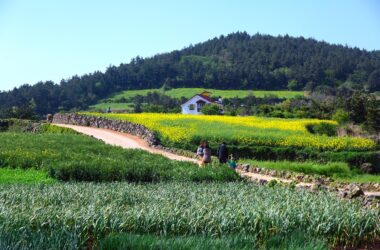
- Agritourism
Farm Tours: Discover the Charm of Rural Life
Environment Go!
The Environment | Nature | Humans
Best 12 Ecotourism Destinations in India
One of the reasons ecotourism is growing in popularity is because younger people are choosing to travel for purpose rather than just to the next place to visit.
Respecting the environment and local culture is the cornerstone of ecotourism. Discover how to lessen your carbon footprint and, for added benefit, learn how to volunteer and support the community.
Keep an eye out for inspiring ideas if you’re seeking novel experiences, to discover alternative lifestyles, and to connect with like-minded others. With its focus on combating climate change , preserving the environment , and assisting local people, this novel approach to travel offers a fresh perspective on preparing for a trip .
Table of Contents
What is Ecotourism?
“Responsible travel to natural areas that conserve the environment, sustain the well-being of the local people, and involve interpretation and education” is the definition of ecotourism, according to the International Ecotourism Society (TIES) .

Thanks to a global network of people, organizations, and the travel and tourism sector, which educates travelers and travel industry professionals about ecological challenges, such travel is made possible.
Not only can visiting natural regions be an excellent way to see breathtaking scenery, but it can also support conservation efforts , help protect fragile ecosystems, and aid local economies.
Minimal environmental impact and steady, equitable economic growth are essential for ecotourism to reach its full potential. Another fascinating choice for your subsequent Worldpackers volunteer assignment is ecotourism. where you may see environmental projects while also helping the community where you are.
By patronizing nearby companies and adopting an environmentally conscious outlook, you may engage in ecotourism right away. However, you can also participate in a wider community that supports many initiatives and causes. These actions have a beneficial effect and aid in preserving the environment for future generations.
This type of tourism places a strong emphasis on responsible travel and environmental sustainability. It entails going to national parks to take in the beauty of the natural world, watch wildlife, and discover local customs. Additionally, ecotourism can involve outdoor pursuits like hiking, camping, kayaking, and bird watching if you’re an outdoor enthusiast.
It’s crucial to keep in mind that your choices have effects when traveling in an environmentally conscious manner. This is being aware of how you interact with the world around you. You gain from these activities as well as yourself; for example, refraining from littering and honoring cultural norms.
Ecotourism: The Underpinnings of It
TIES outlines a few guiding principles for ecotourism: Beyond mitigating physical, social, behavioral, and psychological effects, ecotourism aims to foster a culture of environmental preservation and respect while offering both hosts and guests enjoyable experiences.
An ecotourism perspective on the part of the host creates value for the community and the industry; they should assist in providing guests with amazing experiences while heightening their awareness of local political, social, and environmental issues.
Benefits of Ecotourism
So, what are the key benefits of ecotourism and how does it operate? Let’s examine the state of the economy, the surroundings, and your personal experience.
- Raising the degree of understanding across cultural boundaries
- Preserving distinctive travel places for upcoming generations
- The creation of enduring income streams for tourist locations
- Raising consciousness of environmental issues
- Education Goals
1. Raising the degree of understanding across cultural boundaries
Participating in ecotourism will raise visitors’ awareness of a variety of local cultural features, and this is a compelling argument for the benefits of ecotourism.
2. Preserving distinctive travel places for upcoming generations
Instead of trying to minimize the negative effects of tourism, ecotourism seeks to improve a place as a result of tourism-related activities. The preservation of the distinctive features of travel locations for both current and future visitors is a significant value proposition.
3. The creation of enduring income streams for tourist locations
By involving more local workers in the provision of ecotourism services and allocating all or part of the money earned from ecotourism to a range of charitable causes that work to raise locals’ standards of living, ecotourism can effectively help reduce poverty in the community.
4. Raising consciousness of environmental issues
Engaging in ecotourism causes people to become more sensitive and conscious of a variety of environmental challenges, including deforestation, global warming, and the depletion of natural resources. This shift will have good effects on the environment and the future of the people involved.
5. Education Goals
Watching Netflix videos on the world’s most picturesque locations and how overtourism and climate change are destroying them is one thing; it’s quite another. It shocks you. Your goal is to change things. However, you’re not exactly sure where to start. And you’ve already forgotten about it again a few days later.
Firsthand experience with a problem tells a completely different tale. Assume that you are in the midst of a rainforest. Feel the crisp air on your skin while taking in the variety of nature sounds in the background.
Imagine diving into warm, clear seas that are surrounded by vibrant reefs, entertaining dolphins, and unusual creatures.
Travelers can learn about the needs of the local people and the area’s endangered biodiversity through ecotourism, while this is not meant to suggest that you can only make a difference if you have visited the location. You could have a really strong reaction to such an experience.
Additionally, tourists who are responsible will become more sensitive to and understanding of various cultures. Upon returning home, the enthusiasm and information acquired can instruct and motivate others.
Top 12 Ecotourism Destinations in India
- Bandipur National Park, Karnataka
- Goa traditional trip
- River Rafting in Rishikesh
- Sunderbans National Park, West Bengal
- Chilika, Orissa
- Kaziranga National Park, Assam
- Tiger travel in Ranthambore National Park, Rajasthan
- Dudhwa National Park, Uttar Pradesh
- Chhattisgarh – The tribal excursion
Kerala is a well-liked ecotourism destination because of its varied animals, tranquil backwaters, and verdant forests.
There are many national parks and wildlife sanctuaries in the state where visitors can see uncommon and endangered animal and bird species like tigers, elephants, and Great Indian Hornbills.

Thekkady’s Periyar National Park is a well-liked ecotourism destination, offering trekking, bamboo rafting, and birdwatching among other things.
The varied flora and fauna of the Silent Valley National Park, which includes numerous rare plant and animal species, are well-known.
Kerala’s backwaters are a popular destination for eco-tourists as well since they offer canoeing, kayaking, and boat rides that give visitors a close-up view of the local ecology.
Kerala’s Thenmala is India’s first ecotourism destination, renowned for its premium honey production. Being a renowned tourist destination in Kerala, it provides activities like boating, trekking, rock climbing, and jungle stays in huts.
Sikkim is an environmentally conscious travel destination with amazing scenery and a deep cultural legacy. With a focus on environmentally friendly travel and farming, Sikkim is the first and only organic state in India.

To preserve its distinctive flora and fauna, the state has established some protected areas, including the Varsey Rhododendron Sanctuary, the Fambong Lho Wildlife Sanctuary, the Maenam Wildlife Sanctuary, the Singba Rhodendron Sanctuary, and the Khangchendzonga National Park and Biosphere Reserve.
Sikkim offers a wide variety of ecotourism activities, including hiking, nature walks, and birdwatching.
Major Sikkim tourism attractions include Yumthang Valley, which is well-known for its hot springs and rhododendron forests, and Gangtok, the state capital with breathtaking vistas of the Himalayas.
Other well-liked locations include the Nathu La Pass, an ancient trade route connecting India and Tibet, and Tsomgo Lake, a glacial lake encircled by snow-capped mountains.
Visitors can participate in sustainable tourism activities while taking in Sikkim’s distinctive blend of cultural heritage and natural beauty.
3. Bandipur National Park, Karnataka
Among the parks in the Bandipur Wildlife Sanctuary, Bandipur National Park is one of the oldest. It is one of India’s largest wildlife sanctuaries and is located in the state of Karnataka. The Indian government has given it strong protection and it is a part of the Nilgiri Biosphere Reserve.

The location satisfies eco-place standards. Here, eco-friendly motels promote environmental sustainability by conserving water and energy.
Conserving water aids in the preservation of natural environments, which provide homes for valued species. Mysore is the closest train station and Bangalore is the closest airport to this tourist destination. After that, drive to the park.
4. Goa traditional trip
Goa, also known as a “beach lover’s paradise,” has breathtaking beaches with crystal-clear waves that will enthrall visitors of all stripes. In addition, you can explore the area’s historic and scenic surroundings. Goa’s beaches and pristine water attract tourists from all over the world.
There are a lot of birds in Goa, and tourists will see some in the town and on the grounds of the many temples. The beach at Morjim is the best site to go seabirding.
How do you get there? Goa is easily accessible by train because the majority of the state’s train stations are located in Margao. Vasco-da-gama and Madgaon are named as the main train stations.
5. River Rafting in Rishikesh
One popular tourist location is Rishikesh. Discovering this location offers lots of chances to see the breathtaking natural beauty and charm of the mountains. River rafting and other adventure sports have a ton of opportunities in this place.
You may experience the amazing fusion of picturesque rafting and ecological interpretation in the heart of the lush Himalayan terrain by going eco rafting, also known as ecological river rafting.
How do you get there? The closest airport to Rishikesh is Jolly Grant Airport in Dehradun. In addition, Rishikesh boasts a strong transport network that links it to other significant locations.
When is the ideal time to visit? The best months to go river rafting in Rishikesh are September through mid-November and March through the first week of May.
6. Sunderbans National Park, West Bengal
One of the most captivating natural reserves on the planet is Sunderbans. This remarkable location offers ecotourism opportunities without compromising the unique local flora and fauna.
You might thus take a brief vacation in harmony with the natural world. Even though the Bengal Tiger is the emblematic animal of this exceptional mangrove forest, tourists can also enjoy many other natural marvels.
There is one Eco museum in Sudarikati and two Nature Interpretation Centers in Sajnekhali and Bhagabatpore.
How do you get there? The nearby railhead, which is close to Sunderbans National Park, is Canning. Once there, make reservations for a cab to take you to Sunderbans National Park.
7. Chilika, Orissa
This is an advertisement for biodiversity featuring Asia’s largest brackish water lake. Moreover, the largest lagoon stretches over 1100 sq km on the east coast of India.
You can experience the squeaks of numerous migratory birds from Baikal, Siberia, Southeast Asia, and Central Asia by taking a boat ride in this lagoon. Every winter, countless migratory birds assemble here in large numbers.
Many local bird species can be seen at Mangalajodi year-round, in addition to the migratory birds, and several of them build their nests there.
How do you get there? By train, you may get to the Bhubaneswar railway station. Chilika can be reached from Bhubaneswar in two hours.
8. Kaziranga National Park, Assam
This is a national park located in the Indian state of Assam’s districts of Golaghat, Karbi Anglong, and Nagaon. Thirty percent of the world’s rhinoceros are found in this reserve. Among the many things to do is watch animals. One such pastime is bird watching.
Here, it’s also possible to travel under the leadership of elephants or jeeps. Avoiding hiking helps prevent violence toward people and animals. There are private resorts outside the adjacent park.
More than 500 different species of orchids, tart fruits, leafy vegetables, big varieties of cane, and native fish can all be found in the park. There are wild Asiatic water buffalo, deer, elephants, and bigger white-horned rhinoceroses in the park.
How do you get there? The closest airports to the park are Jorhat Airport and Guwahati International Airport, which are respectively 217 and 97 kilometers apart. One can also get there by train; Furkating, which is 75 kilometers from the park, is the closest station.
No Indian has ever denied themselves the desire to visit this breathtaking location at least once in their lifetime. Located in Kashmir, Ladakh is a union territory that is bounded to the north by the Karakoram area and to the south by the Himalayan Mountains.
Leh, Drass Valley, Kargil, Razi Khar, Suru Valley, Salt Valley, Markha Valley, and Ladakh monasteries are important tourist destinations. The Leh Palace is yet another noteworthy sight. There are options for trekking, visiting Buddhist monasteries, and viewing cave paintings.
To raise awareness and investigate eco-tourism potential, the Ladakh Ecological Development Group, the Mountain Institute, and the Snow Leopard Conservancy organized a workshop in May 2001.
How do you get there? Ladakh is 494 kilometers from Manali and 434 km from Srinagar. To get to Ladakh, you can take a JKSRTC bus, hire a taxi, or ride in a jeep.
10. Tiger travel in Ranthambore National Park, Rajasthan
Ranthambore National Park, a popular destination in Sawai Madhopur in the state of Rajasthan, is a prime illustration of Project Tiger’s conservation efforts in India. Renowned for its tigers, Rajasthan’s Ranthambore National Park is a photographer’s dream come true.
For those who love nature, this location is a treasure. You get to investigate the magnificent creatures in the wasteland. You may experience ecotourism at its best because of government incentives and the work of conservationists.
How do you get there? Sanganer Airport is the closest airport. To get to Ranthambore, you can take a bus or taxi from Sanganer Airport. Sawai Madhopur is the closest railhead.
11. Dudhwa National Park, Uttar Pradesh
There are numerous endangered animal species found in Dudhwa National Park, including tigers and rhinos. One of India’s ironic bio-reserves is Dudhwa. This area protects a wide variety of animal, bird, and reptile species.
This has countless opportunities for ecotourism. Covering an area of 811 square kilometers and home to wetlands, grasslands, and dense forests, this location is ideal for observing large populations of tigers and swamp deer.
It is a perfect place for wild creatures to learn about the peace and comfort that nature can provide in a more tolerant manner.
How do you get there? The best route would be to go to Lucknow and then take a train or car to Dudhwa. Some trains can take you to Lucknow. Charbagh railway station is the closest train station.
12. Chhattisgarh – The tribal excursion
You will see the backyards of indigenous people on a tour here. Numerous ancient tribal cultures are still in existence in Chhattisgarh. There are remnants of ancient cultures that have not been influenced by modernity.
To protect these as national assets, the government has taken action. With so many options for ecotourism, Chhattisgarh looks to be a great vacation spot for those interested in wildlife, the outdoors, and learning about the distinctive tribal way of life in the area.
How do you get there? Using India’s extensive rail network to go to Chhattisgarh from any part of the country is undoubtedly the best option. The two main intersections where freight and passenger trains connect the state to other parts of India are Raipur and Bilaspur.
When is the ideal time to visit? In the wintertime. The weather is nice at that time of year.
For those who adore the beauty of Mother Nature, ecotourism is the best option. Visit these locations to determine their meaning.
In India, ecotourism has become a movement that is reflected in remote locations where young people are regularly seen picking up leftovers, teaching impoverished children, and fostering local development. Thus, when you plan your trip to India, let the environment take the lead.
Recommendations
- Top 10 Eco-Friendly Construction Companies .
- 11 Environmental & Economic Importance of Grasses .
- 13 Innovative Eco-Friendly Materials for Products .
- 5 Practices To Help Protect And Restore Seagrass Ecosystems .
- A Comprehensive Exploration of the 10Rs for Eco-Conscious Living

Providence Amaechi
A passion-driven environmentalist by heart. Lead content writer at EnvironmentGo. I strive to educate the public about the environment and its problems. It has always been about nature, we ought to protect not destroy.
- Providence Amaechi https://environmentgo.com/author/amaechi-providence/ 3 Environmental Services in a Hospital
- Providence Amaechi https://environmentgo.com/author/amaechi-providence/ 19 Environmental Startups in Boston
- Providence Amaechi https://environmentgo.com/author/amaechi-providence/ Environmental Analysis, Types, Techniques, Importance, and Examples
- Providence Amaechi https://environmentgo.com/author/amaechi-providence/ Environmental Accounting, Types, Objectives, Examples
- Biodiversity
- Endangered animals and species
- Natural Resources
Leave a Reply Cancel reply
Your email address will not be published. Required fields are marked *
Save my name, email, and website in this browser for the next time I comment.
Notify me of follow-up comments by email.
Notify me of new posts by email.
Recent Posts
- 10 Best Practices for an Eco-Friendly Building Foundation
- Top 10 Longest-Living Moth Species (Photos)
- 5 Negative Environmental Impacts of Soy Milk
- Best Business Practices for Sustainable Landscaping
- 3 Environmental Services in a Hospital

- Destinations
- Adventure Tours
- Religious Tours
- Trekking Tours
- Weekend Getaways
- International NEW
International

Best Eco-Tourism Destinations in India
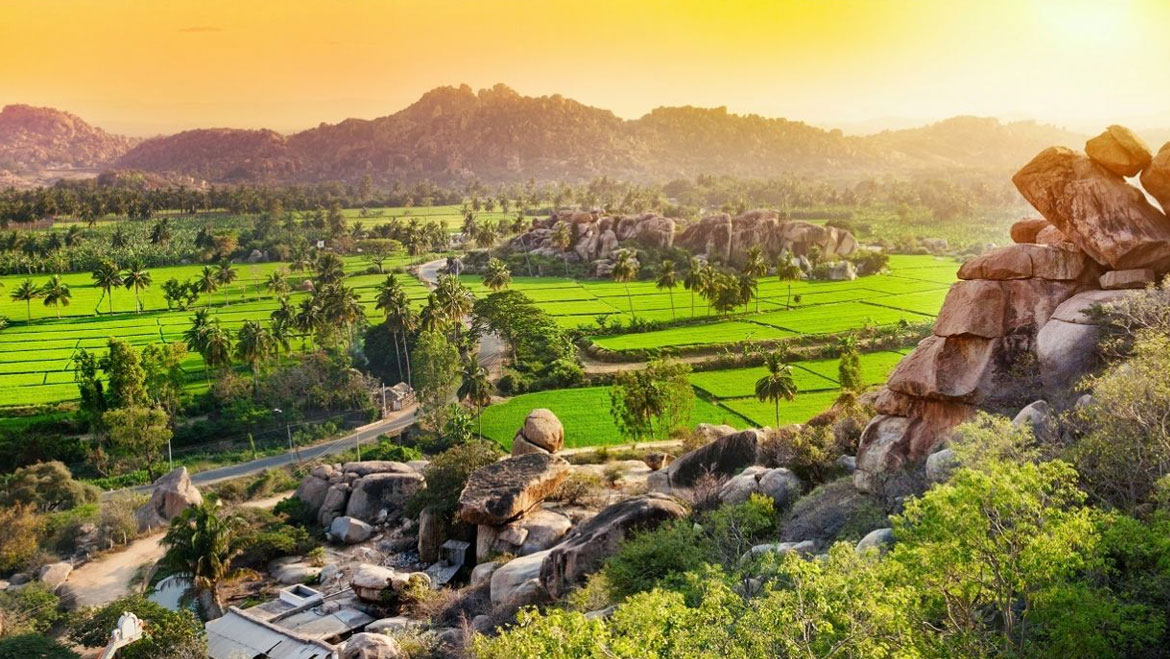
“Eco-Tourism in India: A Refreshing Journey through a Highly Diversified Nature”
Stretching from the Himalaya to coast to coast legacy, India with its highly diversified nature is one of the popular eco-tourism destinations in the world. Whether it is the backwaters of Kerala or shifting sand dunes of Thar Desert… the wetlands in the Himalayan region or natural caves in the Khasi and Garo hills, India throughout the decades has been a one stop eco-tourism hub housing a good population of flora and fauna. The country is just not about tracing the historical diorama BUT the pleasure treasure pours when you roam like a nomad to seek the natural panorama. Let’s go for a refreshing journey through some of the best ecotourism destinations in India from this article.
Recommended Tours
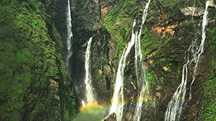
Kerala Backwaters
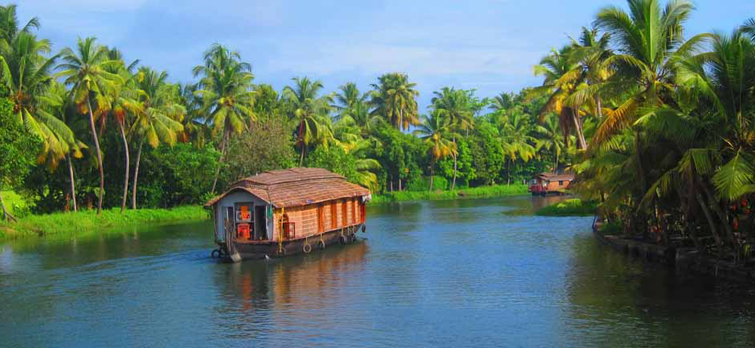
The backwaters of Kerala have its own charm and life on it is unlike the other destinations in India. Amidst the paddy fields and lush green palm grove these backwaters has its own gentle rhythm hewed out from the rivers which flows down from the Western Ghats to the coast. Enjoy a frolic cruise on the backwaters along the breathtaking vivid contrasts of lush greens and deep blues on the houseboats, known as Kettuvallam which are the cargo boats that once plied in the backwaters to carry heavy cargo such as Rice, Coconut & Spices and also to provide living accommodation for the boatman. These are now changed over to luxurious accommodation for eco friendly travelers.
Where to stay: ATDC Houseboats, Alleppey Nearest Railhead: Ernakulam Junction railway station, Cochin Nearest Airport: Cochin International Airport
How to Plan a Perfect Holiday Trip to Kerala
Munnar, Kerala
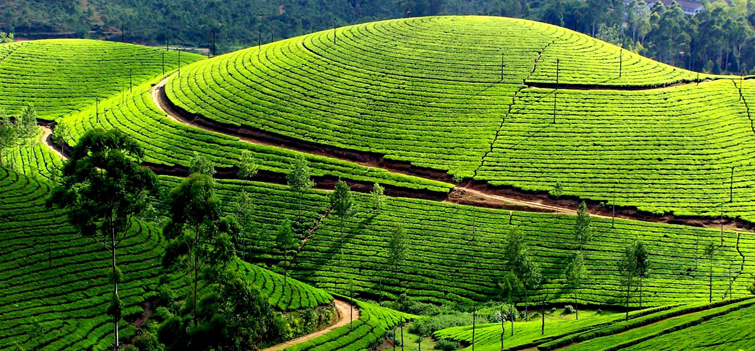
Covered with an extensive layer of forests, grasslands and tea orchards and dotted with several species of exotic flora including the rare Neelakurinji flower, Munnar at an elevation of 1,700 meters is a snug hideout for eco travellers. The small but picture-book hill town in Idukki district in the Western Ghats is home to several protected areas that houses many threatened and endemic species of flora and fauna including the Nilgiri Tahr, Grizzled Giant Squirrel, Nilgiri Wood-pigeon, Elephant, and Gaur amongst the mammals; and Nilgiri Wood Pigeon , Malabar Whistling Thrush , Orange-Crowned Warblers, Nilgiri Pipit, Scarlet Minivet, and Broad-tailed Grassbird amongst the avifauna. If you are travelling to Munnar during the spring and summer seasons you might chance upon the purple-blue hue patches beautifully lying over the lush green bed… that would be a streak of luck though. The gushing streams gutting through the whispering woods and winding lanes cutting through mountains make Munnar one of the popular eco green tourism destinations in India.
Where to stay: Misty Mountain Resort Nearest Railhead: Ernakulam Junction railway station, Cochin Nearest Airport: Cochin International Airport
100 Interesting Facts You Didn’t Know about Kerala
Thenmala, Kerala
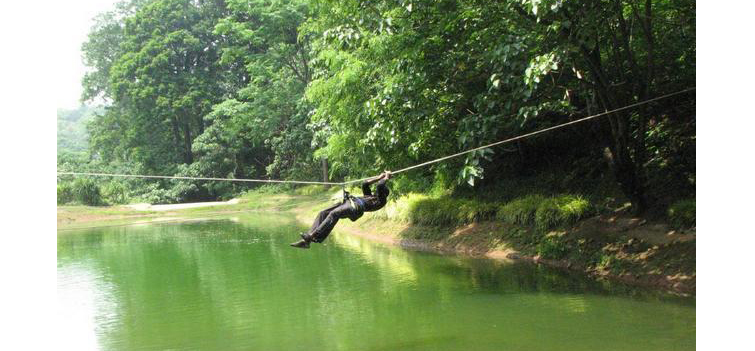
India’s first planned ecotourism destination, Thenmala in Kollam district is majestically set in the midst of evergreen forests in the lap of the Western Ghats and hosts a wide range of adventure and leisure activities for all kind of travellers. Its growing popularity among both domestic and international tourists is due to its unique vistas, bio-diversity and functioning. Forest trails and night camping in the middle of the jungle allows you to snuggle into nature, whereas a peep into the traditional tree house that is used by the forest dwellers turns your leap into the wild more exciting. Thenmala also boosts a lake where one can go for boating, a rope bridge, a musical fountain, and offers many activities like rappelling, rock climbing, and biking. The Thenmala Eco-Tourism is divided into three different zones such as the Culture Zone, where one can spree into savouring various Keralian cuisine; Leisure Zone, where one can go for a refreshing walk almost up to the dam; and Adventure Zone, where one can go for activities like hiking, rapelling, biking and rock climbing.
Where to stay: Apichayan’s Cliff Resort Nearest Railhead: Thiruvananthapuram Nearest Aiprort: Thiruvananthapuram Airport
Why You Should Visit Kerala in Monsoon Season
Thodupuzha, Kerala
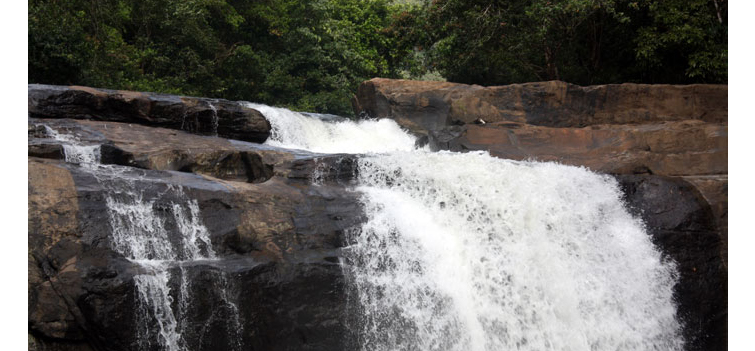
The gateway to the Thommankuthu Waterfalls in Idukki district , Thodupuzha is one of the least explored destinations in India that snug knavishly in the Western Ghats. The seven-step waterfall that was revealed to the world in 1920 by Mr. Thommachen Kuruvinakunnel, a legendary hunter, is one of the major eco-tourism destinations in Kerala. The pleasant surrounding dolled up with an evergreen forest blanketed over the rolling hills and housing several species of avifauna and mammals… squeeze gently in the frame of a perfect eco-tourism holiday.
Where to stay: Vettoms Lakeview Resort Nearest Railhead: Ernakulam Junction railway station, Cochin Nearest Airport: Cochin International Airport
Do You Know about the Popular Hill Stations of Kerala?
Eravikulam National Park, Kerala
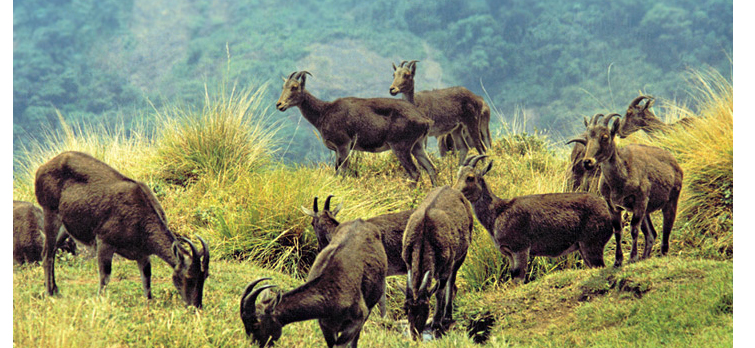
Home to one of the endangered species, Nilgiri Tahr, the Eravikulam National Park that covers an area of 97 square kilometers and ranges from an altitude of 1,200 meters to 2,700 meters is another popular eco-tourism place in Kerala. The park comprises of high altitude grasslands and is crisscrossed by several perennial streams that merge to form the tributaries of the Periyar River, Cauvery River, and Chalakudiyar River. The Lakkom Water Falls on the course of Pampar River is one of the major attractions in Eravikulam National Park. The park is a haven for wildlife enthusiasts as it houses a wide range of animals, birds, insects, amphibians and plants. Further, one can also indulge in activities like forest trails, trekking and wildlife photography.
Where to stay: Tea Valley Resort, Munnar Nearest Railhead: Ernakulam Junction railway station, Cochin Nearest Airport: Cochin International Airport
16 Popular National Parks & Sanctuaries in Kerala
Periyar National Park, Kerala
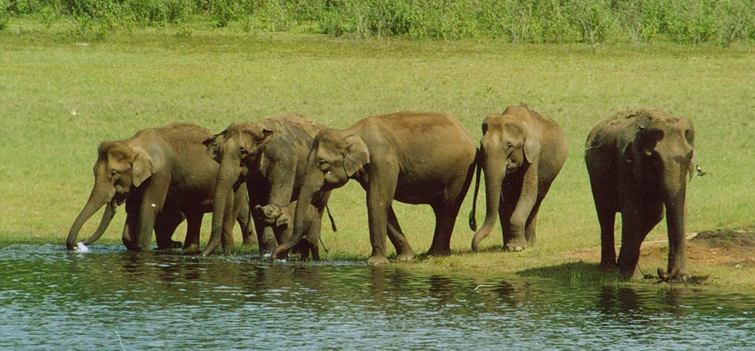
Covering a core area of 350 square kilometers, the Periyar National Park that is located in the Cardamom Hills and Pandalam Hills of the southern Western Ghats is one of the most visited national parks in South India. The all-embracing environment turns out to be a paradise for eco-travellers that includes wildlife enthusiast, botanists and nature photographers. The Periyar National Park is notable as an elephant reserve and tiger reserve and also houses several other species of mammals, reptiles, insects, amphibians, and birds. The submerged trees in Periyar Lake are also a treat to the eyes.
Where to Stay: Bamboo Grove Eco-Lodge Nearest Railhead: Kottayam Nearest Airport: Madurai Airport
Top 15 Wildlife Tourism Places You Must Visit in South India
Kodaikanal, Tamil Nadu
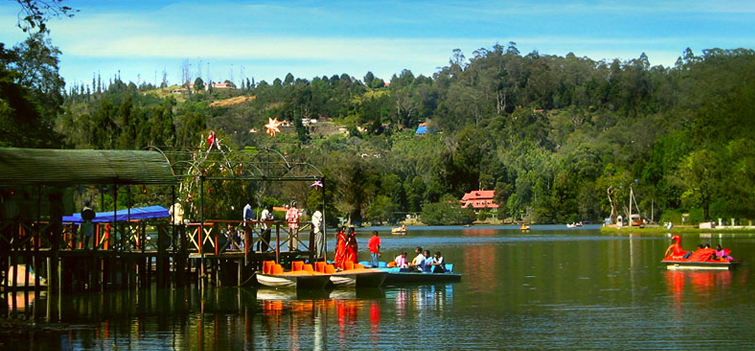
One of the popular weekend getaways in South India, Kodaikanal is graciously set in the Palani Hills, between the Parappar and Gundar Valleys, of the eastward spur of Western Ghats at an approximate altitude of 2,130 meters. Kodaikanal was dotted in the map of India as a summer retreat by the British in 1845 and later due to its propitious location gifted by the forests and grasslands topping the hillsides… it bloomed as one of the major eco-places in India. This mighty hill station in South India is endowed with a nature’s basket comprising the montane rainforests that houses some of the endemic flora and fauna, waterfalls, and perennial streams cutting through the valleys. The Kodaikanal Lake, Bryant Park, Coaker’s Walk, Bear Shola Falls, Silver Cascade, Guna Caves, Dolphin’s Nose, Pillar Rocks, and Berijam Lake are some of the major natural attractions in Kodaikanal. Further, the Palani Wildlife Sanctuary composing a mystical environment tuned up with several waterfalls, namely the Fairy Falls, Neptune Falls, Pambar Falls, Thaliar Falls, Alanthoni Falls, Poombarai Falls, Skamba Falls, and more… is no doubt a haven for naturalists and worth exploring. The proposed Palani Hills Wildlife Sanctuary and National Park, which will be an up gradation and expansion of the Palani Wildlife Sanctuary, will cover an approximate area of 737 square kilometers giving shelter to several threatened species and plant life. The region is mostly inhabited by the Paliyan tribes who are the descendants of the Dravidian people and are famed as traditional nomadic hunter-gatherers, honey hunters and foragers.
Where to stay: Black Band Cottages Nearest Railhead: Kodai Road Nearest Airport: Madurai Airport
Honeymoon in Kodaikanal- Romance Enveloped in Mist!
Coorg, Karnataka
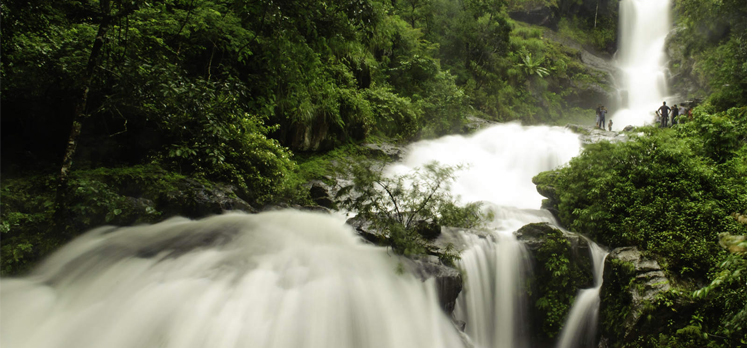
Home to the Kodava tribe, which is one of the indigenous tribes of India, Coorg is definitely a place of complete bliss, delight and peace that is profusely supplied with plant and animal species. Coorg stretches from an elevation of 900 meters to 1,800 meters and is popular for hosting several spice and coffee plantations. Over the years… Coorg, having vast expanse of elements of nature, has flourished as another eco destinations in India that is located on the western spur of the Western Ghats. It comprises of three wildlife sanctuaries and one national park that includes the Brahmagiri, Talakaveri, and Pushpagiri Wildlife Sanctuaries, and the Nagarhole National Park that is mostly dotted with bamboo, rosewood, teak, sandalwood, silver oak, and spice plants and housing some of the endangered mammals, reptiles, insects and amphibians. Coorg as an eco-region further constitutes several waterfalls and gushing rivers… thus calving one of the leading water sports in India, river rafting, which can be possible in Barapole and Dubare. Other adventure and leisure activities in Coorg include trekking, hiking, rock climbing, boating and angling.
Where to stay: Alpinia Estate Stay Nearest Railhead: Mysore Nearest Airport: Mandakalli Airport, Mysore
The Indigenous Colour of India – The Indian Tribes
Nagarhole National Park, Karnataka
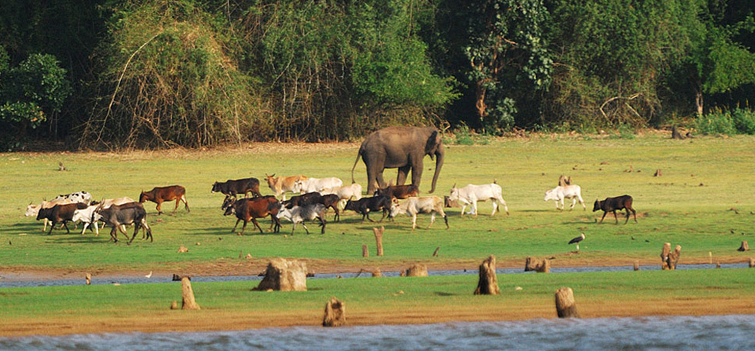
Comprising the districts of Coorg and Mysore and covering an approximate area of 644 square kilometers, the Nagarhole National Park is home to some of the endemic animal species like tiger, leopard, and dhole. Other common mammals and reptiles that are spotted are chital, sambar, barking deer, jackal, sloth bear, mongoose, hyena, wild boar, squirrels, vine snake, rat snake, bamboo pit viper, Indian rock python, Indian monitor lizard, and common toad. Amongst the avifauna… darters, oriental white ibis, greater grey headed fish eagle, and red headed vulture are some of the ‘near threatened’ ones, whereas the blue winged parakeet, Malabar grey hornbill, and the white bellied treepie remain the major attractions being rare spotted for wildlife enthusiasts. The Nagarhole National Park, which is a part of the Nilgiri Biosphere Reserve, is also one of the Tiger Reserves in India and together it is under consideration by the UNESCO World Heritage Committee for selection as a World Heritage Site due it is rich biodiversity.
Where to stay: Jungle Inn Nearest Railhead: Mysore Nearest Airport: Mandakalli Airport, Mysore
Explore the Diverse Wildlife at Nagarahole National Park
Bandipur National Park, Karnataka

One of the most popular national parks in India and established as a tiger reserve under Project Tiger in 1974, the Bandipur National Park spans over an area of 874 square kilometers and is a part of the Nilgiri Biosphere Reserve. The park comprises of various plant species that include Teak, Rosewood, Sandalwood, Indian-laurel, Indian Kino Tree, Giant Clumping Bamboo, Clumping Bamboo, Indian Gooseberry, Black Myrobalan, Flame of the Forest, Satinwood, Black Cutch, Axlewood, and more. It also gives shelter to a good population of animals including the endangered and vulnerable species like Indian elephants, gaurs, tigers, sloth bears, muggers, Indian rock pythons, four-horned antelopes and dholes AND other commonly spotted mammals and reptiles like chital, langurs, squirrels, pythons, vipers, rat snakes, lizards, Indian pond terrapins, and muggers. The Bandipur National Park is also a fairy tale world where once can also spot more than 100 colourful butterflies and other insects. With such a rich ecology the park makes for a refreshing escape into the wild for eco-tourists and wildlife photographers.
Where to stay: Bandipur Safari Lodge Nearest Railhead: Mysore Nearest Airport: Mandakalli Airport, Mysore
7 Best Places to Visit near Bandipur National Park
Galgibaga Beach, Goa

Despite being located in one of the busiest tourist hubs in India, the Galgibaga Beach in Goa still remains the cleanest beach in India and is well known for turtle nestling. Being one of the secluded beaches in India that is close to the popular Palolem Beach resort, the Galgibaga beach is least affected by tourists even during the peak season. Thus it offers you a pleasant getaway where you can dream of an ideal walk over the solitary silver sand dotted with palm trees. If you are travelling during the winter season then you might be lucky to see some Olive Ridley turtle nests/eggs. Because of this ecological factor… the Galgibaga Beach comes under the purview of the forest department.
Where to stay: The Fern Gardenia Resort, Canacona Nearest Railhead: Madgaon Nearest Airport: Dabolim Airport
Best Things to Do and See in Goa
Tyda, Andhra Pradesh
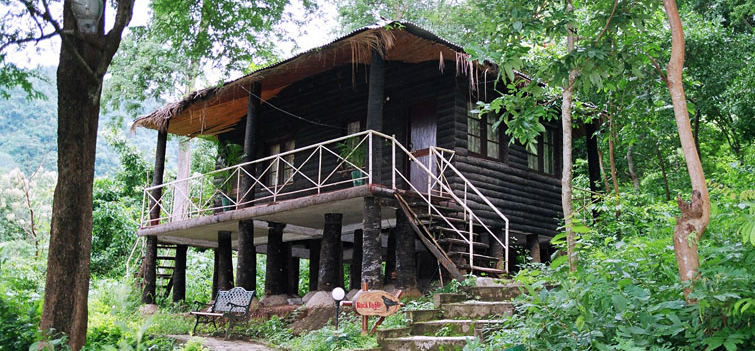
The bountiful nature surrounding this small village of Tyda is virtual and vestal modesty that is secretly set in the Eastern Ghats at an elevation of 700 meters (approximately). It is one of the unexplored places in India and thus springs up as an eco-tourism getaway in India with a rich bed of exotic flora including medicinal and aromatic plants. The region is also home to several endemic animals and birds such as the chital, sambar, Panther, Wolf, Wild Dog, Hyena, Sloth Bear, Gaur, Black Buck, Chinkara, Chowsingha, and Nilgai amongst the mammals AND red-chested pod chards, pintails, herons, egrets, migratory ducks, water birds, pelicans, teals, ibises and storks amongst the bird species. The region also facilitates many activities like camping, forest trails and trekking.
Where to stay: Jungle Bells Nearest Railhead: Visakhapatnam Nearest Airport: Visakhapatnam International Airport
Indian Village Tour: A Walk through Real India
Maredumilli, Andhra Pradesh
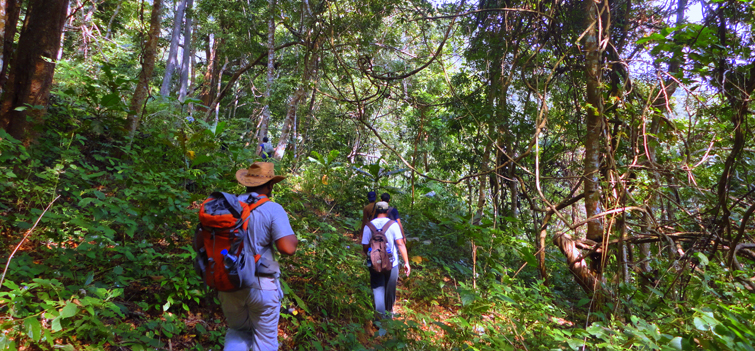
Another least travelled destination in India, the Maredumilli village in the Eastern Ghats exhibits a rich biodiversity with dense wood and grasslands crisscrossed by several small perennial streams. The region is also home to several tribal communities who in support with the Andhra Pradesh Forest Department actively participate in conserving the eco-tourism project.
Where to stay: Jungle Star Resort Nearest Railhead: Visakhapatnam Nearest Airport: Visakhapatnam International Airport
Best 15 Destinations in India for Solo Women Travellers
Chilika, odisha.
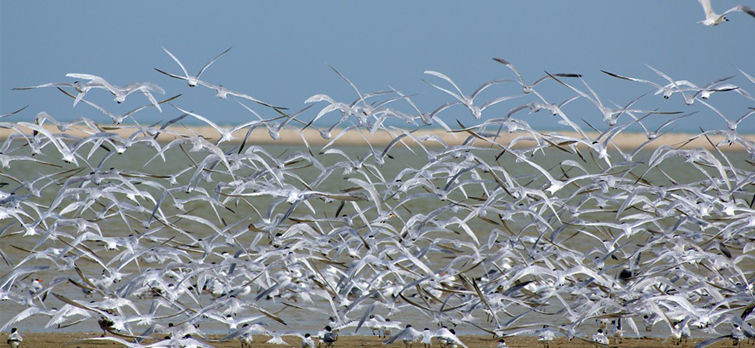
India’s largest coastal lagoon and the world’s second largest… the Chilika Lake and its surrounding environment are home to a number of migratory birds and animal and plant species. The area, covering over 3,500 square kilometers, houses the Irrawaddy Dolphins, green sea turtle, dugong, blackbuck, Spoon billed sandpiper, limbless skink and fishing cat amongst some of the endemic species; Milk fish, Indo-Pacific tarpon, Ten pounder, Bream, Hilsa, and Mullet amongst some of the aqua fauna; Greater and Lesser Flamingos, Goliath Heron, Grey and Purple herons, Egrets, Spoonbills, Storks and Black-headed Ibis amongst some of the migratory birds; and Asiatic Dowitchers, Dalmatian Pelican, Pallas’s Fish-eagles, migrant Spoon-billed Sandpiper and Spot-billed pelican from some of the rarest bird species. The ecosystem dotted with more than 700 species of flowering plants is also a shelter to a large number of mammals, reptiles and other amphibians. The region comprising a group of small islands was declared as a wetland of international importance by the Ramsar Convention and is one of the major eco-tourism destinations in India that encourages the wildlife photographers, bird lovers, and naturalists.
Where to stay: Panthanivas Barkul Nearest Railhead: Balugaon Nearest Airport: Biju Patnaik International Airport, Bhubaneshwar
Know about 30 Popular Lakes in India
Sundarbans National Park, West Bengal
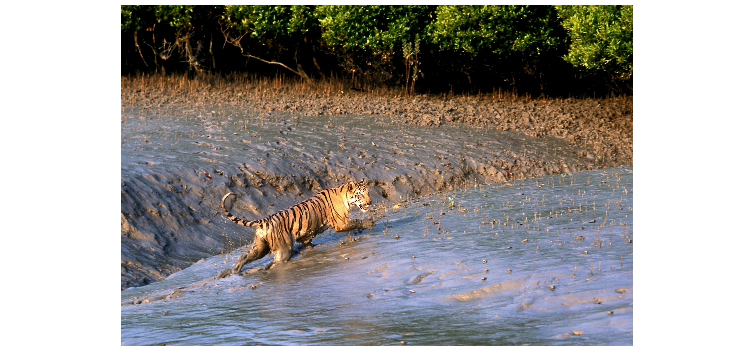
Home to the world’s largest mangrove forest, the Sundarbans National Park covers an approximate area of 1,330 square kilometers. It is the royal residence of the Bengal tiger and the region with 54 small deltaic islands is also a shelter to a variety of bird, reptile, invertebrate species and amphibians. Some of the endangered species, other than the Royal Bengal Tiger, which are found in the Sundarbans National Park are the Saltwater Crocodile, River Terrapin, Olive Ridley Turtle, Gangetic dolphin, Ground Turtle, Hawks Bill Turtle and Mangrove horseshoe crab. Among the endemic marine mammals… the Bryde’s whale, Humpback whale, Irrawaddy Dolphins, Ganges River Dolphins, and Humpback Dolphins are sparsely found near the coastal area. Many conservational projects are being undertaken by the government to protect the rich biodiversity of Sundarbans National Park, which is one of the best national parks in West Bengal. The park being located at the confluence of many distributaries of the Ganges and Bay of Bengal receives some unique geographical features, mudfalts being one of those features that is largely dependent on tidal currents. The Chargheri Char mudflat in the Sunderbans is open for the tourists, and can be visited during low tide.
Where to stay: Royal Bengal Resort Nearest Railhead: Howrah and Sealdah Nearest Airport: Netaji Subhash Chandra Bose International Airport, Kolkata
Popular National Parks and Wildlife Sanctuaries in West Bengal
Khangchendzonga Biosphere Reserve, Sikkim

Covering an approximate area of 1,784 square kilometers and ranging from an altitude of about 1,800 meters to 8,500 meters… the Khangchendzonga Biosphere Reserve or Khangchendzonga National Park is one of the high altitude national parks in India and the only national park in Sikkim. It is home to a large variety of alpine vegetations including medicinal plants, animals and birds at different altitude and thus representing a rich ecosystem that also include many glaciers, waterfalls, lakes and streams. Amongst the mammals the snow leopard, Himalayan Tahr, wild dog, Himalayan black bear, red panda, Himalayan blue sheep, serow, goral and takin are the major attractions for wildlife enthusiasts… and birds like Blood Pheasant, Satyr Tragopan, Osprey, Himalayan Griffon, Lammergeier, Tragopan Pheasant, Green Pigeon, Tibetan Snowcock, Snow Pigeon, Impeyan Pheasant, Asian Emerald Cuckoo, Sunbird and Eagle make it a haven for bird lovers. The Khangchendzonga Biosphere Reserve also offers lot of adventure activities like trekking, hiking, and camping… which makes it easier for the travellers to explore the rich biodiversity. The Green Lake Trek and Dzongri Goechala Trek are some of the best alpine treks in Sikkim that passes through the Khangchendzonga Biosphere Reserve.
Where to stay: Red Palace Hotel and Resort, Yuksom Nearest Railhead: New Jalpaiguri Nearest Airport: Bagdogra Airport
Check out Popular Trekking Routes in Sikkim
Kaziranga National Park, Assam
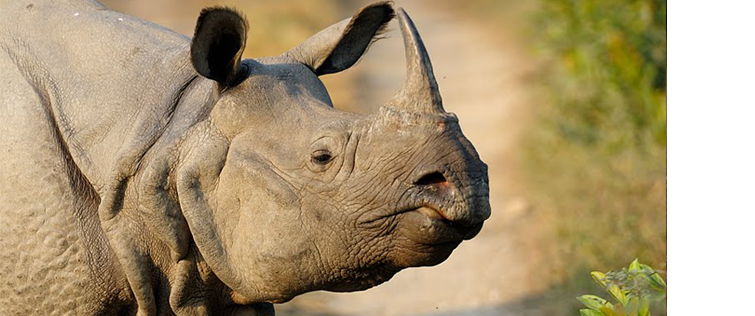
A world heritage site that is the home to the Great One-horned rhinoceros, the Kaziranga National Park, covering an approximate area of 430 square kilometers, is one of the best national parks in North East India that features a highly diversified ecosystem. With the influence of the River Brahmaputra and its tributaries… the Kaziranga Park mostly comprises of fertile and alluvial soil and also provides some unique geographical features such as sandbars, beels, and chapories. It houses a good population of mammals, reptiles, insects, amphibians and birds. Among the animals… tigers, leopards, hispid hare, fox, jackals, bears, and more are sighted AND from the bird kingdom… the Great Indian Hornbill and Wreathed Hornbill, Old World babbles, and vultures remain the major attractions. The Kaziranga wildlife sanctuary is also one of the largest homes to reptiles like Reticulated Python , Rock Python, and King Cobra .
Where to stay: Nature Hunt Eco Camp Nearest Railhead: Guwahati Nearest Airport: Lokpriya Gopinath Bordoloi International Airport, Guwahati
12 Fantastic Animals to Spot in India’s National Parks
Majuli, Assam
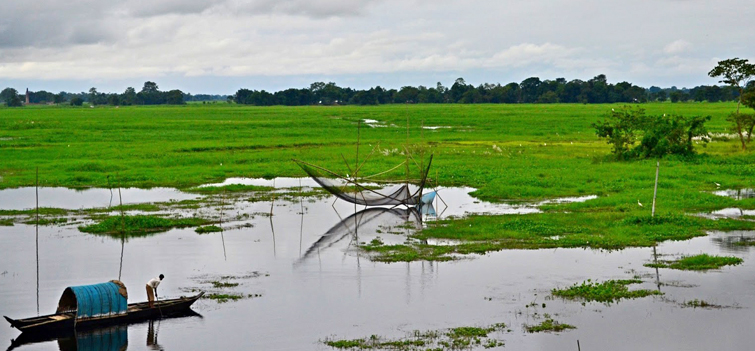
The largest river island in the world that is located in the Brahmaputra River in Assam, Majuli is home to several migratory birds. The island is mostly inhabited by the Deoris , Sonowal Kacharis and Mising tribes. Nonetheless… influenced by the Brahmaputra River, the island comprises a unique ecosystem and preserves a rich agricultural base. The region is also home to a large number of amphibians.
Where to stay: Uttar Kamalabari Satra, Jorhat Nearest Railhead: Jorhat Nearest Airport: Jorhat Airport
Know about 10 Most Visited Travel Destinations in Assam
Mawlynnong, Meghalaya
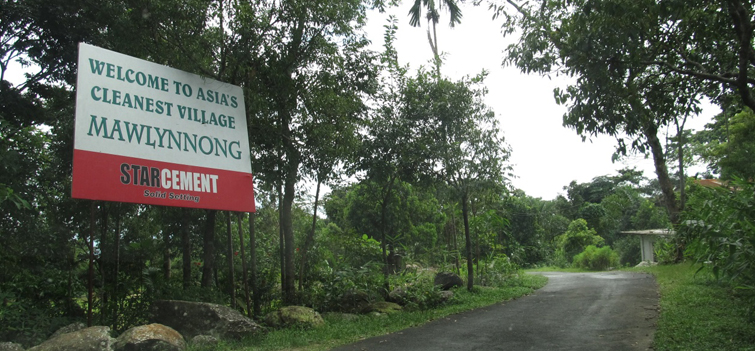
Located in the East Khasi Hills in Meghalaya, Mawlynnong is considered as Asia’s one of the cleanest villages in the midst of a rich biodiversity. The area surrounding the Mawlynnong village is a basket of abundant natural beauty comprising of an evergreen forest that is a shelter to a large number of animal and bird species, living Root Bridge, waterfalls and natural caves.
Where to stay: Village guesthouses Nearest Railhead: Guwahati Nearest Airport: Lokpriya Gopinath Bordoloi International Airport, Guwahati
Top 20 Things to Do in Shillong
Jotsoma village in Kohima, Nagaland

One of the remotest villages of India that is located deep in the indigenous territory of Nagaland and close to Kohima… the Jotsoma village is considered as one of the best eco-tourism destinations in North East India that host abundance natural beauty. The village, in the middle of highly diversified eco-system, is mostly inhabited by tribal settlements. The region is an ideal location for birding.
Where to stay: Hotel Japfu, Kohima Nearest Railhead: Dimapur Nearest Airport: Dimapur Airport
Must Visit National Parks & Wildlife Sanctuaries in Nagaland
Namdapha National Park, Arunachal Pradesh
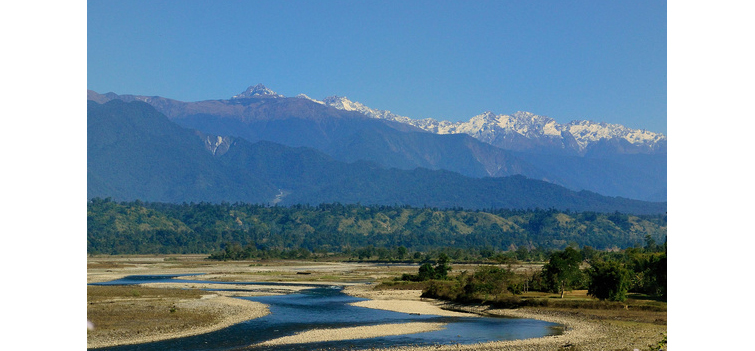
One of the largest national parks in India that covers an approximate area of over 1,985 square kilometers, the Namdapha National Park is widely known for housing four kinds of felines – the common Indian leopard, snow leopard, clouded leopard and tiger. Nonetheless the vast ecosystem comprising of an extensive montane forest and dotted with several species of plants, diversified landscape at different altitude that ranges from an elevation of 500 meter to 4,500 meters… makes it an eco-tourism haven.
Where to stay: Forest rest houses Nearest Railhead: Tinsukia Railway Station, Assam Nearest Airport: Dibrugarh Airport, Assam
20 Must Visit Destinations in Arunachal Pradesh
Nanda Devi Biosphere Reserve, Uttarakhand
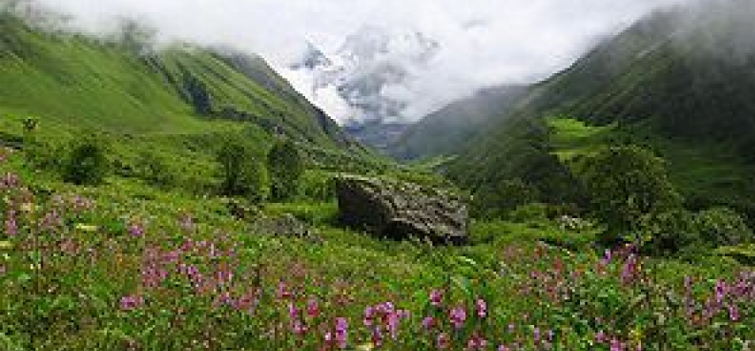
Another UNESCO World Heritage Site because of hosting an extreme and unique biodiversity, the Nanda Devi Biosphere Reserve that constitutes the Valley of Flowers National Park and Nanda Devi National Park … is a travellers’ paradise. Not only because of its high altitude and highly diversified landscape that fascinates trekkers and mountaineers, BUT the vast expanse of forest, dotted with more than 600 species of flowering plants and also medicinal plants and other alpine trees, giving shelter to some of the endemic Himalayan animals and birds… pulls in a large number of wildlife enthusiasts, naturalists, and leisure travellers.
Where to stay: GMVN Tourist Bungalow, Joshimath Nearest Railhead: Kathgodam Railway Station Nearest Airport: Jolly Grant Airport, Dehradun
In the Heart of Incredible India: 30 Popular UNESCO World Heritage Sites in India
Great Himalayan National Park, Himachal Pradesh
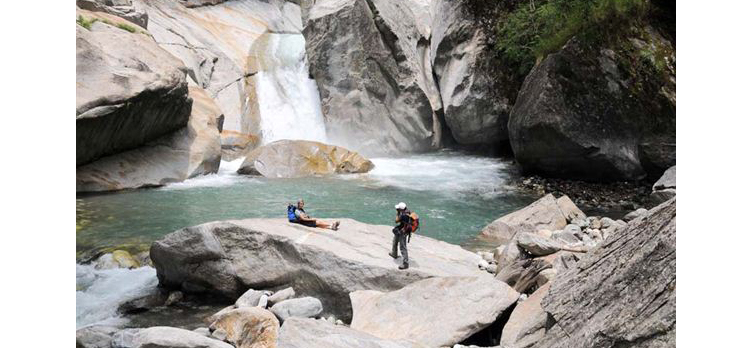
Spreading over an area of 1,170 square kilometers and ranging from an altitude of 1,500 meters to 6,000 meters, the Great Himalayan National Park is home to more than 300 fauna species and numerous plant species. The park because of comprising an extensive exceptional natural beauty and conservation of biological diversity… with alpine meadows, several streams, lakes, glaciers and snow capped peaks has been recently declared as a UNESCO World Heritage Site.
Where to stay: Community Training & Tourist Center, Sairopa Nearest Railhead: Joginder Nagar Railway Station Nearest Airport: Kullu Manali Airport or Bhuntar Airport
30 Must Visit Tourist Places and Attractions in Himachal Pradesh
Tsomoriri Wetland Conservation Reserve, Ladakh
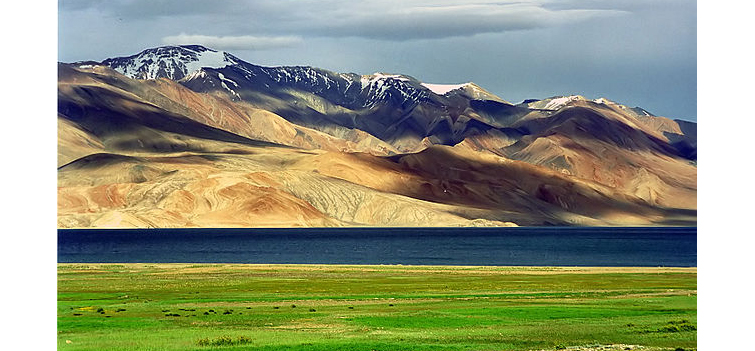
Located at an altitude of 4,595 meters, the Tsomoriri Wetland Conservation Reserve comprises of the Lake Moriri , which is one of the high altitude lakes in India, and its surrounding environment that include the Changthang plateau region. The area is home to some of the endemic alpine animal and bird species including the Tibetan Wolf and Snow Leopard among the mammals, and Black-necked Cranes, Bar-headed Geese , Brown-headed Gulls, Great Crested Grebe, Ferruginous Pochard, Black-necked, and Grebe Podiceps nigricollis among the bird species.
Where to stay: Camping Nearest Railhead: NA Nearest Airport: Kushok Bakula Rimpochee Airport, Leh
25 Best Places to Visit in Jammu & Kashmir
Ranthambore National Park, Rajasthan
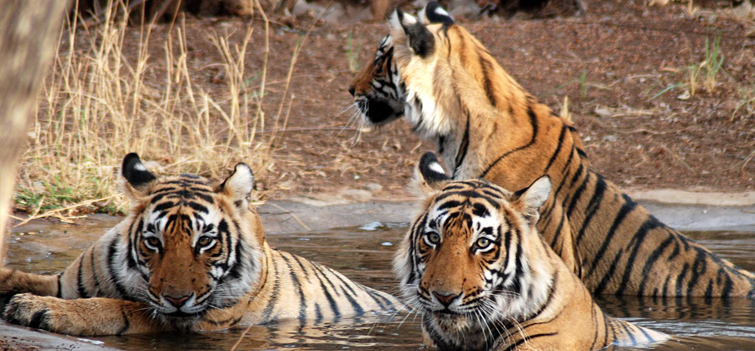
Popular for its tiger population, the Ranthambore National Park that covers an area of 392 square kilometers is another best eco-tourism destination in India having diverse landscape layered by dry deciduous forest. The Ranthambore National Park is home to several animal and bird species that include the tiger, leopard, nilgai, wild boar, sambar, hyena, sloth bear and chital among the mammal species AND Graylag Goose, Woodpeckers, Indian Gray Hornbills, Parakeets, Asian Palm Swift, Dove, Sandpipers, Gulls, Terns, Great Crested Grebe, Eagles, Darters, Cormorants, Flamingos, Ibis, Pelicans, Storks, Pittas, Shrikes, Treepies, and more among the bird species.
Where to stay: Vanya Vilas Nearest Railhead: Sawai Madhopur Nearest Airport: Jaipur International Airport
13 Best Places to Visit in Ranthambore
Kanha National Park, Madhya Pradesh

Stretching over an area of 940 square kilometers and comprising of more than 1000 species of flowering plants, the Kanha National Park is home to a significant population of Royal Bengal Tigers, leopards, sloth bears, Barasinghas and Indian wild dogs. Blessed with a vast and rich biodiversity that is covered with grasslands, sal and bamboo forests, and ravines… the Kanha National Park in Madhya Pradesh makes for a refreshing eco-tourism getaway for all travellers’.
Where to stay: Kamp Kamouflage Kanha Nearest Railhead: Jabalpur Nearest Airport: Dumna Airport, Jabalpur
India Wildlife Travel Deals 2019 – Cherish a Journey in Wilderness
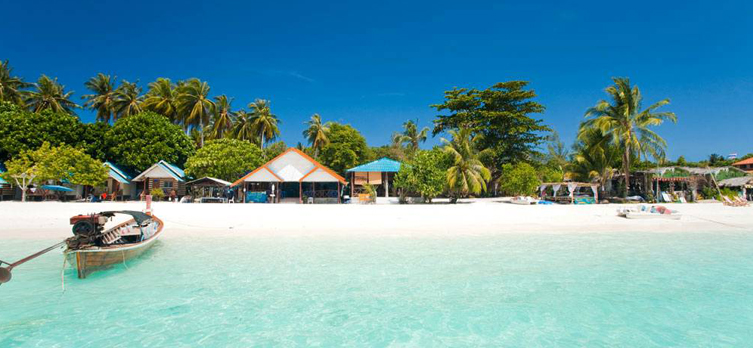
The archipelagos of Andaman in the Bay of Bengal are an invigorated treasure trove of exotic flora bedded by verdant and lush green tropical plants. These isles, midst of the lovat green sea, are the best answer to the virtue of nature and remains a tenacious memory flashed with marvelous beaches fringed by the shimmering turquoise and fabulous coral reefs on one side and the call of a cockatoo and your footprints on the sand on the other side. With the canopied forests themselves having an amazing variety of timber, foliage and blooms, the Andaman paduk, the yellow hibiscus, the while lily, the pandanus, the exotic array of orchids, mangrove forest, palms & evergreen creepers are to name but a few of the 650 species of plant life found here, together makes your vacation an exotic one. Enjoy the ocean cruise, snorkeling, scuba diving, water skiing and several other activities while your rove these islands.
Where to stay: Barefoot at Havelock Nearest Railhead: NA Nearest Airport: Veer Savarkar International Airport, Port Blair

About Swairik Das
Brought up from the cultural capital of India, Kolkata, Swairik Das is a passionate traveller who seeks to travel and explore the length and breadth of the country. He is also a dedicated travel writer, blogger and photographer who by heart is also an adventure freak. His focus is mostly into exploring and writing on trekking, jungle safaris and several adventure activities; religion, festival, heritage, people and cuisine.
Recent Post

Top 10 Trails in Sikkim for High Altitude Trekking Adventure

15 Most Famous Festivals in North East India

20 Most Popular Weekend Getaways from Kolkata
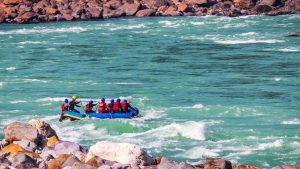
7 Best Places to Spend Your Summer Break in North India
- Hill Stations
- Travel Deals
- Amazing Facts
- Travel Experience
- Travel Tips
- Travel Alerts
- Travel Videos
- Edu-Tourism
- Inspirational People
Subscribe for more updates, tips and insights for your holidays.
20 Highway Dhabas that You Must Stop By
Top 15 places for honeymoon in north east india, 12 best beaches in maharashtra, top 15 wildlife sanctuaries and national parks in kerala, int'l blog posts.

10 Best Beaches in Thailand

Tourism Update – Enjoy Visa Free Holiday Travel in Sri Lanka

Thailand Tourism Update- Indian Travelers Now Get a Visa-Free Entry to Thailand!

Top 25 Places to See and Things to Do in Thailand

unsustainable
sustainability • ethics • climate • waste • renewables • ecology • poverty • equality
Eco-Friendly Tourism in India: 10 Green Travel Destinations
If you’re looking for “responsible travel India” or “sustainable travel India,” you’ve come to the right place. This guide to eco-friendly tourism in India explores the environmental and ethical concerns for those who wish to visit this incredible subcontinent without causing harm to its wondrous peoples and landscapes, while we examine India’s top 10 green travel destinations.
By Ruma Dey Baidya of The Holiday Story
Table of Contents
Sustainable Travel in India
India is a country of diverse landscapes and cultures. Its rich biodiversity has allowed the rapid growth of sustainable tourism associated with green travel destinations.
Green travel, also known as eco-tourism, is a lifestyle choice that one adopts while traveling to reduce their carbon footprints. It’s a great way to explore nature while healing it simultaneously. Tourists must be responsible for their actions and conscious of the environment.
For further reading, see The Holiday Story’s complete India Tour Guide
Also visit Laure Wanders for a complete guide to visiting the richly diverse country of India . As a solo female traveller, Laure has a unique perspective and captures her experiences through beautiful photography and immersive stories.
Wander With Jo also heaps a huge section on travel around India , with beautiful articles such as the Travel Guide to Fambong Lho Wildlife Sanctuary, Gangtok, Sikkim .
Top 10 Green Travel Destinations in India
Given below is a list of ten green travel destinations in India.
Mawlynnong Village, Meghalaya
Mawlynnong Village of Meghalaya was announced as Asia’s cleanest village in 2003.
It’s located in the East Khasi Hills at a distance of 90 km from the state capital Shillong. Locals take active participation in keeping the village clean and beautiful. Plastic is wholly banned here, and smoking is also prohibited. The entire village has facilitated the use of bamboo dustbins to collect litter. All villagers and tourists are supposed to follow these rules strictly. Any defaulters are heavily charged.
This village also stands out in having a hundred percent literacy rate, and most villagers can converse in English.
The main inhabitants of Mawlynnong are the Khasi tribe, who follow a matriarchal society. Its location on the Indo-Bangladesh border provides a mesmerizing view of lush greenery.
Monsoon is the best time to visit Mawlynnong village.
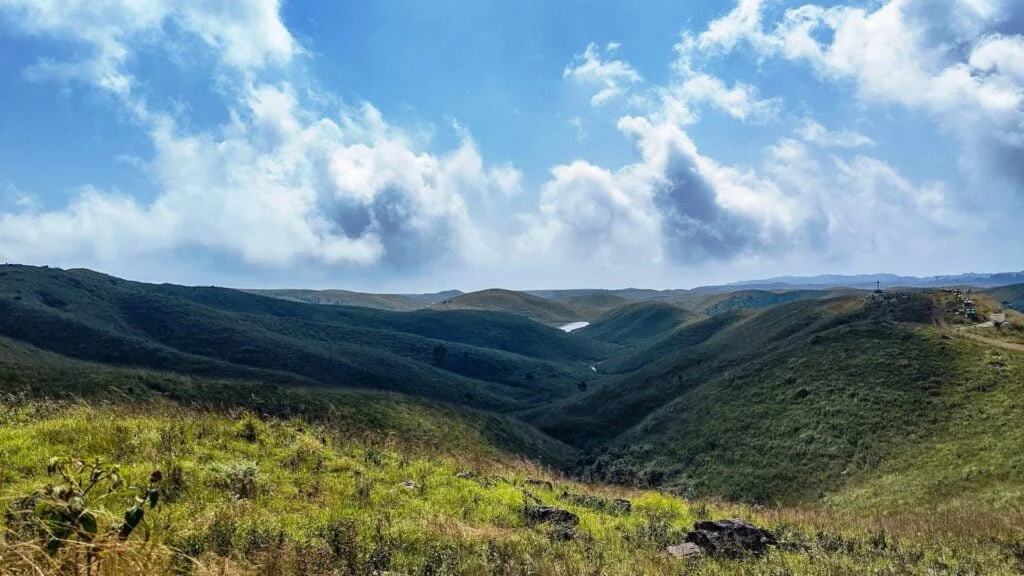
Khangchendzonga National Park, Sikkim
The Khangchendzonga National Park is a well-known UNESCO World Heritage site of Sikkim.
You can cover the distance between this National park and Gangtok in a four-hour drive. It’s a part of the Himalayan global diversity hotspot and home to many indigenous plant and animal species. The park is built around the third highest mountain peak in the world, Kanchenjunga.
There are lush green valleys, glaciers, lakes, and caves inside the national park. Visitors are instructed to maintain cleanliness inside the park and should not litter or disturb the vegetation inside by plucking leaves or flowers. Travelers should discard nonbiodegradable items outside the park.
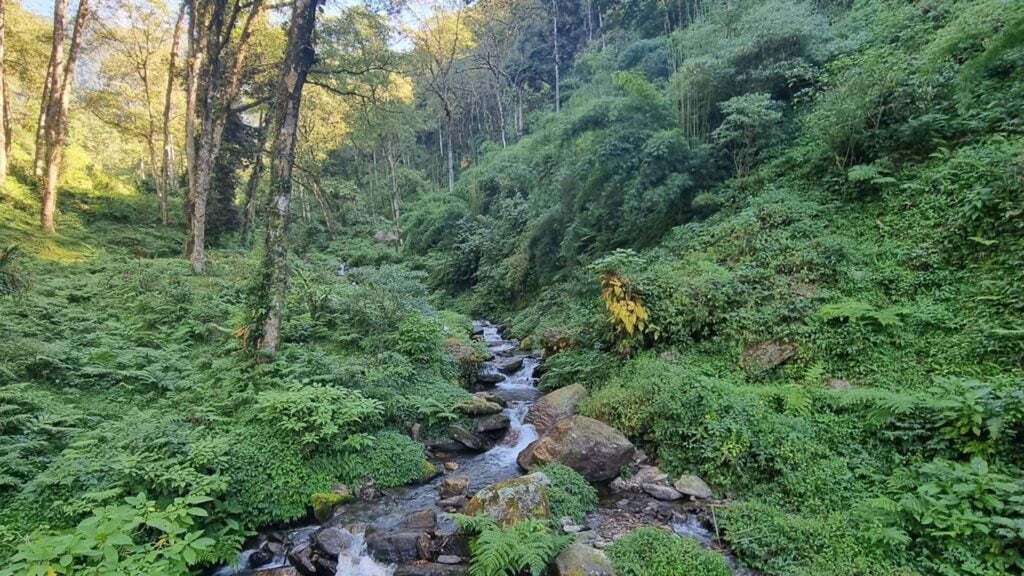
Thenmala, Kerala
Thenmala is India’s first-ever eco-tourism center.
It spreads across the hills of Kollam and Trivandrum regions of Kerala. It lies at a distance of 70 km from the capital city of Thiruvananthapuram.
The term Thenmala means “honey hill,” as the region is known for producing superior quality, honey. The livelihoods of locals depend on forest provided products like honey and rubber.
It’s a major tourist spot in the state. The main attraction is the Thenmala dam. Tourists are encouraged to indulge in environment-friendly activities like boating, rock climbing, and trekking. Huts inside the woods allow tourists to spend the night in the forest depths.
Winters in southern India are mild and comforting; thus, it’s the best time to explore this green travel destination.
Khonoma Village, Nagaland
The Khonoma Village of Nagaland used to be a well-known hunting spot.
The majority of the inhabitants of this village depended on hunting birds and wild animals as their source of livelihood. However, near the end of the 1990s, the government banned hunting in this region. Since then, the village has gradually developed into India’s first green village.
It mainly formed the Khonoma Nature Conservation and Tragopan Sanctuary to protect the Blyth’s Tragopan, a native endangered species. The sanctuary encompasses a total area of 70 sq km and contains a variety of flora and fauna. The majority of the population here is part of the Angami tribe.
The tribe believes in preserving trees and keeping their lands clean, gathering all their waste in one place and burning them. Tourism is promoted through activities like trekking and camping .
Coorg, Karnataka
Coorg is a hill station nestled within the Western Ghats of Karnataka.
Its misty hills, great green valleys, and rolling plains are a wonder of nature that mesmerizes tourists. It’s located at a distance of 252 km from the state capital Bangalore.
It’s the home to Nagarhole National Park, a haven of beautiful plants and animal species. Coffee and cardamom plantations are also prominent here. There are several rivers and waterfalls in Coorg. Exploring the backwaters of Kaveri is an important tourist activity.
The pleasant South Indian weather and picturesque scenery make it a favorite vacation place for tourists. Tourism in Coorg is mainly about admiring and respecting nature.
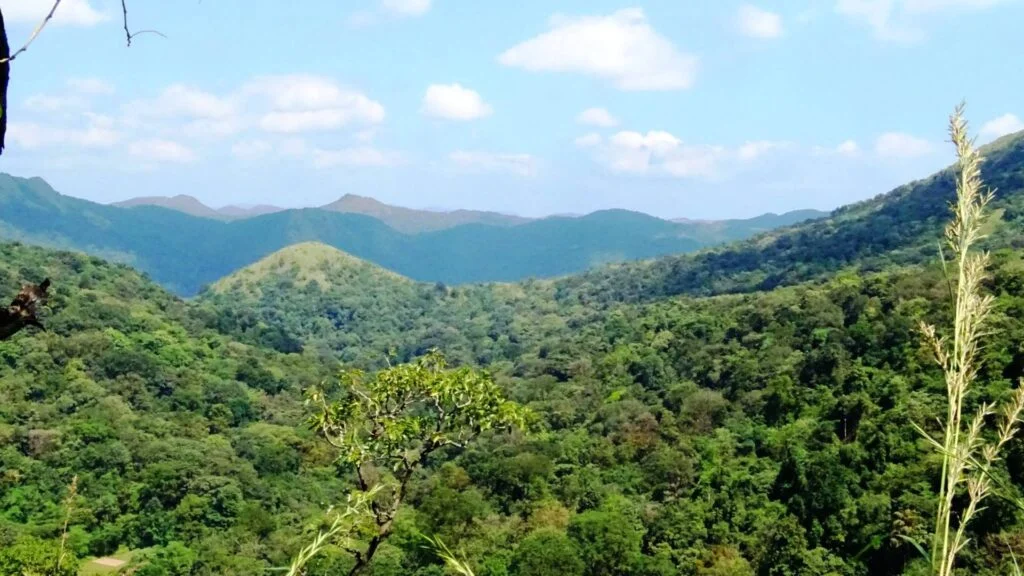
Sitlakhet, Uttarakhand
Sitlakhet is a beautiful hill station in Almora, Uttarakhand. This Himalayan hamlet is known for its picturesque Kumaon scenery and serenity.
Sitlakhet is an up-and-coming tourist spot located near the famous Ranikhet. There is no shortage of greenery here. Trekkers are the primary visitors to this region. The easy to moderate level trekking routes make it easier for beginners to try this new challenge.
All other activities here are also eco-friendly. People from the city visit Sitlakhet for a relaxed and soulful vacation devoid of any city pollution.
Daringbadi, Odisha
Daringbadi is a part of the Eastern Ghats in Odisha, located in the Kandhamal district, which is 251 km from the capital city of Bhubaneswar. This hill station is filled with tiny green hills and hillocks, rivers, and waterfalls. Pine and sal trees are dominant in this area.
You can also find coffee plantations here. The natural beauty of Daringbadi has gained the nickname of Kashmir of Odisha, and it’s the face of Odisha’s green travel destinations. There are several parks and reserves made to preserve nature.
The local communities have built nature camps all over the place to educate visitors about the region’s natural resources. The early winter months are the ideal time to visit Daringbadi.
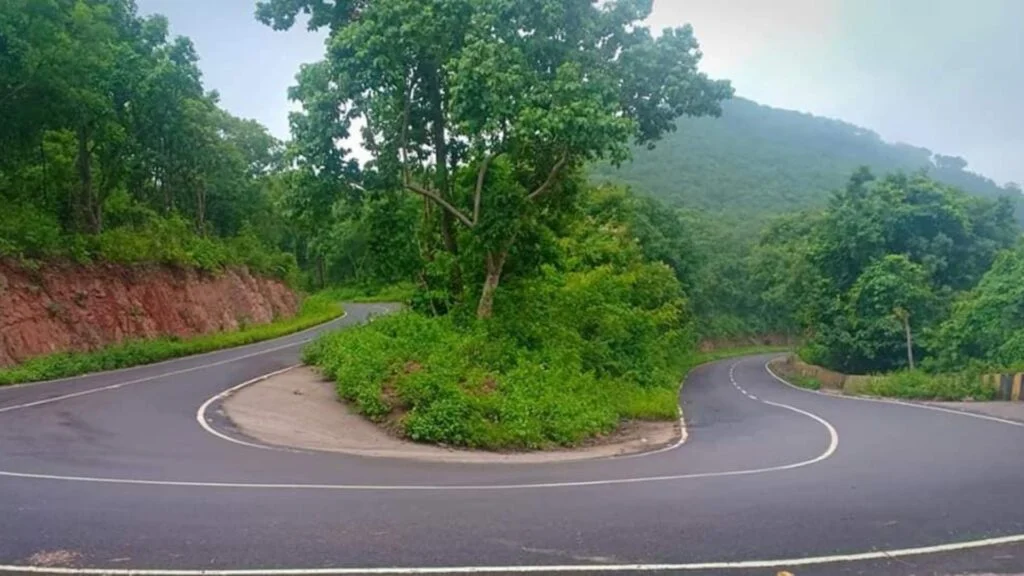
Pondicherry, Tamil Nadu
Pondicherry was a French colonial settlement till 1954.
This pristine town on India’s west coast is now a major United Territory of the country. Its sandy beaches, deep blue ocean, and cultural diversity attract tourists from all over the world. Its roads and buildings still represent the essence of its earlier French settlement.
Tourists are urged to rent bicycles to explore the town in an eco-friendly way . You can spend your day participating in water activities like scuba diving, snorkeling, surfing, and more.
Pondicherry is also a well-known spiritual retreat. Places like Aurobindo Ashram, Manakula Vinayagar Temple, and Sacred Heart of Jesus church provide calm and serenity to visitors.
Majuli, Assam
Majuli is the world’s largest river island on the Brahmaputra in Assam.
The distance between Majuli and the state capital Guwahati is 347 km. Its picturesque scenery of rural India attracts people from all over the world.
This freshwater island is a pollution-free region that promotes sustainable tourism. The island was brought under the spotlight recently as it was on the verge of submerging due to rapid erosion. The local government has announced a ban on single-use plastic on the island. Apart from the scenic beauty, the island also has several cultural and religious buildings.

Matheran, Maharashtra
The small hill station Matheran is in Raigad, Maharashtra.
It’s a part of the Sahyadri Hills of the Western Ghats and a biodiversity hotspot in India. The capital city Mumbai lies at a distance of 80 km. Matheran means the ‘forest on the forehead’ in English.
The forest-covered hills of Matheran keep pollution out of its boundaries, thus creating a quiet, clean summer retreat. It was also announced as an eco-sensitive area by the Ministry of Environment.
Visitors can experience trekking, bird watching, and other nature-friendly activities here. Visit Charlotte Lake for some breathtaking views.
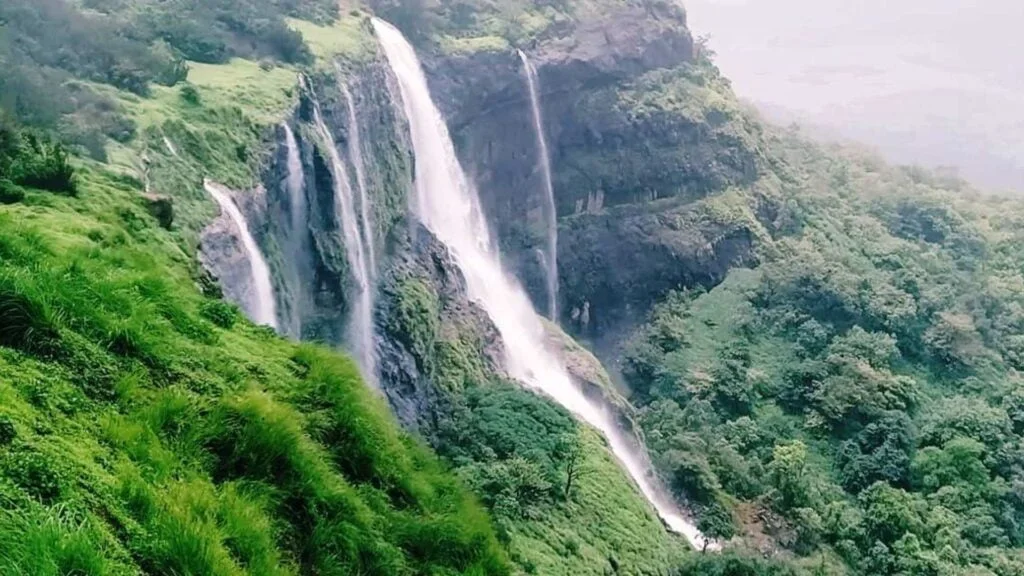
Share this article
Related articles:.
- Why Sustainable Tourism is Important
- 9 Best Ways to Visit Costa Rica Sustainably: A 2024 Guide
- Visit Lofoten Islands Sustainably with 4 Green Travel Tips
- A Sustainable Travel Guide to Stockholm, Sweden
- Your Guide to Sustainable Travel in Vietnam
- Your Guide to Sustainable Travel in Milan - Visiting Italy
hosted by greengeeks
CONTACT Authors Submissions
In the spirit of reconciliation Unsustainable Magazine acknowledges the Traditional Custodians of country throughout Australia and their connections to land, sea and community. We pay our respect to the Elders past and present and extend that respect to all Aboriginal and Torres Strait Islander peoples today.
© unsustainable 2024
- The Best Eco Friendly Destinations...
The Best Eco-Friendly Destinations in India

Whether it’s a large biosphere reserve or a small village where community-based initiatives flourish, India has some splendid eco-friendly destinations. Here are some perfect places away from the urban jungles we all need an escape from every so often.

Khangchendzonga National Park, Sikkim
Khangchendzonga National Park, which covers almost 30% of the total land of Sikkim in northeast India, was initiated into the UNESCO World Heritage list in 2016. It provides one of the most breathtaking panoramas in the entire world. Along with the imposing Khangcheecndzonga, the third highest mountain in the world, there are spectacular glaciers, lakes, rivers, valleys, caves and plains.

Lahaul Spiti, Himachal Pradesh
Life can be hard in the cold mountain desert of Spiti Valley, where the craggy terrain and unforgiving climate (temperatures can dip to minus 30°C) provide very little means to sustain a livelihood. A few organisations such as Spiti Ecosphere are on a quest to preserve this vulnerable ecosystem by developing sustainable tourism in the region, which also helps in fuelling the local economy.
Whether trekking across the thrilling Pin Parvati Pass , biking through challenging Himalayan trails or having a spiritual experience in humble meditation centres, travellers are encouraged to have as little impact on Spiti Valley’s environment as possible.
Khonoma Village, Nagaland
About 20km from Kohima, the capital of Nagaland , is a 700-year-old emerald landscape known as Khonoma Village. Since the Naga tribes have always depended on hunting as a means of sustenance, about 300 Blyth’s tragopans, the state bird and an endangered species, were killed in 1993 alone.
In addition, timber merchants carried out unchecked deforestation over large parts of the area around the same time. The residents of Khonoma had bravely defended their land against British invasion in the 1800s and it was now time to do the same against a different kind of enemy. So the concerned villagers put a complete ban on hunting and logging, and since then Khonoma has become renowned as Nagaland’s ‘green village’.
Thenmala, Kerala
Thenmala, which means Honey Mountain, holds pride of place as the first planned eco-tourism destination in India. It is surrounded by dense evergreen forests, rich in timber and a thriving rubber plantation. The beautiful green hills of Thenmala, nestled in the midst of the Western Ghats, holds many surprises for the traveller. The biodiversity of the region is evident at Butterfly Safari Park, the Deer Rehabilitation Centre and Shenduruney Wildlife Sanctuary. For the adventurous soul, Thenmala has activities such as biking, rock climbing, hiking, abseiling and camping. On the other hand, the sprawling tea plantations at the nearby Ambanad Hills are ideal for a relaxing stopover.
Mawlynnong Village, Meghalaya
Best known as the cleanest village in Asia, Mawlynnong leads by example. The use of plastic has been banned here and so has smoking. Keeping the spirit of eco-friendliness alive, the streets are lined with bamboo dustbins and, unlike in most parts of India, there’s hardly every any litter to be found. What’s more, many of the guest houses are constructed of bamboo. Composting and nourishing tree plantations are also common practice in the village. The Living Roots Bridge , a UNESCO World Heritage Site and a must-see structure, is at the neighbouring Riwai Village, which is a short hike from Mawlynnong. The Khasi tribes of Meghalaya created these natural bridges by weaving together the roots of ficus trees.
Parambikulam Tiger Reserve
Parambikulam Tiger Reserve is another eco-tourism destination in the southern state of Kerala. The environment here is fiercely defended and during jungle safaris visitors aren’t allowed inside the heart of the tiger reserve in order to keep the wildlife protected. The community-based eco-tourism has been designed to provide livelihoods to indigenous communities living in the area. They are involved in making bamboo products, paper bags, locally sourced honey and other souvenirs from recycled plastic waste, which are all available at the ecoshop inside the reserve. The earnings from tourism initiatives go towards environmental education and research, as well as activities related to the protection of the forest.

Did you know – Culture Trip now does bookable, small-group trips? Pick from authentic, immersive Epic Trips , compact and action-packed Mini Trips and sparkling, expansive Sailing Trips .
Since you are here, we would like to share our vision for the future of travel - and the direction Culture Trip is moving in.
Culture Trip launched in 2011 with a simple yet passionate mission: to inspire people to go beyond their boundaries and experience what makes a place, its people and its culture special and meaningful — and this is still in our DNA today. We are proud that, for more than a decade, millions like you have trusted our award-winning recommendations by people who deeply understand what makes certain places and communities so special.
Increasingly we believe the world needs more meaningful, real-life connections between curious travellers keen to explore the world in a more responsible way. That is why we have intensively curated a collection of premium small-group trips as an invitation to meet and connect with new, like-minded people for once-in-a-lifetime experiences in three categories: Culture Trips, Rail Trips and Private Trips. Our Trips are suitable for both solo travelers, couples and friends who want to explore the world together.
Culture Trips are deeply immersive 5 to 16 days itineraries, that combine authentic local experiences, exciting activities and 4-5* accommodation to look forward to at the end of each day. Our Rail Trips are our most planet-friendly itineraries that invite you to take the scenic route, relax whilst getting under the skin of a destination. Our Private Trips are fully tailored itineraries, curated by our Travel Experts specifically for you, your friends or your family.
We know that many of you worry about the environmental impact of travel and are looking for ways of expanding horizons in ways that do minimal harm - and may even bring benefits. We are committed to go as far as possible in curating our trips with care for the planet. That is why all of our trips are flightless in destination, fully carbon offset - and we have ambitious plans to be net zero in the very near future.

See & Do
Photo journal: 10 photos from jaipur's ganguar festival.

This Homestay Could Help Save Rajasthan’s Nomadic Camel Pastoralists

The Top Things To Do And See In Jaipur

Simran Lal, Founder of Nicobar, On How She Launched Her Lifestyle Brand and Tips On Travelling to India

How To Spend a Week in Maharashtra

Guides & Tips
5 delicious indian dry bean and lentil recipes.

A Guide To Madhya Pradesh’s Tiger Reserves

The Best Places to Travel in November

Top Tips for Travelling in India

Film & TV
Embrace the barbie spirit by visiting the world's most colourful cities.

How to spend 10 days in Madhya Pradesh, India

Fun-Filled Travel Experiences to Boost Your Serotonin Levels
Culture trip spring sale, save up to $1,100 on our unique small-group trips limited spots..

- Post ID: 1643671
- Sponsored? No
- View Payload
25 of the Best Eco Resorts in India, for the Conscious Traveller (2021)
There are some incredible Eco Resorts in India – if you know where to look! Here are some of our favourite eco resorts and lodges that celebrate India’s biodiversity and support local communities too.
This post contains compensated affiliate links. Click here for our full disclosure .
My Favourite Eco Resorts in India
Often overshadowed by her architecture and colourful culture, it’s arguably India’s nature that is the real star of the show. And although it may not be as well known as destinations like, say, Costa Rica, for its ecotourism, India is leading the way in Asia with some inspiring eco resorts and lodges that will leave you not wanting to… well, leave.
A little known fact: India is actually home to 7% of the world’s biodiversity. And where better to immerse yourself in that (and enjoy a slower pace of living for a few days) than at one of the country’s growing number of sustainable resorts?
From simple eco lodges to high end sustainable luxury resorts that will cater to your every need, we’ve put together this guide to some of our favourite eco resorts and lodges around India. These are not simply places that involve the outdoors, but places that have actively put measures in place to minimise their environmental impact, use renewable energy sources, and are directly benefiting local communities too.
As this list continues to grow, thanks to huge interest in responsible tourism in India, we will keep adding – and please feel free to let us know any of your favourite eco resorts or lodges at the end of this post!
READ MORE: Responsible Travel in India – What you Need to Know
ⓘ TIP: Planning a trip to India? Join our free India Travel Facebook group here !
Eco Resorts in Rajasthan
The desert state of Rajasthan is one of India’s most-visited areas and home to some of the country’s top tourism attractions. It’s also home to some beautiful eco lodges and resorts, too!
Khem Villas (Ranthambore)
Khem Villas is a luxury jungle camp at Ranthambore, Rajasthan’s best known tiger reserve. The camp is designed to provide peace and tranquility within its luxurious and very personal atmosphere. Accommodation is high end, and you won’t want for anything at this beautiful glamping cum eco resort.
The focus at Khem Villas is not just tigers but to go beyond the tigers by engaging visitors and informing them about the various challenges that threaten the survival of Ranthambhore and its striped cats. The resort is involved with two NGOs: Ranthambhore Foundation and Tiger Watch which help in providing health care, education, afforestation, dairy development, employment generation, monitoring of Tigers and more importantly sustainable livelihoods.
For more info & rates at Khem Villas, Click here.
Although the tiger concentration is lower at Ranthambore than in Madhya Pradesh, many visitors flock here for its location in Rajasthan as well as the temple ruins within the park which make for a unique backdrop to see the tigers.
READ: Rajasthan Travel Guide – Rajasthan without the Crowds
Hara House (Bikaner)
If you want to experience the best of Rajasthan’s princely grandeur and desert culture, but with fewer of the crowds that make it to Jaipur and Jaisalmer, Bikaner may just be the place for you.
India’s first “zero waste guesthouse”, Hara House is a simple, budget friendly guesthouse that invests 20% of its profits in building community in Bikaner through social development initiatives and its community centre, as well as putting focus on eliminating plastic waste from tourism that crosses its doorstep. Hara House’s goal is to achieve 90% diversion from landfill and refuses to buy and products wrapped in plastic, and helps their guests to do the same! The guesthouse is also working towards 100% solar power by 2021.
Hara House is located just steps from Bikaner’s city centre and Junagarh Fort, and offers simple basic doubles and dorm style accommodation.
For more info & rates at Hara House, click here .
Chandelao Garh (near Jodhpur)
Around 40km outside of Jodhpur, Chandelao is a beautiful grand house, transformed into a luxurious homestay – and comes highly recommended! If you stay here, we highly recommend taking a trip around the village with Chandelao’s local guides for an insight into desert life.
Chandelao Garh is the home of former generals of Marwar (as the region of Jodphur, Rajasthan, was once known). The main part of the house was built in 1744 and has been well looked after to retain its charm and beauty. Chandelao is the ancestral home of the rulers of Chandelao village and the surrounding area and is still run by the family today.
Alongside the homestay, Chandelao is home to Sunder Rang arts and crafts centre. The centre provides employment opportunities to women from Chandelao village and beyond.
Women apply to come and work at the centre to make handicrafts (which are sold to visitors of Chandelao and beyond). 60% of the profit of each product sold goes directly to the woman who made the item, the remaining 40% towards running costs for the centre. Sunder Rang centre provides optional schooling programs for the ladies that work there, providing the opportunity to learn languages or study at the computer centre next door.
For more info & rates at Chandelao Garh, click here .
Eco Resorts in Madhya Pradesh
Jungle Book central, Madhya Pradesh is the place to come if you want to try your luck searching for India’s regal big cats on a Tiger Safari, and is home to some of India’s best National Parks and Tiger Reserves. Make sure you book ahead, especially between November – February as accommodation and jeep safaris book up fast on a fist come first served basis (all tiger reserves have a maximum quota of visitors per day).
Pench Tree Lodge (Pench National Park)
Recommended by Abbie of Speck on the Globe
Spend your evenings after a safari sleeping in a tree house in the Jungle! Pench Tree Lodge not only is comfortable, but they are conscious about the environment. There are 6 cottages and 6 treehouses, making the property feel peaceful and exclusive without being overcrowded. The treehouses are a perfect unique accommodation experience. They are constructed around existing trees, with the utmost care not to disturb the wildlife.
The buildings at this boutique property are made from reclaimed or locally sourced materials. The Lodge is located in a more underdeveloped area adjacent to the park, helping to spread tourism economy while still being mindful of the original residents of the region.
The commitment to the environment is clear from check in at the lodge. There are reusable water bottles provided with clean drinking water stations placed throughout the property. Small details like organic, refillable toiletries in the bathrooms are noticeable during a stay here. The property has an on site garden and the menu is reflective of seasonal ingredients that are grown just steps from the kitchen.
Safari tours through Pench Tree Lodge have conservation efforts as their main goal. The jeeps are small and a naturalist accompanies each vehicle to the park so that you can learn more about the park and its inhabitants. Along with the guide, the naturalists makes sure that the cars are following the rules of the park and are there to ensure safety for the animals as well as the guests. Their knowledge and commitment to conservation is what makes them stand out above the rest.
Click here for more rates & info for Pench Tree Lodge!
Kanha Earth Lodge (Kanha National Park)
Kanha National Park and Tiger Reserve is thought to be the original inspiration for Rudyard Kipling’s book, the Jungle Book. If you’re intent on living out your own Mowgli fantasy, Kanha would seem like the natural place to start.
So perhaps it’s no surprise that Kanha National Park gets busy and books up quickly. If you’re planning on visiting Kanha, we recommend booking your accommodation and safaris several months in advance. Many of the area’s lodges can help with booking your safaris directly.
Adjoining the buffer zone of Kanha Tiger Reserve, Kanha Earth Lodge offers a true wilderness experience – close to the park, but away from many of the Kanha resorts that surround it.
The lodge has 12 luxury bungalows which have been inspired by Gond tribal architecture. They offer environmentally sensitive, low-impact accommodation through their design and use of local stone and waste wood, while the absence of neighbouring lodges or highways creates an ideal setting for nature walks, birding and cycling trips through the surrounding forest, so you can see plenty of wildlife from the Lodge itself!
For info & rates at Kanha Earth Lodge, click here .
Eco Resorts in Maharashtra
Often overlooked by visitors (apart from Mumbai, perhaps), Maharashtra has more than its fair share of beauty, and some game-changing sustainable lodges and hotels, too.
Abode Bombay (Mumbai)
More one for urban jungle lovers, Abode Bombay is a boutique hotel that has done everything in its power to keep its environmental impact low and its social impact positive. The hotel has introduced a number of sustainable initiatives, from eliminating plastic to recycling soap ends in partnership with the Kalwa-based Sundara Fund .
The hotel employs local guides, partners with a firm of all-women taxi drivers, and works with the national association of the blind to work with their therapists for the hotel’s spa offerings.
Abode is a welcome retreat in the beautiful – but sometimes crazy – city of Mumbai.
For info & rates at Abode Bombay, click here .
Maachli (Sindhudurg)
Award-winning Maachli is a rustic retreat-cum-farmstay in the depths of Maharashtra, on the beautiful (and as yet little known) Konkan coastline. Less than 50km north of Goa, this part of India has lots of the lush greenery and coastline, but without the Goan crowds.
Maachli is designed with the concept of bringing man back into union with nature, and it manages to do just that. This is a place for embracing the simplicity of life, rather than expecting all modern conveniences. Simple A-framed huts are designed in a way to maximise the breeze as natural air conditioning (rather than the electric alternative), and the activities here extend to going for a walk, appreciating the plants, learning about pottery making, or simply sitting back and reading a book.
We challenge you not to be rejuvenated by a few days at Maachli.
For info & rates at Maachli, click here.
Eco Resorts in Goa
Despite its fame for partying and just soaking up the sun, there is a more sustainable version of travel in Goa, too – one which embraces the lush jungles and cultural diversity that is found here.
Yab Yum Beach Resort (Ashwem)
The owners of this garden-like resort, right by the beach in Ashwem might be modest about their environmental achievements, but this is one of our favourite eco-minded resorts we have stayed at in India.
The high-end mud-hut like rooms are built from local mud and clay, painted in a beautifully comforting shade of dark red inside and thatched with local palms, to provide a cooling place to sleep (no air con required) that feels nurturing to the soul. Not only does it leave no environmental trace, but it’s scientifically proven that sleeping surrounded by natural mud is good for you.
The resort doesn’t have a pool (that’s called the Arabian Ocean, about 100 meters’ walk from your bed), and the emphasis here is on tranquility and yoga. There are daily yoga classes (which were medicine for our limbs that were tired from travelling), and most early mornings you can have Ashwem beach to yourself.
Ashwem is located within easy access of Arambol, Morjim and Anjuna for those looking for more action.
For info & rates at Yab Yum, click here .
Wildernest Resort (Chorla Ghats, North Goa)
Wildernest could be said to be one of the few places in Goa where you can hear silence.
Located well away from the coast up in the hills and border with Maharashtra and Karnataka, Wildernest is a true nature retreat for those that really want to be away from it all (don’t come here expecting wifi), but the rooms are modern and stylishly decorated. Nature takes centre stage whether it is from the resort’s infinity pool that looks out over the ghats (hills), or on a hike with one of the resort’s naturalists. There are also a number of hides here which make it the perfect spot for birding and wildlife enthusiasts.
Wildernest also runs a wildlife research and conservation facility which attempts to raise awareness about the wildlife habitats of the Western Ghats in particular and the environment in general amongst the local communities and villages of the region.
For info & rates at Wildernest, click here .
READ: A Travel Guide to Goa, without the Crowds
La Mangrove (Galgibag)
Tucked away in the very south of Goa, south of Palolem, La Mangrove is a real “hidden gem”. Not many travellers venture this far south in Goa – so if you want Goan beaches that are quiet and un-developed, this may be the place for you.
La Mangrove is a luxury ‘glamping” resort with just six teepee style tents – which come with full size double beds, plush linens, power outlets to charge your phone, and even space to hang your clothes inside. Private bathrooms are a few meters away with composting toilets and wonderful outdoor rain-showers.
The resort itself is located a few minutes walk from Galigbag beach “turtle beach”, on the banks of the Galgibag River. Wake up to views of the serene mangroves and river and enjoy time to relax away from Goa’s crowds.
For info & rates at La Mangrove, click here .
Eco Resorts in Karnataka
Less visited than the neighbouring states of Goa and Kerala, Karnataka is an important region in India for bio-diversity, with some of the last remaining virgin forest in the country. For wildlife enthusiasts craving a little peace and quiet, Nagarhole and Bandipur are national parks you won’t want to miss.
Bandipur Jungle Lodges (Bandipur)
Recommended by Sinjana from Backpack n Explore
Started in 1980, Jungle Lodge Resorts group is a Public-private partnership (PPP) of the Karnataka government and Tiger Tops. This is the first eco-tourism venture in India, and they have many branches in exotic locations of Karnataka. I stayed at one of them which is in Bandipur. It is in a serene area near the jungles of Bandipur and organizes ethical safari tours for boarders. The packages are at the per-person level including lodging, meal and safari. We booked a twin-sharing room and were pleasantly surprised to see they were independent cottages in the lap of nature.
Each the cottage was named after an animal found in Bandipur forest and had exquisite wall paintings of the same. Rooms are clean and spacious but do not have Television or air-conditioners. However, because of the way they are built and the green cover of the surroundings, we never felt hot inside the room, even in summer. They provide three meals per day, and evening snacks. I loved the quality of food, thought options are limited. There is a hammock outside each cottage but beware of the monkeys around. As a part of the basic safari package we also got a chance to enjoy a documentary about the life of a tigress in the Bandipur jungle.
For info & rates for Bandipur Safari Lodge, click here .
Red Earth Kabini (Kabini, near Nagarhole)
Red Earth Kabini is an unpretentious resort on the back waters of the Kabini dam and in close proximity to Nagarhole tiger reserve.
Described as “as close to silence as you can get”, Red Earth is for those who want to deeply relax and surround themselves with nature. There are 20 well spaced out cottages here, complete with your own private jacuzzi for stargazing! The resort helps you organise jeep safaris and walks with naturalists, both around the property and in the Nagerhole reserve.
Red Earth are a small group of hotels that were founded with the commitment to sustain the environment around them as well as the local community. The focus is on local: Local people, local produce, supporting local arts and crafts that are at risk of dying out, and sourcing from local fishing and farming communities.
The group support and run Nilgiris Wayanad Tribal Welfare Society (NWTWS), an NGO working in the field of health, education and community development in the forested areas of the Nilgiris in Wayanad by running schools for tribal communities and helping provide medical care.
For info & rates for Red Earth Kabini, click here .
Eco Resorts in Kerala
Referred to as “God’s own Country”, Kerala is not short of charms, and it’s not a surprise that it’s one of India’s more popular regions for travellers. Parts of Kerala, though, have been feeling the burden of tourism, and we recommend staying at one of these eco resorts that care about their impact if you can – especially when in or around Kerala’s delicate backwaters ecosystem.
Spice Village (Thekkady)
Nestled up in the hills (western ghats) in Kerala, Spice Village has been recognised again and again for its pioneering sustainability efforts. When it comes to sustainable luxury resorts in India, it’s hard to beat Spice Village.
Located in the perfect position for visitors interested in exploring Thekkady and visiting Periyar National Park (or just cooling down from the humidity of the coast), Spice Village is feel good luxury at its best. The resort is designed around the concept of a traditional Keralan spice village, with every guest room laid out as a private bungalow within the grounds. The grounds itself are full of tropical vegetation and wildlife (as well as an organic garden), and the resort has naturalists on hand to show you around.
READ: Kerala Travel Guide – The Best of Responsible Travel in Kerala
The resort houses a huge solar plant which provides nearly all of the resort’s energy, and the emphasis here is on self-sufficiency. Spice Village grow their own food, use ayurvedic, natural cleaning products, make their own soaps and even paper too.
For info & rates for Spice Village, click here .
Spice Coast Cruises by Coconut Lagoon (Kumarakom)
Nestled along the shores of Lake Vembanad, Kumarakom is one of the leading places in Kerala for responsible tourism and is one of your best bets for experiencing the Kerala backwaters in a way that supports the local environment.
Houseboat tourism on Kerala’s backwaters has been at the centre of controversy among local communities, who are feeling the effects of polluted water thanks to houseboat fuel, waste and noise pollution from a huge number of boats plying the water blaring loud music. CGH Earth, who run the serenely beautiful Coconut Lagoon Resort have developed a more sustainable version of the houseboat too: A traditional Kettuvallom (rice barge) that operates using a mixture of solar power and vegetable oils in order to mitigate environmental damage.
For info & rates for Spice Coast Cruises, click here .
Vythiri Resort (Wayanad)
Recommended by Imma from A World to Travel
These days – motivated by the popularity of all things eco-friendly – many hotels claim to be responsible, when the truth may be a little different.
I visited Vythiri Village in 2014. Back then, it was already a luxury resort classified as responsible. And so it seemed to me. In the middle of a lush forest near Wayanad, in the popular Indian state of Kerala, Vythiri stands as a haven of peace, in perfect communion with nature. There are hanging bridges that cross rivers, cabins in the trees, a menu adapted to the reality of the area, local workers, and a construction that respects the materials of the area.
“Tread softly, you’re entering nature’s home ground” is Vythiri’s motto, which is fitting for a thoughtfully designed resort located in dense, tropical rainforest on the edge of the Nilgiri Biosphere Reserve (which contains the Nagarhole and Bandipur parks over the border in Karnataka).
Accommodation here is made up a range of tree houses, pool-side villas and suites, and some secluded cottages for a complete jungle hideaway experience. There’s a spa, Ayurveda centre and a choice of pools to soothe your limbs after hiking around the property’s grounds.
For info & rates for Vythiri resort, click here .

Eco Resorts in Pondicherry
The former French enclave on India’s south eastern coast is a world away from other parts of India, and has some hidden eco-gems, too:
Dune Eco Village & Spa (Pondicherry)
Recommended by Priya from Outside Suburbia
We have made several trips to India over the years and stayed at a few different hotels and luxury resorts. The simple yet serene Dune Eco Village and Spa resort in Pondicherry is by far our favourite.
It is a place of peace, a far cry from the fast-paced world and traffic-clogged Chennai were my family lives. There are over 50 bungalows of which no two are alike – each one is uniquely designed and created by various artists, designers and architects from all around the world are on a 35 acre beachfront land. The bungalows bring together luxury and natural living. They are reclaimed from Colonial houses, Chettinad palaces, and Kerala planter’s mansions. The bungalows are fully equipped with solar water systems and organic linen. They even had an outdoor shower which was fun.
The 2 restaurants in the resort serve healthy gourmet fusion food, prepared using organically farmed vegetables. The Spa at Dune offers Ayurvedic treatments, yoga and meditation as well as many alternative therapies.
Dune Eco Village now even has a Deepak Chopra Healing Center inside which offers Ayurvedic treatments and yoga and meditation, as well as many western massages and hot water therapies like Water Shiatsu and Water Yoga. I can vouch that the Ayurvedic massages are the most relaxing ever had during my travels and my kids to this day remember and rave about the activities at this eco-resort.
For info & rates for Dune Eco Village, click here .
Eco Resorts in North East India
North East India is little wandered in comparison to the rest of the country, and is culturally diverse from many other parts of India. Here nature rules, with organic farming widespread, bridges made from tree-roots, and lush monsoon wetlands. Big-hitter Kaziranga draws visitors to Assam, with hopes of spotting its famous Rhino.
Diphlu River Lodge (Kaziranga, Assam)
Fit for royalty (literally – even Wills and Kate have stayed here), Diphlu River Lodge is a much acclaimed haven of calm and natural beauty in North East India, close to Kaziranga National Park.
The resort has a casual, laid back but intimate environment with a focus on appreciating the surroundings. There are 12 cottages, all beautifully made with natural materials such as wood and bamboo, and thatched with palm leaves to blend in seamlessly with the surroundings. They also practice organic farming and a number of waste reducing methods, such as composting and grey-water recycling.
The lodge has its own trained team of naturalists who accompany guests on visits to Kaziranga. Alongside jeep safaris in the park, the resort also arranges river trips to see river dolphins, river cruises on the Brahmaputra, and tea garden visits.
For info & rates for Diphlu River Lodge, click here .
La Maison de Ananda (Majuli, Assam)
Located on the biggest river island in the world, Majuli is an island on the Brahmaputra river which – despite concerns about its erosion and ultimate disappearance – is a serene corner of India to unwind in, and as yet sees only a trickle of travellers.
La Maison de Ananda is the first and best loved guesthouse on the Island. Literally meaning “house of happiness”, it’s not hard to see why. Constructed on stilts with timber, the guesthouse belongs to a local tribal family (the Mishing tribe), and the house has been built in their traditional style. It’s a simple affair, just like the laid back way of life on this island.
For info & rates for La Maison de Ananda, click here .
Kohima Camp, The Ultimate Travelling Camp (Nagaland)
Set up for summer each year for the Hornbill festival, Kohima camp is a luxury tented camp set up in the forest wilderness, lending a touch of glamour and luxury to enjoying staying in beautiful north east India’s outdoors.
The tents are large and come with en suite luxury bathrooms and verandahs. Each tent is boasts a large four-poster bed, colonial style desks, chairs, sofas and armchairs and large cupboards. Each camp has a Reception Tent and a Dining Tent, with the former equipped with an extensive library and board games and the latter offering local, Indian and international dishes made from locally sourced ingredients.
The camps offer guided, immersive tours ensuring that guests get an insider’s experience of Nagaland, its traditions and cuisine. Perhaps the perfect place to fully experience nature in the region.
Click here for more info and rates for Kohima camp!
Eco Resorts in Himachal Pradesh
The wanderer’s nest (chitkul, kinnaur).
Recommended by Pashmina from The Gone Goat .
If you ever solo travelled to Northern India, you will come across quaint villages like Chitkul in the Kinnaur region of India under the shadow of the Himalayan ranges. Staying in an eco-friendly lodge like The Wanderer’s Nest in Chitkul provides you an experience of living in the last inhabited village on the old India-Tibetan border.
It is not a place where one can simply expect modern amenities but you can be assured of the simplicity of the lodge and the most scenic river – the Baspa River covered with huge oak and pine trees.
The lodge focuses on offering creative musicians, writers, artists and other people in similar fields an opportunity to reconnect with nature with its trekking and fishing activities. During the day, it feels freeing to hike to the Baspa river valley, engage with the the local tribes’ people in nearby Raksham village under the cherry blossom trees, and even go fishing for trout in the river.
The lodge focuses on offering an experiential-oriented stay that complements the nature and its work through human creativity with your only companion, the solitude of the Himalayas. The lodge keeps to its eco-friendly ways in respecting the environment an offering a humble abode in the Himalayas without destroying the environment. Annual events like the Artists Meet are held to gather all creative thinkers in the Baspa valley.
For info & rates for The Wanderer’s Nest, click here .
Eco Resorts in Ladakh
Referred to in tourism literature as the roof of the world , Ladakh can’t fail to impress. It’s popularity as a destination has been steadily increasing, but the ecosystem of Ladakh – as a mountain desert – is delicate. The best way to explore Ladakh is on foot, on one of its stunning treks , or shoulder to shoulder with locals travelling to and from Leh in a bumpy bolero (share taxi).
Nubra Eco Lodge (Nubra Valley)
At a comfortable 2,700m altitude (compared to the surrounding areas that is), Nubra Eco Lodge is nestled into Nubra’s sandy valley with stunning views onto the Karakoram mountain range and desert valley. Wild apricots grow in the orchard, and much of the vegetables are grown on site in the lodge’s organic garden.
In addition to the organic garden and low-impact tented accommodation, Nubra Ecolodge uses solar power for all its hot water (meaning deliciously hot showers on demand) to lower its environmental footprint. There is plenty of filtered drinking water available, meaning you can happily forget buying plastic bottled water (and use a refillable bottle instead). The lodge does its best to encourage guests to drink the fresh Himalayan filtered water as opposed to adding to Ladakh’s plastic waste problem through buying bottles.
For info & rates for Nubra Eco Lodge, click here .
Nimmu House (near Leh)
Located in the small village of Nimmoo about 45 minutes outside Leh, Nimmu House is a seamless immersion into Ladakh and its culture. Nimmu house is a heritage home, that once belonged to the royal family of Ladakh. This hotel is part of restoration project filled with passion (as well as a commitment to sustainability), driven by the goal to preserve Ladakhi culture in an authentic way, using sustainable materials.
Meals are cooked using authentic, local Ladakhi ingredients (a hot topic in Ladakh as local crops have gradually been replaced by thirsty rice fields), and there are four beautiful guest rooms inside the heritage house. Additional accommodation is in 7 luxury tents spread in the orchard that surrounds the house.
The hotel arranges a number of activities, from river rafting, trekking, guided village walks, to cooking workshops mountain biking.
For info & rates for Nimmu House, click here .
Eco Resorts in East India
Off the beaten path for many, East India from Bengal to Orissa and further south is far less known and explored by foreign tourists – reason enough to visit in our opinion!
Calcutta Bungalow, Kolkata
Located in North Kolkata, this beautiful period bungalow is full of charm, character and little touches that make a stay here every bit a warm and memorable experience. With only 6 rooms, this Kolkata hotel is a bit of a secret and is run by the founder of Calcutta Walks . All the rooms face onto a courtyard in the centre of the house.
The hotel is located in an old Kolkata neighbourhoods that is made up of closely-knit communities, making this somewhere to experience the “real Kolkata”. The hotel provides bicycles to explore the neighbourhood, and the ghats (steps) of the Hooghly River are a 10-minute walk away. Or you can opt to join one of the tours offered by Calcutta walks.
Click here for more info & rates for Calcutta Bungalow!
Where’s your favourite eco resort in India? Let us know in the comments below!
Read more about India on Soul Travel:
How to Plan a Trip to India
Favourite India Group Tours – Itinerary Guide
The Best Travel Insurance for India Travel
Pin this Post on Pinterest:
[activecampaign form=3]
Soul Travel India
Passionate about all things India travel - journeys of transformation and discovery, local experiences, and getting under the skin of India.
Copyright Soul Travel India 2022, All rights reserved. This website uses compensated affiliate links.
Winter is here! Check out the winter wonderlands at these 5 amazing winter destinations in Montana
- Travel Destinations
What Is Ecotourism In India?
Published: November 14, 2023
Modified: January 3, 2024
by Ilysa Barcenas
- Plan Your Trip
- Sustainability
Introduction
Ecotourism is an increasingly popular form of tourism that combines travel and adventure with sustainability and environmental conservation. It focuses on preserving natural habitats, promoting biodiversity, and benefiting local communities. In India, ecotourism has gained significant traction over the years due to the country’s rich natural diversity and cultural heritage.
India, with its diverse landscapes, from towering mountains to vast plains and lush forests, is a haven for ecotourists seeking unique experiences in untouched environments. The country offers a plethora of opportunities to explore its natural wonders, such as national parks, wildlife sanctuaries, and remote tribal villages. By embracing ecotourism, India has the potential to not only conserve its natural resources but also employ sustainable practices that benefit local communities and foster economic growth.
Ecotourism in India is more than just a vacation; it is a chance to connect with nature, learn about local cultures, and contribute to environmental conservation. Travelers who embark on ecotourism journeys in India have the opportunity to witness rare wildlife, experience adrenaline-pumping activities like trekking and wildlife safaris, and immerse themselves in the beauty of diverse ecosystems.
Moreover, ecotourism in India goes beyond the traditional concept of tourism by focusing on responsible travel practices. It prioritizes the well-being of the environment, local communities, and indigenous cultures over commercial gains. By making conscious choices, such as minimizing carbon footprints, supporting local businesses, and respecting cultural customs, ecotourists can make a positive impact on the destinations they visit.
In recent years, the Indian government, alongside various organizations and local communities, has been actively promoting and supporting ecotourism initiatives. They understand the importance of sustainable and responsible tourism as a means to protect the country’s rich natural resources while generating income and improving the livelihoods of local communities.
In the following sections, we will delve deeper into the concept of ecotourism in India, explore its significance in terms of biodiversity conservation, sustainable development, and community empowerment, and highlight some of the popular ecotourism destinations in the country.
Definition of Ecotourism
Ecotourism can be defined as responsible travel to natural areas that conserves the environment and improves the well-being of local communities. It is a form of tourism that focuses on promoting sustainable practices, preserving biodiversity, and creating positive social and economic impacts in the destinations being visited.
Unlike conventional tourism, which often prioritizes mass tourism and economic gains, ecotourism has a different mindset. It aims to minimize the negative impacts on the environment and maximize the benefits to local communities and conservation efforts. It encourages travelers to be responsible and respectful towards the natural and cultural assets of the destinations they visit, while also providing them with opportunities for education, adventure, and personal growth.
One of the key principles of ecotourism is the concept of sustainability. Sustainability means meeting the needs of the present without compromising the ability of future generations to meet their own needs. In the context of ecotourism, this involves ensuring that tourism activities do not degrade natural resources or harm the cultural heritage of the host communities.
Ecotourism also emphasizes the importance of conservation. It recognizes that the natural environment is a valuable asset to be protected and preserved for future generations. By promoting conservation efforts, such as wildlife protection, habitat restoration, and sustainable resource management, ecotourism contributes to the long-term sustainability of the destinations.
Furthermore, ecotourism places great importance on community involvement and empowerment. It seeks to enhance the well-being of local communities by involving them in decision-making processes, providing economic opportunities, and fostering cultural exchange. By engaging with local communities, travelers can gain a deeper understanding of the destination’s unique cultures and traditions, and their visit can directly contribute to the economic development of these communities.
In essence, ecotourism is a responsible and sustainable form of tourism that seeks to create a positive impact on the environment, local communities, and travelers themselves. It encourages authentic experiences, cultural exchange, and meaningful connections with nature, while simultaneously supporting conservation initiatives and uplifting the lives of people in the host communities.
Importance of Ecotourism in India
Ecotourism plays a crucial role in India’s sustainable development and conservation efforts. It holds immense importance for various reasons, ranging from preserving the country’s rich biodiversity to contributing to the socio-economic well-being of local communities.
One of the primary reasons why ecotourism is essential in India is the country’s remarkable natural diversity. India is home to diverse ecosystems, including lush forests, breathtaking mountains, expansive wetlands, and vibrant coastal areas. These ecosystems support a vast array of flora and fauna, some of which are endangered or endemic to the region.
Ecotourism offers a platform to showcase and preserve this natural wealth. By emphasizing responsible travel practices and promoting sustainable tourism activities, ecotourism helps protect fragile ecosystems, conserve endangered species, and promote the overall health of the environment.
Additionally, ecotourism contributes to the sustainable development of local communities. Many ecotourism destinations in India are located in rural areas where indigenous communities reside. By engaging with these communities and involving them in the tourism industry, ecotourism creates opportunities for income generation and economic growth.
Ecotourism also fosters cultural exchange and preservation. It provides a platform for visitors to learn about the unique customs, traditions, and ways of life of the local communities. By valuing and respecting indigenous cultures, ecotourism helps preserve these cultural heritages and ensures that they are passed down to future generations.
Furthermore, ecotourism has the potential to alleviate poverty and create a more equitable society. By generating income through tourism activities, local communities can invest in education, healthcare, infrastructure development, and other essential services. This, in turn, leads to improved standards of living and a more sustainable future for these communities.
Another significant aspect of importance is the educational value of ecotourism. It provides opportunities for visitors to learn about the fragile ecosystems, conservation efforts, and sustainable practices. This knowledge can inspire individuals to become advocates for environmental protection and make conscious choices to minimize their ecological footprint in their everyday lives.
In summary, ecotourism in India is crucial for the conservation of the country’s natural resources, the empowerment of local communities, the preservation of indigenous cultures, and the promotion of sustainable development. By embracing ecotourism, India can showcase its natural and cultural heritage to the world while ensuring its long-term sustainability and benefiting the people and the environment.
Biodiversity and Conservation
India is renowned for its incredible biodiversity, with a wide range of ecosystems and a staggering number of plant and animal species. Ecotourism plays a vital role in the conservation of this biodiversity by raising awareness, promoting sustainable practices, and providing financial support for conservation efforts.
India boasts numerous national parks, wildlife sanctuaries, and protected areas, which serve as havens for a diverse range of flora and fauna. These areas provide habitats for endangered species such as tigers, elephants, rhinoceros, lions, and various bird species. Ecotourism allows visitors to explore these areas while adhering to responsible and sustainable practices that minimize disruption to the ecosystems and protect the wildlife.
One of India’s most iconic ecotourism destinations is the Kaziranga National Park in Assam, home to two-thirds of the world’s population of Indian one-horned rhinoceros. By attracting tourists and generating revenue, ecotourism contributes to the protection and conservation of these majestic creatures and their habitat.
Moreover, ecotourism initiatives often collaborate with local communities, conservation organizations, and governmental bodies to support research and conservation projects. These projects focus on monitoring wildlife populations, preserving habitats, and implementing sustainable land management practices.
An exemplary ecotourism success story in India is the Periyar Tiger Reserve in Kerala. This reserve is renowned for its efforts in conserving the tiger population and its innovative eco-friendly initiatives. Tourists can embark on guided safaris, boat rides, and nature walks, allowing them to witness firsthand the conservation efforts in place.
Besides terrestrial ecosystems, India is also blessed with diverse marine and coastal habitats. Popular ecotourism destinations like the Andaman and Nicobar Islands offer opportunities to explore coral reefs, observe marine life, and learn about the importance of conserving these fragile ecosystems.
Through ecotourism, visitors gain a deeper understanding of the delicate balance of nature and the importance of preserving biodiversity. They learn about the interconnectivity of different species and the roles they play in maintaining the ecological equilibrium. This knowledge fosters appreciation and respect for nature, further promoting sustainable attitudes and behaviors.
Overall, ecotourism in India serves as a powerful tool for biodiversity conservation. It helps protect endangered species, preserves fragile habitats, and bolsters conservation efforts through financial contributions and public awareness. By encouraging responsible travel practices and supporting ecotourism initiatives, travelers can actively contribute to the preservation of India’s incredible biodiversity.
Sustainable Development
Sustainable development is a key focus of ecotourism in India. It aims to strike a balance between economic growth, environmental protection, and social well-being. By promoting sustainable practices, ecotourism plays a crucial role in ensuring long-term benefits for the local communities, the environment, and the tourism industry as a whole.
One of the fundamental aspects of sustainable development in ecotourism is minimizing the negative impacts on the environment. Ecotourism initiatives in India encourage responsible travel practices such as minimizing waste generation, conserving energy, and using eco-friendly modes of transportation. By reducing the carbon footprint associated with tourism, ecotourism contributes to mitigating climate change and preserving natural resources.
Furthermore, ecotourism encourages the conservation and sustainable use of natural resources. This includes promoting the protection of biodiversity, preserving ecosystems, and maintaining the integrity of water bodies. By placing emphasis on responsible and sustainable practices, ecotourism helps ensure that future generations can continue to enjoy the natural wonders and resources that India has to offer.
In terms of social development, ecotourism in India aims to create economic opportunities and improve the well-being of local communities. Many ecotourism experiences involve interactions with indigenous communities, allowing visitors to learn about their traditions, customs, and ways of life. This cultural immersion fosters understanding, respect, and appreciation for diverse cultures and contributes to the preservation of cultural heritage.
Moreover, ecotourism benefits local communities by providing employment opportunities, supporting local businesses, and generating income. Local communities are actively involved in guiding tours, offering homestays, and selling handmade crafts and local produce. These economic benefits help reduce poverty and inequality while empowering local communities to take ownership of their sustainable development.
Additionally, ecotourism focuses on education and capacity building. It provides opportunities for local communities to develop knowledge and skills related to tourism management, guiding, hospitality, and conservation. This enables them to actively participate in the tourism industry and have a stake in decision-making processes, enhancing their overall well-being and self-determination.
Overall, sustainable development is at the core of ecotourism in India. By integrating environmental, economic, and social considerations, ecotourism strives to ensure that tourism activities have a positive impact on the local communities, preserve and protect the environment, and contribute to the long-term sustainability of the tourism industry.
Contribution to Local Communities
One of the significant benefits of ecotourism in India is its contribution to the socio-economic well-being of local communities. Through sustainable practices and community involvement, ecotourism creates opportunities for local communities to thrive and actively participate in the tourism industry.
Ecotourism initiatives in India prioritize the inclusion of local communities in decision-making processes and tourism development. This ensures that the communities have a voice and can shape the direction of tourism activities in their region. By involving local communities, ecotourism promotes empowerment, ownership, and a sense of pride in preserving and showcasing their cultural heritage.
A significant way in which ecotourism benefits local communities is through economic opportunities. Many ecotourism destinations in India offer homestay experiences, where visitors can live with local families and partake in their daily activities. This provides an authentic cultural exchange and enables direct income generation for the host families. Additionally, local communities benefit from employment opportunities in ecotourism-related activities, such as guiding tours, managing accommodations, and offering local crafts or services.
Furthermore, ecotourism encourages the growth of local businesses and entrepreneurship. Visitors are often encouraged to support local restaurants, shops, and services, thereby stimulating the local economy and creating a multiplier effect. By sourcing products and services locally, ecotourism ensures that the economic benefits generated from tourism stay within the community and contribute to its development.
Ecotourism also prioritizes capacity building and skill development within local communities. This involves training programs, workshops, and education initiatives that equip community members with the knowledge and skills necessary for sustainable tourism management. By enhancing their capacity, local communities can actively participate in the planning, operation, and promotion of ecotourism activities, maximizing their benefits and minimizing any negative impacts.
Additionally, ecotourism provides an avenue for cultural preservation and revitalization. Through interactions with visitors, local communities have the opportunity to share their traditions, customs, and folklore, thus ensuring the preservation of their cultural heritage. This exchange of cultural experiences fosters mutual understanding and appreciation, enriching both visitors and the local community.
Moreover, ecotourism initiatives often allocate a portion of the revenue towards community development projects. This can include investments in education, healthcare facilities, infrastructure development, and environmental conservation efforts. These community-driven projects contribute to improving the quality of life for the local residents and create a sustainable legacy for future generations.
Overall, ecotourism in India plays a vital role in uplifting local communities by providing economic opportunities, promoting cultural preservation, enhancing capacity building, and supporting community development projects. By engaging with local communities in a responsible and inclusive manner, ecotourism ensures that the benefits of tourism are distributed equitably and contribute to the overall well-being of the communities.
Popular Ecotourism Destinations in India
India is blessed with a plethora of ecotourism destinations that offer breathtaking natural beauty, diverse wildlife, and unique cultural experiences. These destinations showcase the country’s commitment to conservation, sustainable practices, and providing travelers with immersive and responsible tourism experiences. Here are some of the popular ecotourism destinations in India:
- Kaziranga National Park: Located in Assam, Kaziranga National Park is a World Heritage Site and home to the world’s largest population of Indian one-horned rhinoceros. The park also houses significant populations of tigers, elephants, and various bird species, making it a haven for wildlife enthusiasts and nature lovers.
- Periyar Tiger Reserve: Situated in Kerala, Periyar Tiger Reserve is known for its lush forests, pristine lakes, and the opportunity to spot majestic creatures like tigers, elephants, and sambar deer. Visitors can enjoy boat safaris, jeep rides, and nature walks, immersing themselves in the beauty of the Western Ghats.
- Ranthambore National Park: Located in Rajasthan, Ranthambore National Park is famous for its thriving tiger population. It offers a unique blend of wildlife, ancient forts, and lakes, providing visitors with an unforgettable experience in the heart of Rajasthan.
- Bandhavgarh National Park: Situated in Madhya Pradesh , Bandhavgarh National Park is known for its high density of Royal Bengal tigers. It offers a chance to glimpse these majestic creatures in their natural habitat, along with other wildlife species such as leopards, sloth bears, and various bird species.
- Andaman and Nicobar Islands: The Andaman and Nicobar Islands boast pristine beaches, crystal-clear waters, and vibrant coral reefs. Travelers can indulge in activities like snorkeling and scuba diving to explore the rich marine life, swim with dolphins, and witness bioluminescent plankton at night.
- Sundarbans National Park: Situated in West Bengal, Sundarbans National Park is the largest mangrove forest in the world and a UNESCO World Heritage Site. It is home to the iconic Royal Bengal tiger, along with other wildlife such as crocodiles, deer, and various bird species.
- Spiti Valley: Nestled in the high Himalayas of Himachal Pradesh, Spiti Valley offers a serene and untouched landscape. The region is known for its picturesque monasteries, snow-capped peaks, and tranquility, making it a paradise for trekkers and adventure enthusiasts.
These are just a few examples of the remarkable ecotourism destinations that India has to offer. From the majestic wildlife of national parks to the serene beauty of the mountains and islands, each destination provides an opportunity to connect with nature, learn about local cultures, and support conservation efforts.
It is important for travelers to choose responsible and sustainable tour operators when visiting these ecotourism destinations in order to minimize their impact on the environment and support the local communities. By embracing ecotourism in India, travelers can have unforgettable experiences while positively contributing to the preservation of the country’s natural and cultural heritage.
Challenges Faced by Ecotourism in India
While ecotourism in India brings numerous benefits, it also faces several challenges that need to be addressed for its sustainable growth and success. These challenges include:
- Infrastructural Limitations: Many ecotourism destinations in India, especially those in remote or rural areas, face infrastructural limitations such as inadequate roads, lack of proper accommodations, and limited transportation options. This can hinder visitor accessibility and the overall tourism experience.
- Poor Waste Management: Managing waste generated by tourists is a significant challenge in ecotourism destinations. In some places, improper waste disposal practices can lead to pollution of land, water bodies, and wildlife habitats, compromising the very ecosystems that attract visitors.
- Limited Awareness and Education: Lack of awareness among travelers and local communities about sustainable practices and the importance of conservation can hinder the success of ecotourism. Education and awareness-building programs are needed to promote responsible tourism and encourage behavioral changes.
- Poaching and Illegal Wildlife Trade: Poaching and illegal wildlife trade continue to pose a threat to the conservation efforts in ecotourism destinations. Strict law enforcement and community involvement are crucial in curbing these activities and protecting the wildlife that attracts tourists.
- Climate Change and Natural Disasters: The changing climate and natural disasters, such as extreme weather events, can impact the ecosystems and infrastructure of ecotourism destinations. Adapting to these challenges and implementing climate-resilient measures are essential for the long-term sustainability of ecotourism in India.
- Balancing Conservation and Tourism Development: Striking a balance between conservation efforts and tourist activities is a continuous challenge. Ensuring that tourism activities do not disrupt fragile ecosystems or harm the biodiversity while still creating economic opportunities for local communities requires careful planning and management.
- Poor Regulation and Monitoring: Inadequate regulation and monitoring of ecotourism activities can lead to unsustainable practices, overexploitation of resources, and negative impacts on the environment and local communities. Strengthening regulations and improving monitoring mechanisms are necessary to ensure responsible and sustainable tourism practices.
These challenges require collaborative efforts between the government, local communities, tour operators, and tourists themselves. By addressing these challenges, ecotourism in India can overcome barriers to its growth and continue to thrive, providing long-term benefits for both the environment and local communities.
Government Initiatives and Policies
The Indian government has recognized the importance of ecotourism and has implemented various initiatives and policies to promote sustainable tourism practices, conservation, and community development. These efforts aim to maximize the benefits of ecotourism while minimizing its negative impacts. Here are some key government initiatives and policies in support of ecotourism:
- Ecotourism Development Plans: The Ministry of Tourism, in collaboration with state governments, has formulated ecotourism development plans for specific regions in the country. These plans outline strategies and guidelines for the sustainable development of ecotourism destinations, focusing on conservation, infrastructure development, waste management, and community engagement.
- Protected Area Management: The government has recognized the importance of protecting ecologically sensitive areas and designated national parks, wildlife sanctuaries, and biosphere reserves to ensure the preservation of biodiversity. These protected areas are managed by the government and involve stringent regulations to balance conservation goals with sustainable tourism practices.
- Promotion of Community-Based Tourism: The government actively promotes community-based tourism initiatives to empower local communities and ensure their active participation in ecotourism activities. This includes initiatives such as homestays, community-led tour guiding, and skill development programs to enhance the capacity and economic opportunities of local communities.
- Financial Support and Grants: The government provides financial support, grants, and incentives to encourage conservation efforts and sustainable tourism practices. This includes funding for community-led projects, training programs, infrastructure development, and research in the field of ecotourism.
- Public Awareness Campaigns: The government conducts public awareness campaigns to educate both tourists and local communities on responsible tourism practices and the importance of conservation. These campaigns aim to foster a sense of environmental stewardship, cultural sensitivity, and sustainable behavior among tourists and communities alike.
- Eco-Tourism Guidelines: The Ministry of Tourism has developed comprehensive guidelines that emphasize sustainable tourism practices, waste management, energy conservation, and community involvement. These guidelines serve as a framework for tour operators, accommodation providers, and visitors to adhere to responsible and eco-friendly practices throughout their ecotourism journeys.
- Collaboration with NGOs and International Organizations: The government collaborates with NGOs and international organizations to implement conservation projects, research programs, and capacity-building initiatives. These collaborations help leverage expertise and resources to address the challenges faced by ecotourism and facilitate knowledge exchange.
These government initiatives and policies underscore the commitment of India to promote sustainable tourism practices, preserve biodiversity, empower local communities, and create a conducive environment for the growth of ecotourism. However, continuous monitoring and review of these initiatives are crucial to ensure their effectiveness and address emerging challenges in the ever-evolving field of ecotourism.
Ecotourism in India holds tremendous potential for both environmental conservation and socio-economic development. It offers a unique opportunity for travelers to connect with nature, learn about diverse cultures, and contribute to the well-being of local communities. With its rich biodiversity, stunning landscapes, and vibrant cultural heritage, India serves as a perfect backdrop for ecotourism adventures.
Throughout this article, we have explored the definition of ecotourism and its significance in India. We have highlighted the importance of biodiversity conservation, sustainable development, and community empowerment in the context of ecotourism. We have also delved into popular ecotourism destinations in India and the challenges faced by the industry.
However, it is clear that ecotourism in India is not without its challenges. Infrastructure limitations, waste management, and poaching remain persistent concerns that need to be addressed. Additionally, striking a balance between conservation and tourism development requires careful planning and effective regulation. It is essential to continue improving policies, monitoring mechanisms, and public awareness to ensure the long-term sustainability and success of ecotourism in India.
The Indian government, alongside NGOs, local communities, and stakeholders, has been actively working towards promoting and supporting ecotourism initiatives. Through the implementation of ecotourism development plans, protected area management, and community-based tourism, the government has demonstrated its commitment to sustainable tourism practices and conservation efforts.
By embracing ecotourism, travelers have the power to make a positive impact on the environment and local communities. Through responsible travel practices, support for local businesses, and engagement with indigenous cultures, visitors can contribute to the preservation of India’s natural and cultural heritage. It is crucial for travelers to be mindful of their environmental footprint, respect local cultures, and actively support conservation efforts.
In conclusion, ecotourism in India provides a platform for travelers to experience the beauty of nature, learn from diverse cultures, and actively contribute to sustainability and community development. By embracing responsible and sustainable practices, ecotourism offers a transformative journey that not only leaves lasting memories but also creates a positive impact on the environment and the lives of the people who call these ecotourism destinations home.

- Privacy Overview
- Strictly Necessary Cookies
This website uses cookies so that we can provide you with the best user experience possible. Cookie information is stored in your browser and performs functions such as recognising you when you return to our website and helping our team to understand which sections of the website you find most interesting and useful.
Strictly Necessary Cookie should be enabled at all times so that we can save your preferences for cookie settings.
If you disable this cookie, we will not be able to save your preferences. This means that every time you visit this website you will need to enable or disable cookies again.
- EN - English
- PT - Portuguese
- ES - Spanish
- How it works
- Become a Host
- Download the app
Top Destinations
- United States
- United Kingdom
What type of experience are you looking for?
- Non-Profit School
- Permaculture project
- Eco Village
- Holistic Center
- Guest House
- How Worldpackers works

Learn from the most experienced travelers of the community
Traveling with worldpackers, planning and budgeting for travel, make a living while traveling as a lifestyle, travel with worldpackers.
- Using Worldpackers
- Work exchange
- Social impact
Plan your trip
- Women traveling
- Budget travel
- Solo travel
- Language learning
- Travel tips
- Get inspired
- Digital nomads
- Travel jobs
- Personal development
- Responsible travel
- Connect with nature
Top destinations
- South America
- Central America
- North America
- More destinations
- WP Life WP Life
- Exclusive discounts Discounts
- Explore the world
- Asia & Oceania
Discover India's top 3 best ecotourism destinations
Explore India's ecotourism hotspots: Hampi, Kerala and Andhra Pradesh. Learn how to travel responsibly and make a positive impact with ecotourism in India.
Raquel www.solanomundo.com.br
Jul 14, 2023
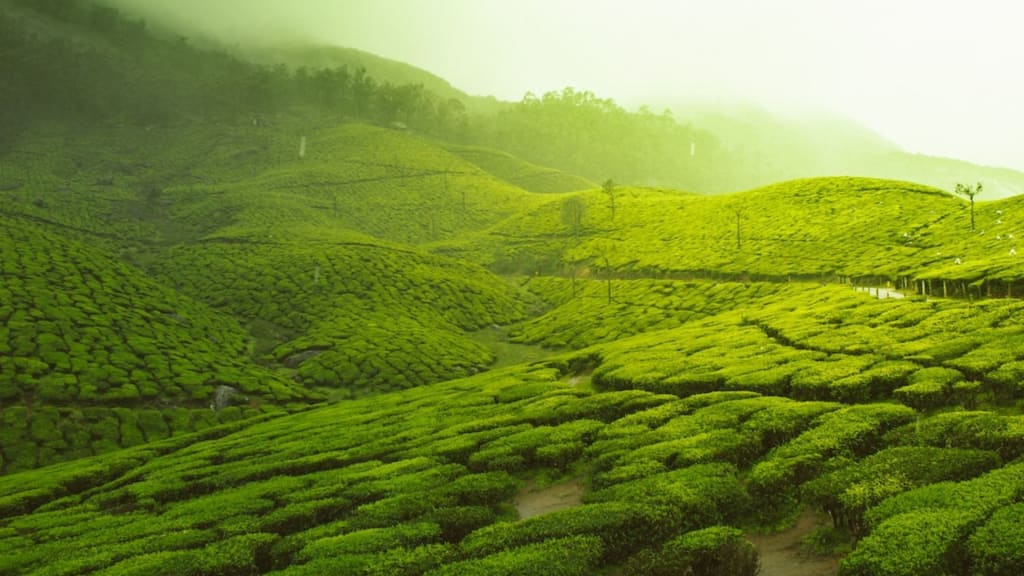
Ecotourism in India offers remarkable encounters and bring constructive change on our planet. From teaching in Kottayam , helping on farms in Dakshina Kannada , or living at a holistic center in Karnal - there are many ways to explore India while making an ecological difference.
Discover some of the best ecotourism destinations across India such as Hampi, Kerala, Andhra Pradesh and more. Get tips for responsible ecotourism travel including how to prepare for your trip with this comprehensive guide about ecotourism in India.
Ecotourism in India: what is it? Why is it important?
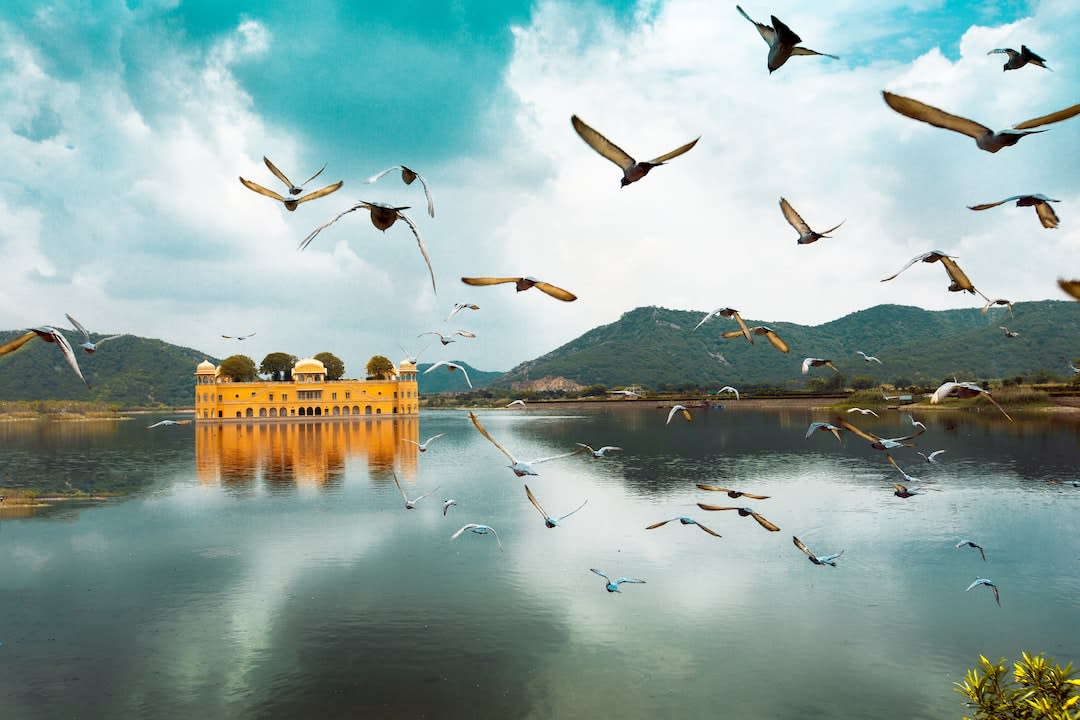
Ecotourism is a type of travel that concentrates on the natural world, sustainability, and conservation. It’s an approach to travel that allows you to experience nature while minimizing your impact on the environment. Ecotourism activities include:
- Bird watching and wildlife viewing
- Camping in natural areas and hiking trails
- Cultural visits to local villages or indigenous communities
- Educational tours about the environment.
Ecotourism has a lot of advantages, both for humanity and the natural world. For instance, it can help protect habitats from destruction by conserving biodiversity, offer economic opportunities to local communities, propagate sustainable practices and create consciousness among travelers about environmental issues.
In India, trekking in the Himalayas and visiting national parks with their abundance of wildlife are some of the best ecotourism activities. Other popular tours include scuba diving off the coast of Hampi or Kerala where you can explore coral reefs teeming with vibrant marine life , or whitewater rafting down river Ganges which is considered sacred by Hindus all over India.
Visitors may also participate in volunteer programs offered by Worldpackers where they exchange skills with locals while living in ecological projects, NGO's or holistic centers, providing them a unique insight into Indian culture and traditions.
The growing popularity of ecotourism in India

Ecotourism in India has experienced a surge of interest over the last ten years, drawing travelers from around the world to its captivating landscapes and diverse culture. The country’s vast range of wildlife reserves, national parks, beaches, mountains and forests make it an ideal destination for those seeking a more sustainable travel experience .
Ecotourism in India has seen a sharp rise due to its varied geography and deep cultural history. Also, various Indian states have implemented initiatives to encourage ecotourism such as establishing protected areas and building eco-friendly infrastructure.
This has made it easier for tourists to access some of India’s most beautiful spots while helping local communities benefit economically from tourism activities. Moreover, there are now numerous organizations that specialize in organizing ecotours across the country – making it even simpler for visitors to explore India responsibly.
Ecotourists can go to some of India's most spectacular destinations , such as Kerala's backwaters, Karnataka's rainforests, Andhra Pradesh's villages, Uttarakhand’s snow-capped peaks, Rajasthan’s desertscapes, Goa’s pristine beaches and Sikkim’s meadows and riverside trails.
For those looking for an authentic experience in nature without compromising on comfort or safety standards – Himachal Pradesh with its Himalayan passes and Arunachal Pradesh with its remote mountain villages provide the perfect opportunity.
The increasing appeal of ecotourism in India is a demonstration of the striking beauty and variety found in its scenery, customs, and wildlife. With Worldpackers' opportunities , travelers can now experience all that India has to offer while making a positive impact on local communities through volunteering projects.
Best ecotourism destinations in India
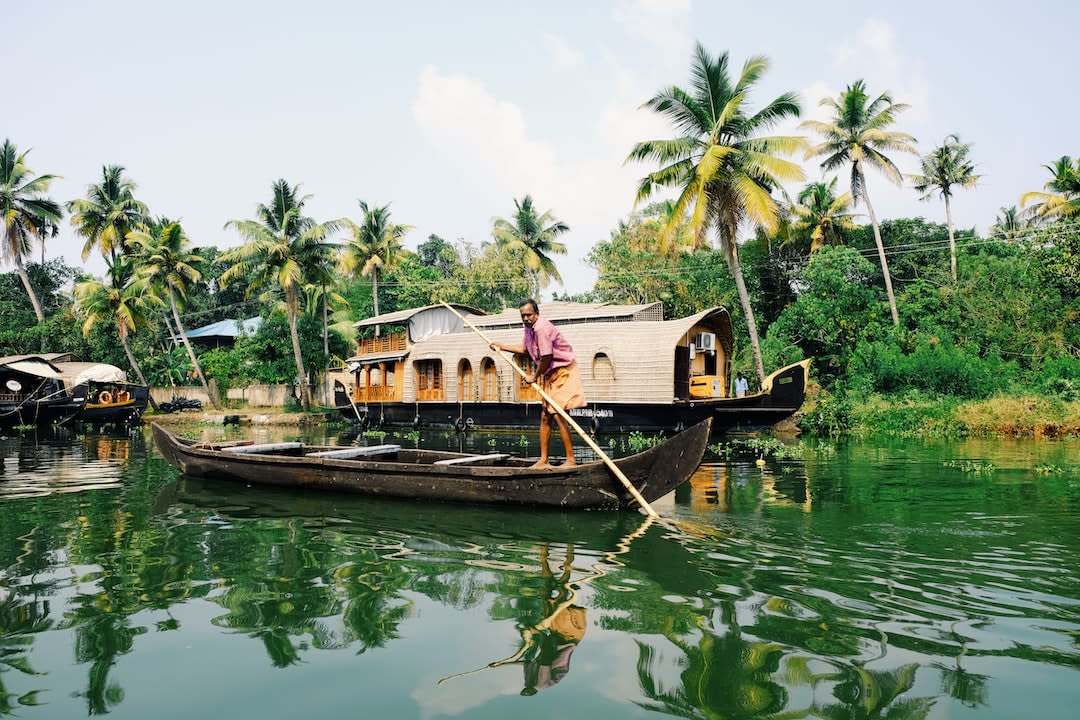
1. Ecotourism in Kerala
Kerala, a state in India’s tropical Malabar Coast region, is renowned for its palm-lined beaches and backwaters. It's also home to numerous ecotourism sites like the Silent Valley National Park .
Here visitors can explore the area’s diverse flora and fauna while enjoying activities such as trekking, boating or bird watching. There are also plenty of cultural attractions like temples and palaces to explore . Kerala is the perfect spot for those seeking a distinctive excursion that blends natural wonders with cultural attractions.
2. Ecotourism in Hampi
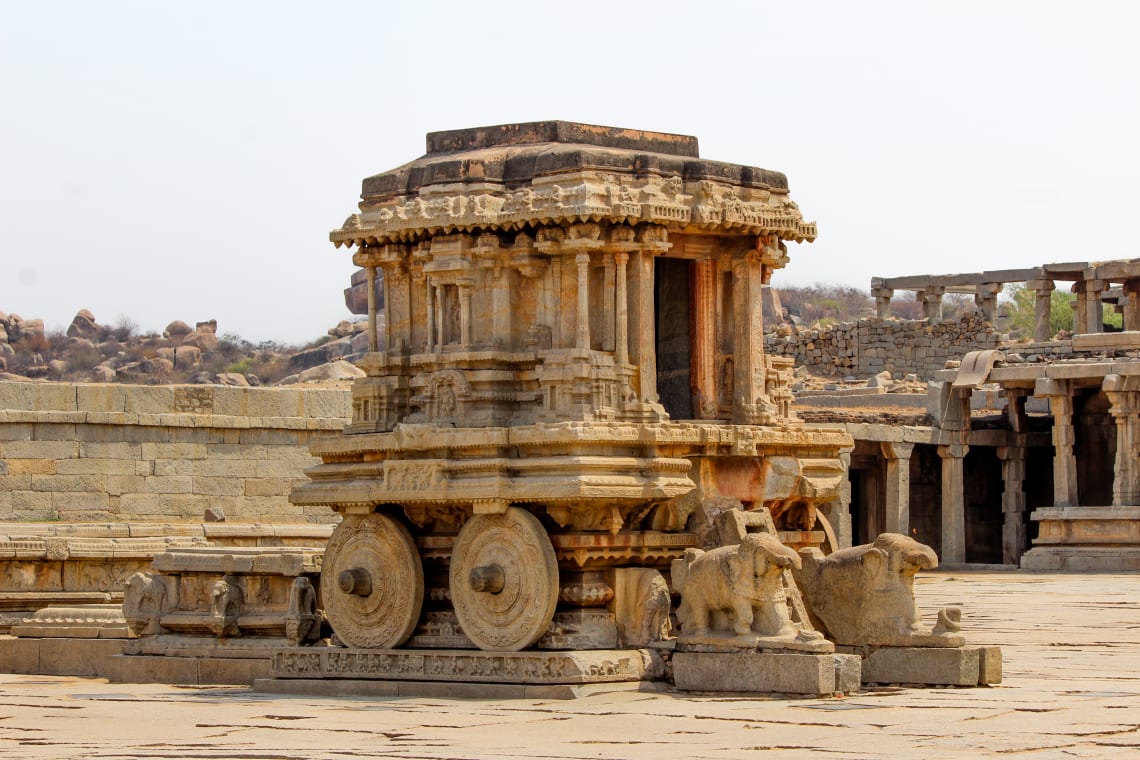
Hampi, a UNESCO World Heritage Site renowned for its ancient ruins and captivating scenery created by wind erosion, is an increasingly popular ecotourism destination in Karnataka.
Its ancient ruins are surrounded by hills dotted with boulders that have been intricately carved by wind erosion over time, creating a stunning scenery for visitors to marvel at . From spotting tigers and elephants in Bandipur National Park to exploring these captivating ruins, eco travellers will be sure to get their fill of nature and culture on this trip.
3. Ecotourism in Andhra Pradesh
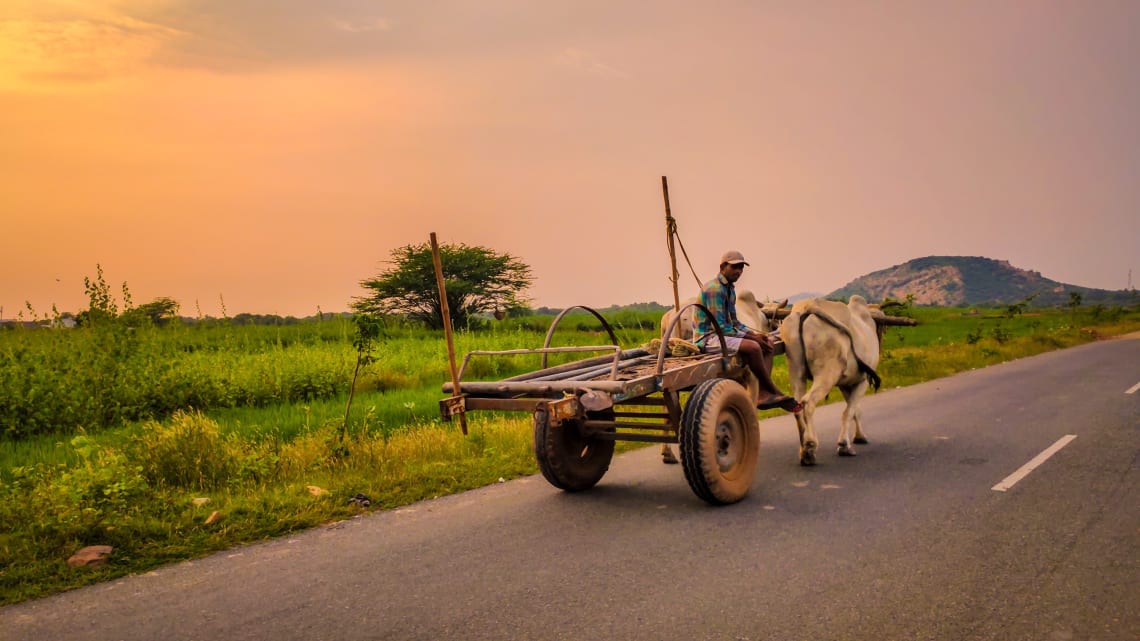
If you're lucky, you may spot endangered species like the blackbuck antelope while exploring wildlife reserves located throughout Andhra Pradesh . For those seeking a more active experience, rappelling down cliffs and mountain biking through dense forests can be enjoyed near Araku Valley, where one can also get to know local customs firsthand from friendly locals eager to share their stories with you.
These three states all have something special on offer when it comes to ecotourism - whether you want an adventure filled holiday full of outdoor activities or just some peace and quiet away from hustle and bustle, these destinations have got something for everyone.
With so much beauty and diversity on display, India definitely deserves its place amongst the top global tourist spots when it comes to ecotoursim experiences, so don't forget your camera because this trip will be worth capturing every moment.
Volunteer with ecotourism in India with Worldpackers

Worldpackers is an online platform that connects travelers with volunteer opportunities all around the world. India has seen a surge in popularity of Worldpackers, due to its cost-effectiveness and adaptability .
Indian Hosts can offers a wide range of benefits, from accommodation and meals to language classes and travel tips . Through this platform, volunteers can gain valuable experience while helping out local communities in need.
You can find free accommodations at hostels, guesthouses, homestays, farms and other unique locations across the country. They also provide meals at most locations as well as access to Wi-Fi, so volunteers can stay connected during their travels.
Try to look for hosts that also provides language classes, in that way, you can learn a little Hindi or another regional dialect while volunteering abroad. Finally, they can provide comprehensive travel advice and safety precautions such as what vaccinations are required before entering certain areas of the country and how best to protect yourself.
Volunteers have a lot of possibilities when it comes to projects available through Worldpackers in India, ranging from teaching English at schools to working on organic farms or conservation initiatives such as planting trees and building water systems for villages without access to clean drinking water.
One major benefit offered by volunteering through Worldpacker’s is the opportunity to immerse oneself into Indian culture while giving back directly by aiding local communities who may not have access to resources otherwise provided by government organizations.
This type of hands-on approach allows volunteers to make a real difference while gaining invaluable life experiences along the way. Furthermore, because these trips are often low cost (or even free), travelers are able to get off the beaten path and explore regions rarely visited by tourists which adds yet another layer of personal growth potential.
Volunteering with Worldpackers in India is an excellent opportunity to acquire meaningful knowledge and have a positive effect on the local population . For those looking for an immersive cultural experience, India offers a range of ecotourism destinations ideal for enriching their travels.
How can you be a responsible ecotourist?
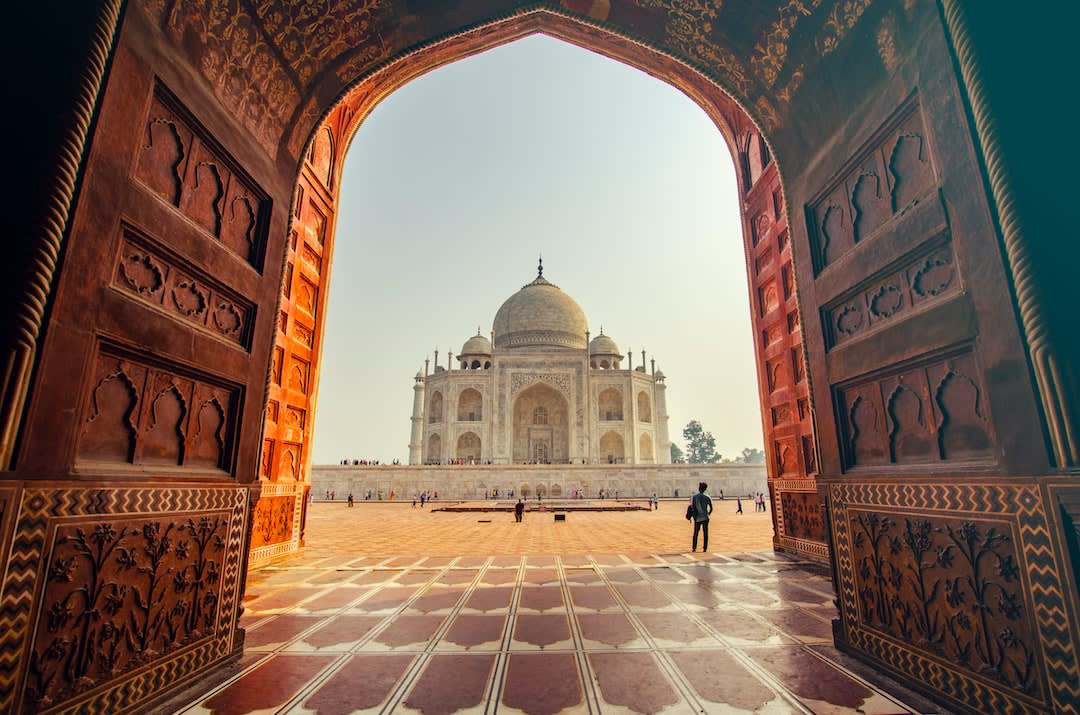
When travelling to India, it is essential to observe and abide by the local cultural norms in order to show respect for the people and places you visit. Respectful behavior should always be practiced when visiting any destination, but this is especially true in India where cultural norms are deeply rooted in tradition.
As an ecotourist, it’s essential that you show respect for the people and places you visit while on your trip. This includes being aware of how you dress , refraining from taking photos without permission , learning some basic phrases in the local language and understanding different religious practices.
Minimizing environmental effects is a fundamental element of responsible ecotourism . Simple steps such as bringing reusable water bottles or bags can make a big difference when travelling around India. You should also try to avoid single-use plastics wherever possible and dispose of rubbish responsibly by using designated bins or recycling points whenever available.
Finally, supporting local businesses and communities is another way to ensure that your trip has a positive impact on its surroundings. This could include:
- Buying locally produced souvenirs from small shops
- Eating at restaurants run by locals instead of international chains
- Opting for public transport over private taxis
- Volunteering with Worldpackers who have projects all across India
By doing so, you will help create economic opportunities for those living nearby as well as preserving traditional cultures that may otherwise be lost due to tourism development pressures.
Exploring India's natural splendour through responsible ecotourism can be a rewarding experience that benefits both the local populace and environment. To ensure you have an enjoyable and safe trip, it is important to prepare properly for your ecotourism adventure by researching your destination, packing appropriately, and getting vaccinated.
Keep reading: ecotourism jobs: discover the world through nature
How to prepare for an ecotourism trip to India?
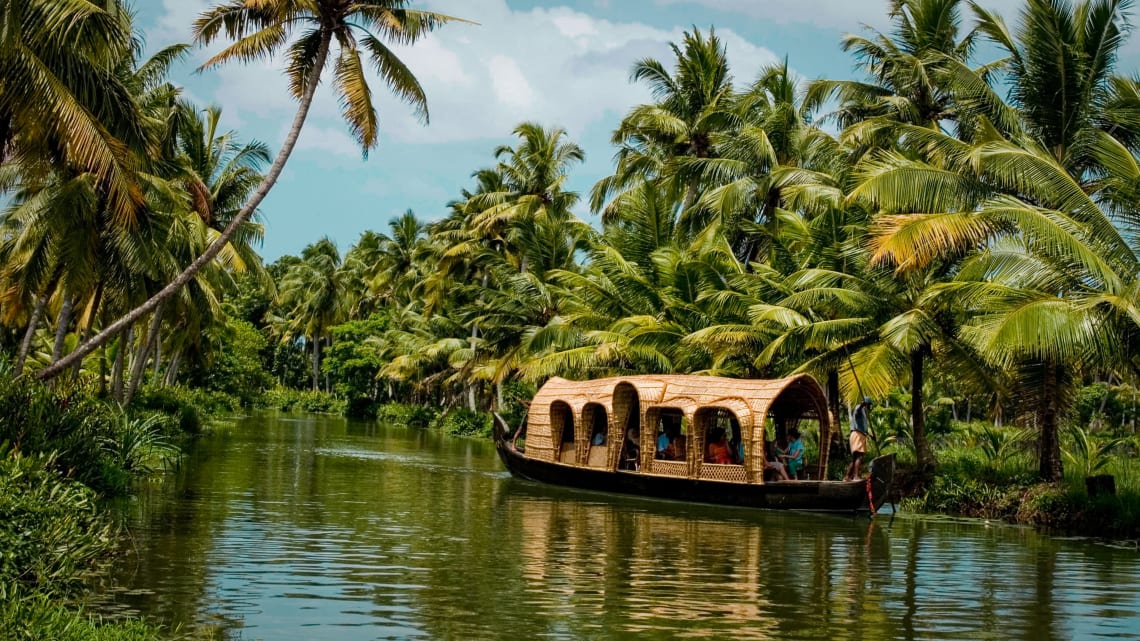
Before embarking on an ecotourism journey in India, it is important to be adequately prepared. Whether you’re planning a trip for yourself or with friends and family, the following tips will help ensure your journey is as safe and enjoyable as possible.
Research your destination
Before booking your tickets, take some time to research the destination you plan on visiting . Check out local attractions and activities available at your destination such as national parks, beaches and temples, so that you can make an informed decision about what type of experience you would like to have while there.
Look also into any potential health risks associated with the area such as mosquito-borne illnesses or water contamination.
Pack appropriately
Once you’ve decided where you want to go and what type of experience you would like to have while there, start packing accordingly.
Bring items that are suitable for outdoor activities, including sunblock, insect repellent and long sleeved shirts and pants made from natural fabrics like cotton or linen which provide better breathability in hot climates than synthetic materials.
Take care of your health
Before travelling abroad, it is essential to consider vaccinations and other preventive measures for a safe and enjoyable experience. For instance, avoid drinking tap water unless it has been boiled first and opt for cooked food instead of raw vegetable and meat.
It's always good to frequently wash hands particularly after using public restrooms and wear protective clothing when outdoors especially during peak mosquito hours (dusk till dawn). Moreover, if you are coming from an infected area outside India , then yellow fever vaccination may be mandatory prior entering the country - check with your doctor beforehand.
In conclusion, these tips should help ensure a safe yet memorable ecotourism experience in India whether it's trekking through the Himalayas or exploring its rich cultural heritage. So don't forget them next time round.
Traveling to India with Worldpackers

Worldpackers offers an incredible opportunity for travelers and backpackers to volunteer in India in exchange for accommodation, food, and cultural experiences. From Kerala to Karnataka, there are plenty of eco-friendly destinations with amazing sights and activities that can be enjoyed responsibly by following some simple tips such as respecting local customs, minimizing your environmental impact, and supporting local businesses.
Before taking off, it's essential to gain knowledge about the area you're traveling to, pack suitable clothing based on the weather of your destination, and get any required vaccinations. So what are you waiting for? Start planning your ecotourism adventure today. With Worldpackers , you can volunteer with local communities and help make a positive impact on the environment while having life-changing experiences.
Whether it be exploring Hampi or living in a Holistic Center in Karnal, ecotourism offers travelers an opportunity to have meaningful encounters that will stay with them for years to come. With this guide, you are now equipped with the knowledge to make your ecotourism trip to India a rewarding and exciting experience that will bring you closer to nature.
Want to learn more about planning your trip? By subscribing to the WP pack plan you have unlimited access to +120 courses at Worldpackers Academy, the travel school made by travelers! Follow @solanomundo for more travel content.
Join the community!
Create a free Worldpackers account to discover volunteer experiences perfect for you and get access to exclusive travel discounts!
Raquel Pryzant
www.solanomundo.com.br
Travel journalist, author of the @solanomundo project and collaborator in different media such as Viajes National Geographic, Folha de S. Paulo and Qual Viagem Magazine. Read more: www.solanomundo.com.br
Be part of the Worldpackers Community
Already have an account, are you a host, leave your comment here.
Write here your questions and greetings to the author
Muhammaddiyor
May 12, 2023
Jun 04, 2023
Hi.. Do check our blogs on our website holidaydada.com our most recommend blog https://holidaydada.com/2023/07/04/outdoor-adventures-in-surrey-hiking-biking-and-beyond/ read it out. Thank you
More about this topic

Japan on a budget: live like a local and save your dollars
Australia travel tips for first-time travelers: when to visit and the best things to do.
Top 10 things to do in Indonesia: Bali and beyond
How do Worldpackers trips work?
As a member, you can contact as many hosts and travel safely as many times as you want.
Choose your plan to travel with Worldpackers as many times as you like.
Complete your profile, watch the video lessons in the Academy, and earn certificates to stand out to hosts.
Apply to as many positions as you like, and get in contact with our verified hosts.
If a host thinks you’re a good fit for their position, they’ll pre-approve you.
Get your documents and tickets ready for your volunteer trip.
Confirm your trip to enjoy all of the safety of Worldpackers.
Have a transformative experience and make a positive impact on the world.
If anything doesn’t go as planned with a host, count on the WP Safeguard and our highly responsive support team!
After volunteering, you and your host exchange reviews.
With positive reviews, you’ll stand out to hosts and get even more benefits.
NatureDiary » Blog » Travel Guides » Bucket List Destinations
Ecotourism – Importance, Pros, Cons, & Destinations
The last decade has witnessed ecotourism gain traction in India. The country’s diversity with plenty of ecotourism destinations has made this happen. Although it is still a relatively new type of travel, India has already earned its spot as one of the best places for ecotourism globally. The government has taken various steps to promote the importance of ecotourism too. If you love travelling, there are ample ecotourism opportunities in India.
Ecotourism has both advantages and disadvantages. Especially when people are looking for a break from pollution-filled urban environments, nature tourism has become a popular solution. India has no dearth of natural forests, biological parks, and wildlife sanctuaries. A growing number of people now seek to explore such places and spend more time in nature. Indeed, going on an ecotourism trip is a great way to spend a vacation and enjoy your time away from the bustle of the city.
However, there is more to ecotourism than visiting places known for their natural beauty. This is a form of sustainable tourism that helps promote the culture and livelihood of the locals and the natives. Moreover, the best practices for ecotourism that I am going to explain, aren’t destructive or invasive towards the environment.
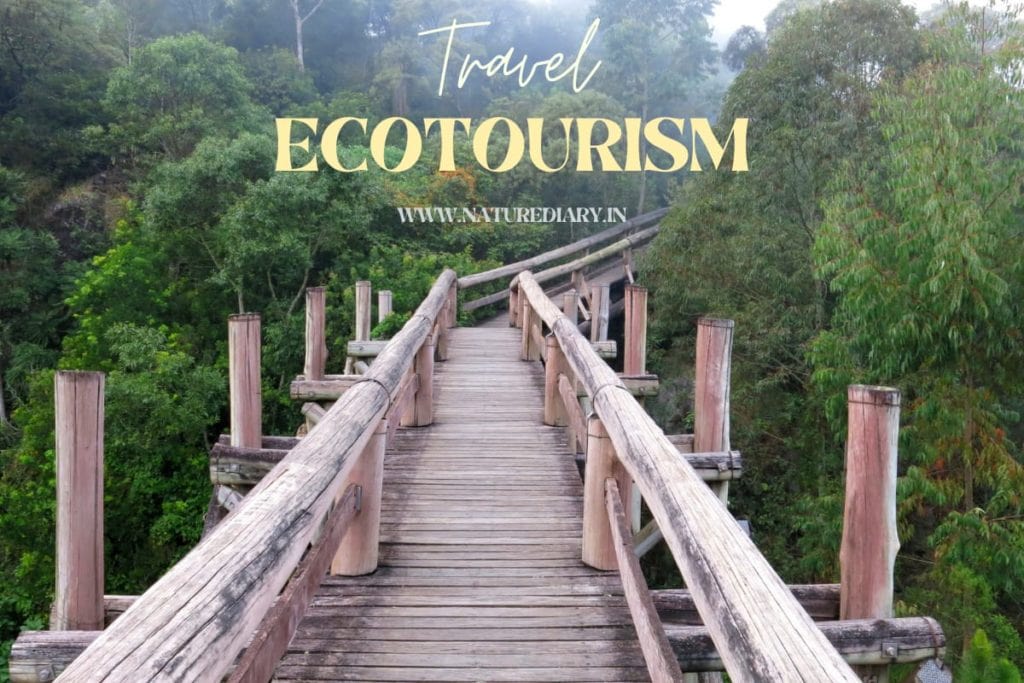
What Is Ecotourism?
Ecotourism refers to a sustainable form of tourism where people primarily visit places rich in natural resources, such as mountains and wildlife sanctuaries. It may involve a variety of fun and eco-friendly activities like hiking, cycling, trekking, birdwatching, camping, etc. Village homestays are a great way to enjoy accommodation in peaceful and serene places while supporting local businesses.
One of the most notable aspects of sustainable ecotourism is its focus on preserving the environment and natural resources. After all, this tourism segment is based completely on natural resources as the key attraction for tourists. Poor practices that lead to the destruction of these resources will harm the tourism industry itself, besides destroying the environment. Tourists visiting such places are expected to be responsible and follow eco-friendly practices.
Importance Of Ecotourism
There are reasons why the government supports the growth of ecotourism in India. Of course, the abundance of ecotourism destinations is a major factor. However, ecotourism is also important to the economy, tourism industry, environment, and local communities. The following points should explain the importance of ecotourism-
- Supporting The Local Community
The tourism sector is certainly one of the notable contributors to India’s economy, bringing in plenty of revenues. However, ecotourism stands out particularly due to its benefits to local economies. Homestays, restaurants, and shops run by natives and locals generate revenues, which aids them with their livelihood and helps such regions flourish.
- Protecting The Environment
In addition to helping spread awareness, sustainable tourism also has direct benefits for the environment. Using natural resources to generate revenues from ecotourism helps protect them from destruction. Moreover, ecotourism widely endorses green modes of transport and other eco-friendly practices.
- Spreading Awareness
Ecotourism helps to spread awareness regarding the environment and natural resources. Hearing and reading about beautiful forests is one thing, but visiting them in person is far more effective in growing an urge to help conserve them. As people come across various endangered species and learn about them, they are more likely to embrace eco-friendly practices.
- Fostering Understanding Between Communities
Many ecotourism destinations lie in rural regions inhabited by various indigenous communities. Visiting such places and spending time with such communities helps people learn about their culture, way of life, and struggles. This promotes greater understanding, tolerance, and kindness between different races and cultures.
- Infrastructure Development
Connectivity features, transport, and infrastructure are crucial in attracting tourists. There are plenty of examples of development projects being undertaken in poorly developed regions to promote ecotourism. This helps such regions grow sustainably while preserving the local resources too. This, in turn, ensures a better life for the locals.
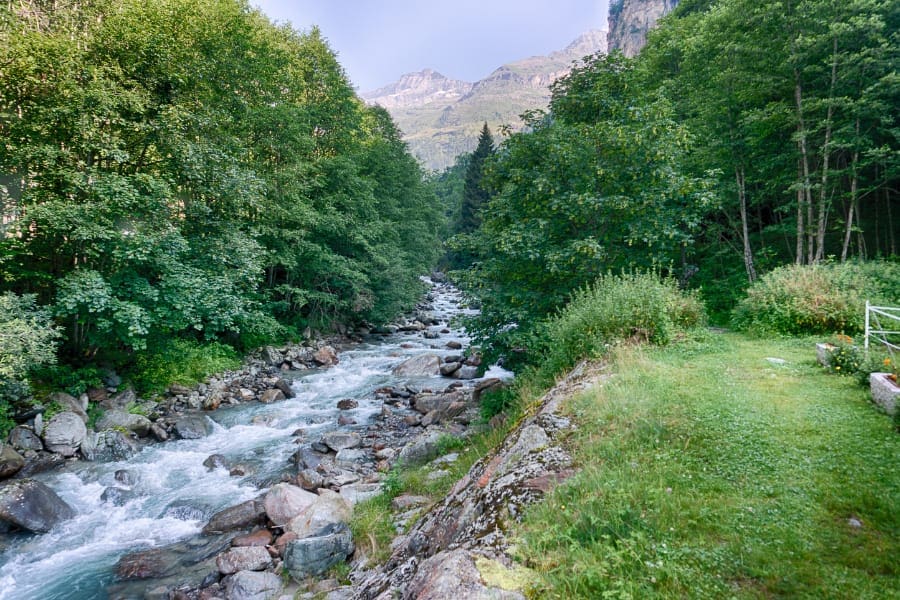
Advantages Of Ecotourism
Ecotourism comes with an array of benefits, which is reflected in its increasing popularity. The most notable among these are-
- Amazing Nature Travel Experiences
Firstly, the key reason why an increasing number of people are opting for nature travel is that it offers a beautiful experience. Different ecosystems come with unique flora and fauna exclusive to those places. Moreover, spending time surrounded by natural beauty is simply a great way to spend your holidays. Certain ecotourism activities like hiking, trekking and camping are also very adventurous and exciting, guaranteeing great memories.
- Gain Knowledge In Different Areas
Ecotourism also comes with great learning experiences for tourists of every age. Exploring various locations and communities comes with a treasure trove of knowledge about the world. You’d learn first-hand about people from various ethnic groups and the customs they follow. The practical knowledge gained through nature tourism is also extremely helpful for students or professionals specializing in certain subjects, such as zoology, botany, etc.
- Mental And Physical Health Benefits
Visiting and spending time in places surrounded by nature is also great for your health. Especially for individuals residing in cities, visiting ecotourism destinations full of lush greenery is beneficial. Not only does it offer a refreshing and serene environment for a change, but the clean and unpolluted air helps the body relax and rejuvenate. Visiting a wildlife sanctuary or a mountain is far healthier than visiting an urban place.
- A Diverse Range Of Destinations
One of the best things about sustainable ecotourism is the diverse range of options for every individual. After all, India is one of the best countries in the world in terms of biodiversity, with plenty of ecotourism destinations. Besides catering to individuals with different tastes, such a diverse variety of destinations also ensures great travelling experiences for different budgets. Whether you want a quick, affordable trip or a long homestay, you can likely find something suitable.
- Creating Employment
Are you looking for a way to help people live a sustainable life? Well, you contribute to the creation of employment through ecotourism. As tourism grows, so do the opportunities for locals to launch eateries and other small businesses. In India, the cottage industry deserves special mention. Many locals residing in popular ecotourism destinations make a living by selling handicrafts.
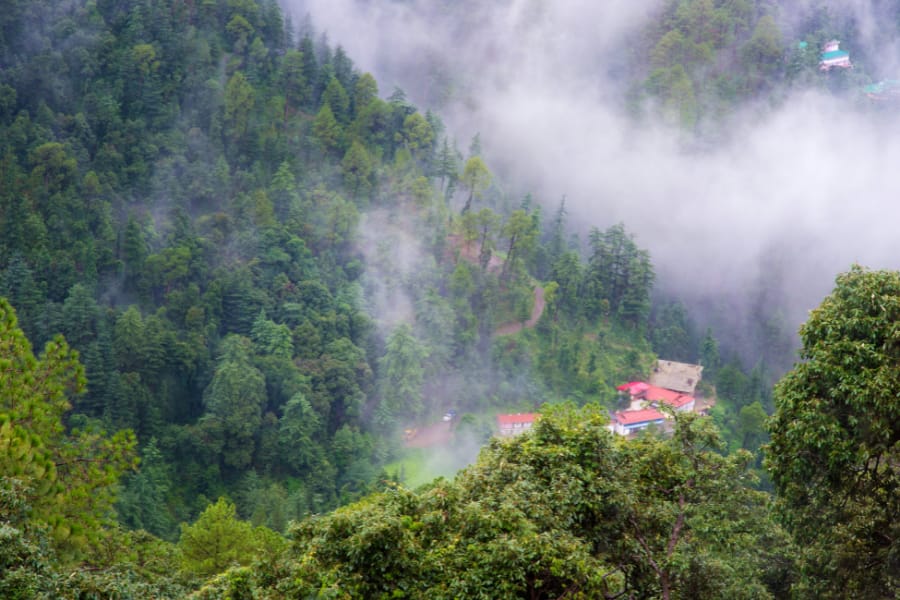
Disadvantages Of Ecotourism
Clearly, ecotourism has amazing benefits for the tourists, the locals, and even the natural flora and fauna. However, there are also certain drawbacks of ecotourism, such as-
- Less Accessibility
As ecotourism involves enjoying nature in its pristine form, such locations often lack adequate infrastructure. This can make certain places hard to access, especially in poor weather conditions. For instance, some places have limited public transport or lack modern roads. Before going on an ecotourism trip, always make sure to research the available connectivity features beforehand.
- Lack of luxury
One of the key differences between regular tourism and ecotourism is that the latter allows you to stay relatively closer to nature. Hence, if you are generally accustomed to luxurious travelling experiences, you’d have to adapt to staying at homestays or camping in tents . While high-end hotels and other facilities are now available at many ecotourism destinations, it is still advisable to opt for accommodation and transport that offers a more natural experience.
- Greenwashing
Greenwashing is malpractice where some tour operators do not follow environment-friendly practices, although they claim to do so. Hence, if the supposed eco-friendly advantages of sustainable tourism are a reason why you chose such a trip in the first place, this would beat the purpose. It is good to ask detailed questions before you hire a tour operator if greenwashing concerns you.
- Displacement Of Indigenous People
While the primary goal of ecotourism is to promote the sustainable development of local communities, it often ends up displacing them instead. Natives of the most marketable ecotourism may potentially be relocated to make space for accommodations for the expansion of other tourism infrastructure. Besides, the locals may also dilute their own culture to cater to tourists.
- Depletion Of Natural Resources
In case a region with a fragile ecosystem turns into a popular tourist attraction, it can lead to excessive pressure on the area’s natural resources. This can cause an imbalance in the environment and deplete the resources dispute measures taken to promote sustainable tourism. Overcrowding is a major issue too and can affect wildlife negatively.
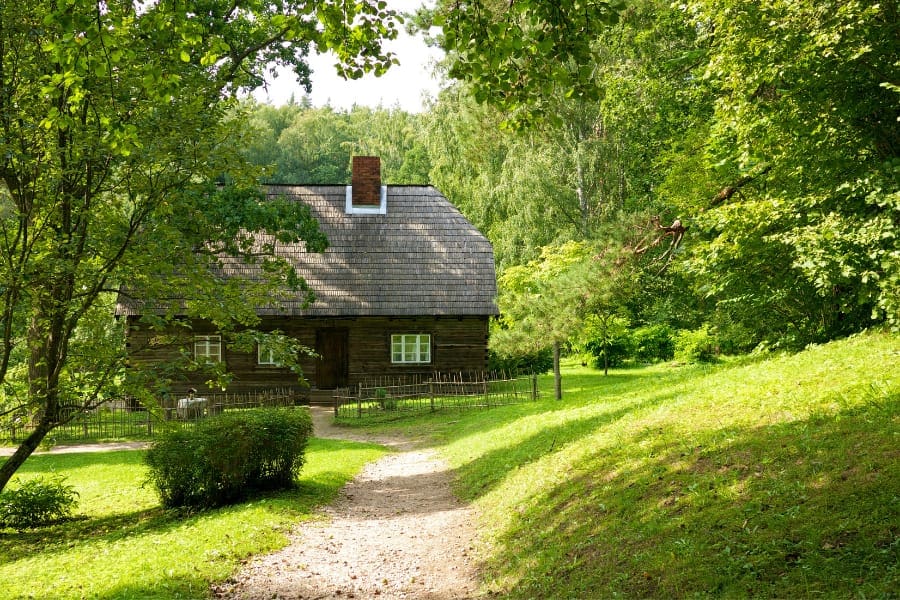
Best Ecotourism Destinations In India
Rich in biodiversity, India is home to numerous ecotourism destinations. Especially in recent times, active efforts by the authorities have led to the development of several new places for ecotourism. With that said, let us take a look at the examples of some of the best destinations for ecotourism in India-
1. Odisha Ecotourism Nature Camps
When it comes to the best places for ecotourism in India, Odisha is undoubtedly a great choice. This state includes 37 nature camps at Bhitarkanika, Satkosia, Simlipal, Chilika, Bichitrapur, Chandipur, Koraput, and other places. Odisha ecotourism also offers jungle safari at Chandaka Wildlife Sanctuary, Debrigarh Wildlife Sanctuary, Similipal Wildlife Sanctuary, etc.
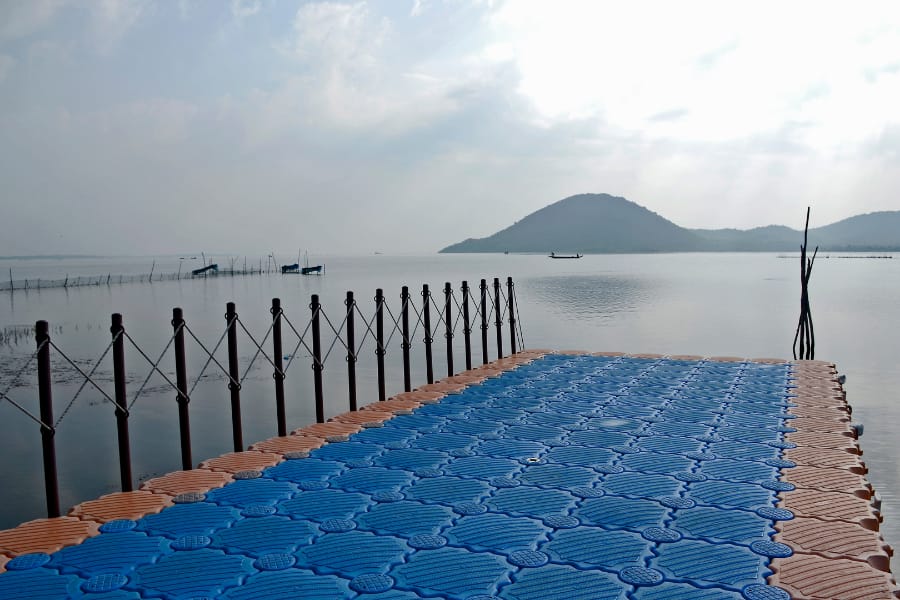
According to Odisha Forest Development Corporation ( OFDC ), Odisha houses 110 species of reptiles, 20 species of amphibians, 479 species of birds, and 86 species of mammals, including elephants, tigers, leopards, sambar, spotted deer, wild boar, giant squirrel, crocodile, and many migratory birds. So, if you are a wildlife enthusiast or love birdwatching, these nature camps and sanctuaries would be the ideal ecotourism destinations for you.
The Govt. of Odisha has worked pretty well towards promoting ecotourism on a large scale. All of the nature camps mentioned above have luxury accommodations, good quality foods, and attractions for boating, birdwatching, trekking, hiking, camping, stargazing, photography, etc. Blue Flag Golden Sea Beach near Puri is another project by the Govt. of Odisha to promote sustainable tourism with eco-friendly practices.
2. Thenmala Ecotourism Project, Kerala
Located in Kerala, Thenmala is the first planned ecotourism destination in India. “Thenmala” translates into “honey hill” in the local language as high-quality honey is exported from this area. The World Tourism Organization has selected Thenmala as one of the premier eco-friendly projects in the world.
Thenmala consists of ten notable tourist spots, including hill ranges spanning three districts – Thiruvananthapuram, Kollam, and Pathanamthitta. With dense forests, tree plantations, and plenty of rubber trees, Thenmala offers a clean environment rich in lush greenery.
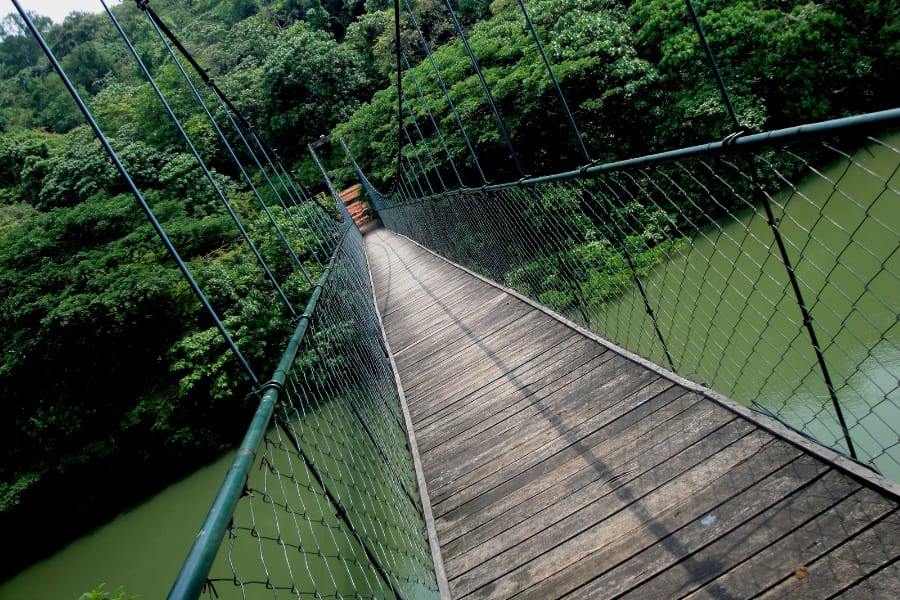
At Thenmala, you can enjoy your time in tree huts built deep in the forests. These huts allow tourists to enjoy the closeness to Mother Nature to the fullest. The region also includes the Shendurney Wildlife Sanctuary , and the boat ride to this sanctuary offers a remarkable experience. You can also enjoy various other activities in Thenmala, including adventurous ones like rock climbing and mountain biking.
Kerala is also home to several other ecotourism attractions that make it one of the best states for tourists to visit. Located on the Western Ghats, next to the Arabian Sea, this tropical region is rich in biodiversity and offers amazing closeness to nature. In fact, National Geographic Traveller has listed Kerala among the places that one should visit at least once in a lifetime.
Kerala presents tourists with ample opportunities to indulge in various sports and other activities. These include boating, mountain biking, rock climbing, and more. Besides the diverse flora and fauna of Thenmala, Kerala is also home to beautiful water bodies. All these attractions make Kerala the perfect destination for nature lovers. Kerala is one of the places where Ayurveda, the ancient healing science of India, flourished.
Besides Thenmala Ecotourism Project, some of Kerala’s best nature tourism spots include Silent Valley National Park, Munnar, Periyar National Park, Gavi, etc. The scenic beauty of the backwaters is something you shouldn’t miss.
3. Dzongu Valley, Sikkim
Sikkim presents a rich cultural heritage home to several tribes and other indigenous communities. The beautiful hills and the diverse forests in Sikkim make it perfect for nature tourism. The state is home to around 200 species of butterflies, more than 2000 species of moths, almost 600 species of birds, 558 species of orchids, 39 Rhododendron species, and more. The Khangchendzonga National Park lies in Sikkim too and is listed by UNESCO as one of the National Heritage Sites in the world.
Among all travel destinations in Sikkim, Dzongu valley- the holy paradise land of 4000 indigenous Lepchas is a remarkable ecotourism destination in India. Located 65 Km away from Gangtok, the capital of Sikkim, it is divided into two regions- Upper Dzongu and Lower Dzongu.
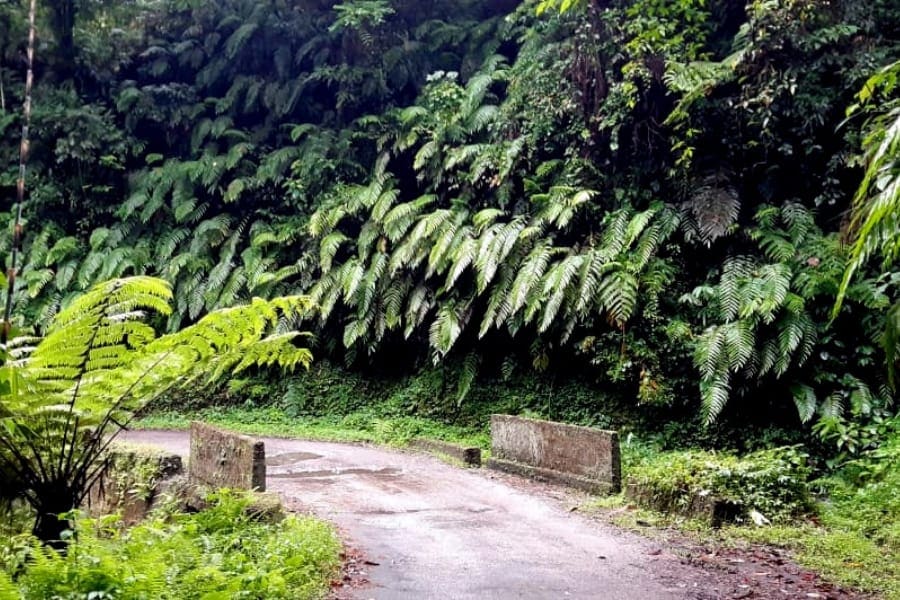
Dzongu covers around 78 sq. Km of an area with an elevation ranging from 700-6000 meters. The landscape is diverse with snowy mountains, and dense forests full of ferns, orchids and rhododendrons, rivers, waterfalls, and whatnot! The Govt. of Sikkim has made it a protected area where you need a tourist permit to enter.
Dzongu in Sikkim is a great eco-tourism destination for you if you love exploring the mountains and culture of the indigenous people. Besides these, there is no shortage of adventure activities like hiking and trekking opportunities in Dzongu valley either.
Sikkim is the first “organic state” in India, and the whole food chain at Dzongu works on organic farming without using pesticides or inorganic nutrient supplements. Besides farming, many locals rely on ecotourism in the peak seasons. Lingthem Lyang Homestay and Lepcha Homestay are among the most recommended ecotourism homestays at Dzongu valley.
4. Khonoma Village, Nagaland
If you take pleasure in exploring indigenous communities, Khonoma Village in Nagaland is a great eco-tourism destination for you. This village is more than 700 years old, so it doesn’t come as a surprise that it has a rich cultural heritage. The Angamis, one of the most notable tribes in Nagaland, have put a lot of effort into conserving natural resources. They have also made tremendous headway in ensuring better administration of the village and helping resolve conflicts.
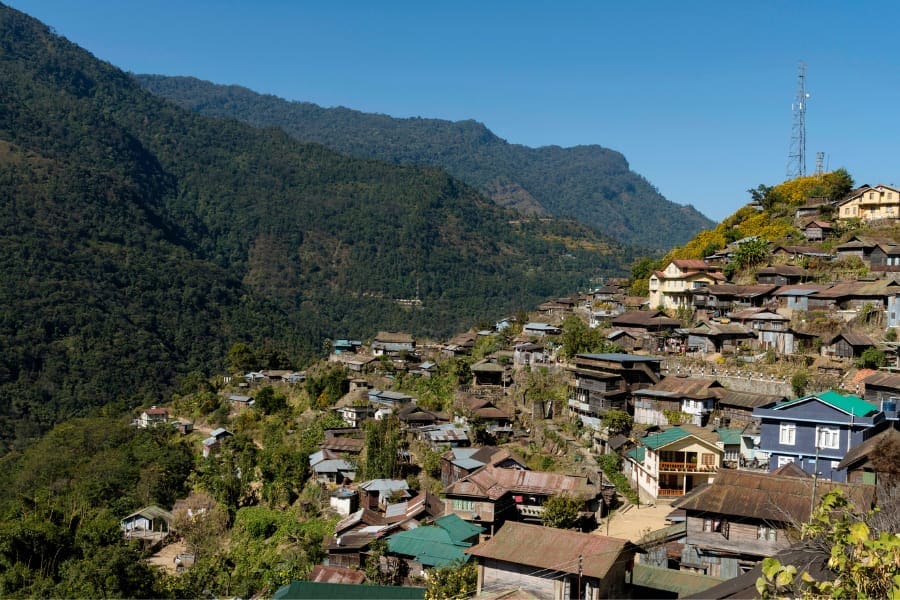
Considering how much the natives are involved in the development of the village, you can stay assured of a unique experience. Interacting with the villagers and indulging in their activities will help you understand their culture and traditions. In this regard, you might also want to note that Khonoma is the only Indian village known for its self-identity and the global citizenry at the same time.
Besides the rich indigenous culture here, Khonoma also stands out for its natural beauty. This village is also a great place to witness terrace farming in practice. The Khonoma Nature Conservation and Tragopan Sanctuary (KNCTS) is another key attraction for nature tourism.
5. Sundarbans, West Bengal
It comes as no surprise that Sundarbans, the largest mangrove forest in the world is a top destination for nature travel. Located on the coastal fringes of West Bengal, this forest offers a unique ecosystem rich in flora and fauna alike. The Sundarbans is a vast area with plenty of tourist attractions, including the Bhagabatpore Crocodile Project, Kalash beach, Lothian Island sanctuary, etc.
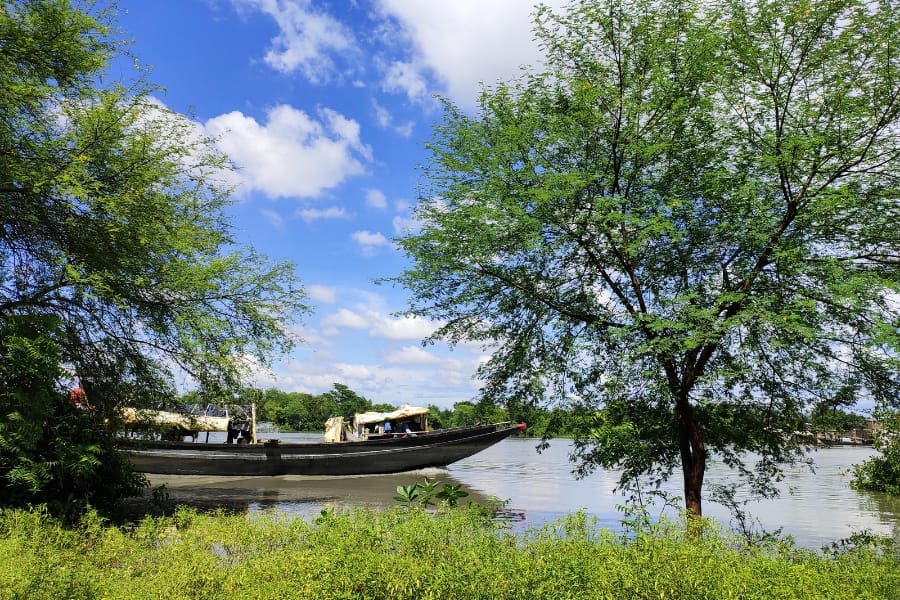
The Sundarbans Tiger Reserve spans 2585-sq-km and contains over a hundred Royal Bengal Tigers. In addition to them, this deltaic region is also home to water monitors, Gangetic dolphins, saltwater crocodiles, luminescent Kingfishers, and more. Besides wildlife, the vast expanses of greenery are a prime attraction too, with plenty of plant species.
UNESCO has recognized Sundarbans as a World Heritage Site, thanks to its biodiversity and indigenous culture. Various measures have been taken to promote responsible tourism in the Sundarbans, including infrastructural development and spreading awareness. Ecotourism has also helped the locals find alternative means of livelihood, thus reducing their dependence on forest resources. This is a perfect example of eco-tourism aiding in the conservation of nature.
If you like wildlife, also visit Jaldapara National Park in North Bengal. It is the second largest home of Asiatic one-horned rhinos after Assam’s Kaziranga National Park.
6. Mawlynnong Village, Meghalaya
Are you looking for an ecotourism destination that will help you enjoy a refreshing experience in a clean and green environment?
If so, you’d love Mawlynnong Village in Meghalaya, the cleanest village in Asia, as well as India. In fact, the village has completely banned the use of plastic and has eco-friendly waste collection measures to keep the streets clean of litter. This, coupled with the ample lush greenery and nearby living root bridges in Mawlynnong Village, helps create a healthy and reviving environment.
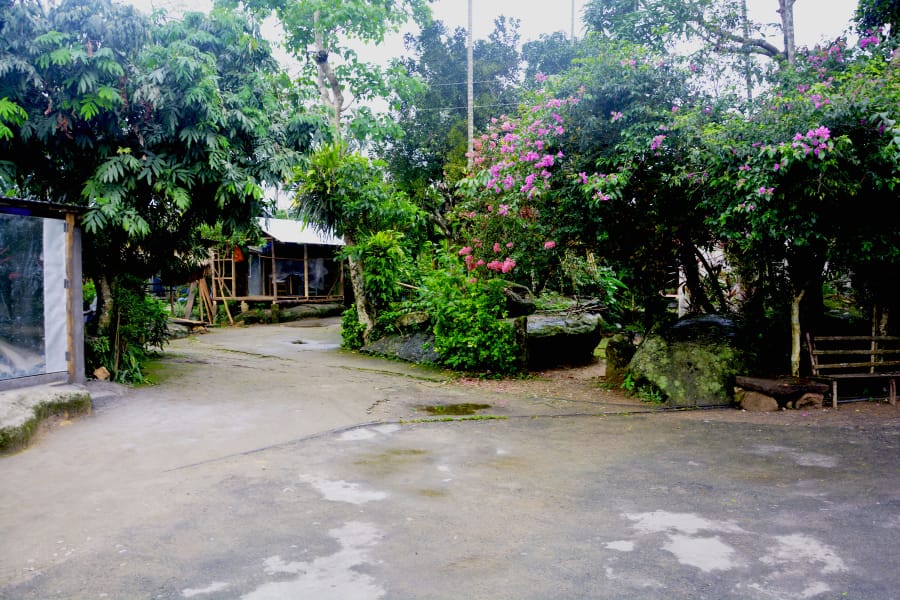
This village comes with beautiful cottages and homestays for accommodation. Mostly made of bamboo and wood, these buildings offer close proximity to nature. The bamboo machans in Mawlynnong Village will allow you to enjoy great views of the village and the surrounding plains, towards the India-Bangladesh border. While you stay in the village, you may explore the culture of the indigenous Khasi tribe that lives here.
Overall, Mawlynnong Village in Meghalaya is an amazing place to relax and enjoy the beauty of nature. For these reasons, Mawlynnong village is one of the best places to visit in Meghalaya . You may also visit Shiliang Jashar, another beautiful village located close by if you have time. Besides the lush green vegetation, the region also has beautiful waterfalls, crystal-clear streams, and an iconic bamboo bridge.
Apart from these places, there are also some other great Indian ecotourism destinations like Pawna Lake Camping in Maharashtra, Gujarat, Chota Mangwa Ecotourism Complex in West Bengal, etc. While visiting any of these locations, you should follow some eco-friendly practices.
Eco-Friendly Practices For Ecotourism
One of the key aspects of responsible tourism is following eco-friendly practices that help conserve the environment. If you are going on an ecotourism trip, you should be responsible for how you travel and aim to minimize your impact on nature. Here are a few eco-friendly practices that tourists should follow for ecotourism-
- Avoid Creating Plastic Waste
The local authorities in ecotourism destinations try hard to keep these places clean and green. In some places like Sikkim, the use of plastic bottles is banned entirely. However, even if you visit a place without such restrictions, avoid creating plastic waste during your travel.
During our travel all over India, we have noticed some unaware or not enough responsible tourists always dispose of different types of garbage. This includes Styrofoam plates and containers for picnics, empty food packets, and plastics amid Mother Nature. This is a bad practice and should never be done.
For example, check this photo with a stream flowing from a waterfall (behind) and descending the terrains. It looks beautiful, isn’t it?
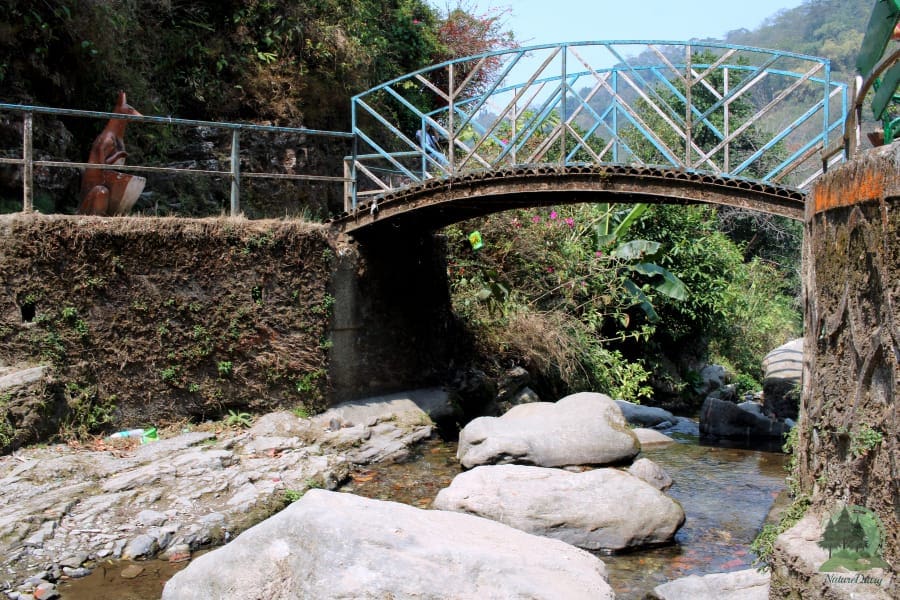
But, if you zoom the photo and look closely, you will find several chip packets and plastic water bottles lying around the stream. The irony is there is a dustbin just around the corner, which some tourists did not use.
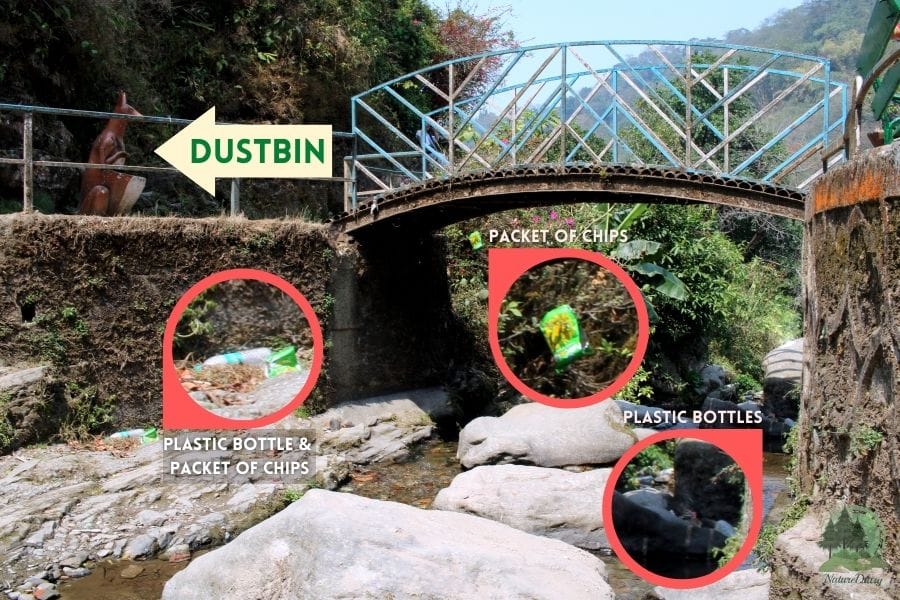
These plastic wastes are carried away to the river and ultimately pollute it. This is straining to the eyes, and deep inside, it slowly destroys the natural habitats and make them unsustainable for wildlife.
So, please be responsible and teach your children not to throw packets of potato chips, bottles of cold drinks, and chocolate wrappers here and there. Collecting these wastes in a bag and disposing of them in the nearest dustbin is an excellent eco-friendly practice.
- Do Not Purchase Wildlife Products
Buying souvenirs during travels is a common practice among tourists. While there’s nothing wrong with it, and it’s a good idea to bring home something memorable or buy them as gift items, avoid purchasing wildlife products.
For example, various animals are killed for fur, while identical products made of faux fur are available in the market too. Handicrafts and other items that aren’t the result of animal cruelty make far better souvenirs.
- Share Vehicles With Other Tourists
If you rent a car, try to share one with other tourists unless you are travelling in a group and need a whole car for yourself. This will help cut carbon emissions greatly while helping you save money. Moreover, travelling together with other tourists can also help you meet amazing people and help you enjoy a great experience.
- Travel On Foot When Possible
Rather than renting a car throughout the trip, travel on foot when you can. Alternatively, you can also choose to rent a bicycle if possible. This will help you reduce your carbon footprint and avoid polluting the environment.
After all, the whole point of ecotourism is to enjoy the beauty of unpolluted nature. Walking, hiking or trekking rather than taking a car will also enable you to explore the beauty of the place more closely and notice every detail.
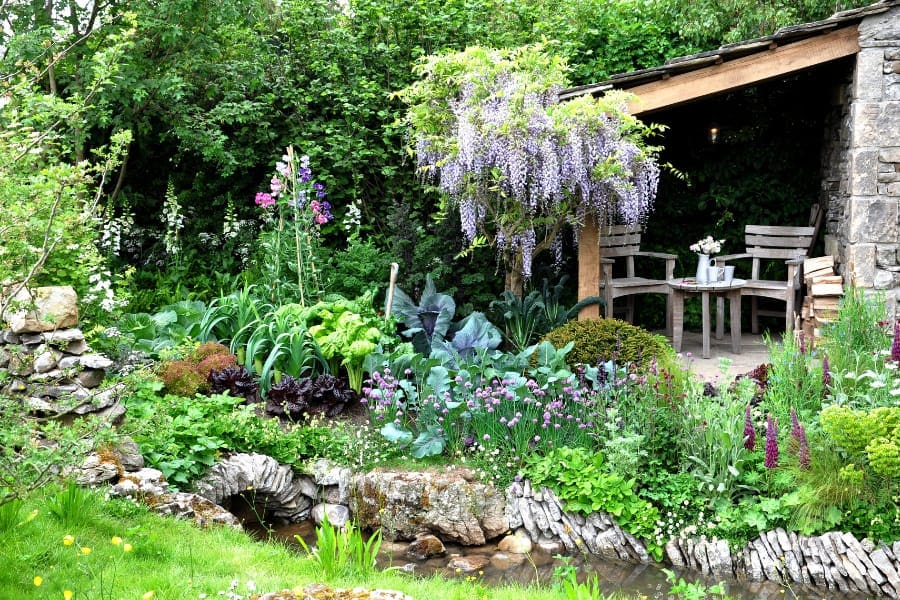
Embrace Ecotourism
If you have been wondering whether it is a good idea to go for eco-friendly nature travel rather than traditional tourism specifically, you must be aware that it is indeed. Ecotourism is important with several advantages and disadvantages that will help you enjoy experiences that you will remember for a lifetime. Additionally, considering the positive impacts of responsible tourism on the environment and the economy, you should embrace it.
While the six destinations listed above are among the best ecotourism destinations in India, there are many new places that are getting popular. Such locations are spread all over the country – all you have to do is research your options. If you aren’t sure about how to go about it, you can always seek the help of a tour operator that offers ecotourism services.
We hope that you have enjoyed this article. Let us know your experience! If you like us to write on any specific topic, send your request to [email protected] . Your feedback is highly appreciated. We will love to hear from you!
Is This Article Helpful? Cancel Reply
- Rating 5 4 3 2 1
- India Tour Packages Shimla Manali Kullu Goa Kashmir Spiti valley Srinagar Nainital Dalhousie Mussoorie Ooty Munnar Kerala Andaman Sikkim Himachal Pradesh International Tour Packages Thailand Singapore Sri Lanka Mauritius Maldives Dubai Bhutan Seychelles Bali Switzerland New Zealand Hong Kong Istanbul Greece Italy United Kingdom

What is Ecotourism? Eco tourism destinations in India

Debalina Deb Roy
Ecotourism is a form of sustainable tourism that focuses on conserving natural environments and promoting the well-being of local communities. It is a type of travel that is responsible and mindful of the impact it has on the environment and the people who live in the destination. The goal of ecotourism is to provide travelers with an opportunity to experience and appreciate the natural world while also supporting conservation efforts and benefiting the local economy.
This type of tourism promotes responsible travel practices, including minimizing waste and pollution, reducing carbon emissions, and respecting local cultures and traditions.
Ecotourism destinations often include national parks, wildlife reserves, and other protected areas where visitors can observe wildlife in their natural habitats and learn about conservation efforts.
Activities may include hiking, birdwatching, whale watching, kayaking and other outdoor adventures that allow travelers to connect with nature.
One of the key aspects of ecotourism is the emphasis on community involvement and benefit. Local communities are often involved in the planning and management of ecotourism projects, and tourism revenue is reinvested in community development programs. This can include supporting local businesses, providing education and training opportunities, and promoting cultural preservation.
Ecotourism also places a strong emphasis on environmental sustainability. Tour operators and accommodations are encouraged to implement sustainable practices such as using renewable energy sources, reducing waste and water usage, and preserving natural habitats and biodiversity. Overall, ecotourism is a form of responsible travel that aims to promote sustainable development and protect the natural environment.
By supporting ecotourism , travelers can help to conserve biodiversity and support local communities while also experiencing the beauty and wonder of nature in a responsible and ethical way.
Suggested read Tripclap: Promoting Sustainable Travelling By Leveraging Cutting-Edge Technologies
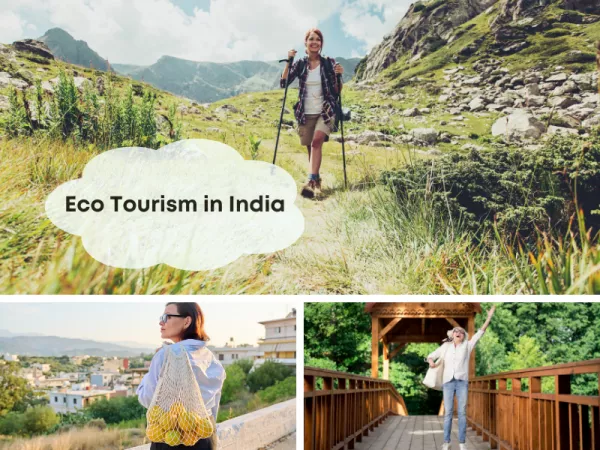
Sustainable tourism and eco travelling
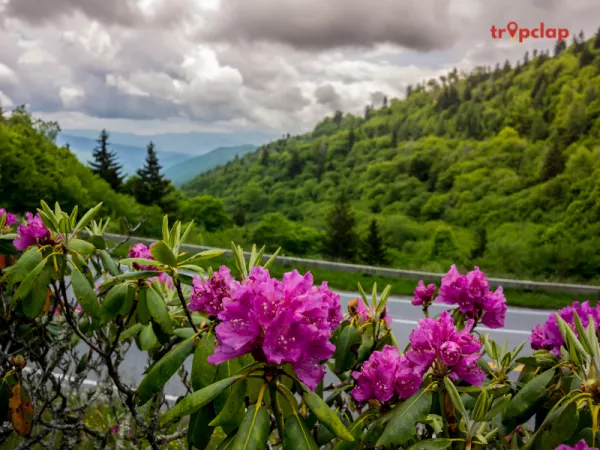
How to promote eco tourism in India
Renowned destinations for eco-tourism in india.

- Periyar National Park, Kerala:
- Sundarbans , West Bengal:
- Kaziranga National Park , Assam:
- Khangchendzonga National Park, Sikkim:
- Valley of Flowers , Uttarakhand:
- Agumbe Rainforest, Karnataka:
- Andaman and Nicobar Islands:
- Rann of Kutch , Gujarat:
- Hemis National Park, Ladakh :
- Gir National Park , Gujarat:
Places to visit in Kerala
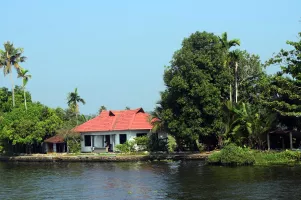
Help & Support
Call us now, +91-8069145442, best places to visit in india by month.

Read More Stories

Frequenty Asked Questions
1. what is ecotourism, 2. why is ecotourism important, 3. how does ecotourism differ from traditional tourism, 4. what are examples of ecotourism activities, 5. how can travelers support ecotourism.
- Plan Your Vacation
Top 7 States That Are Promoting Ecotourism In India
1. himachal pradesh.
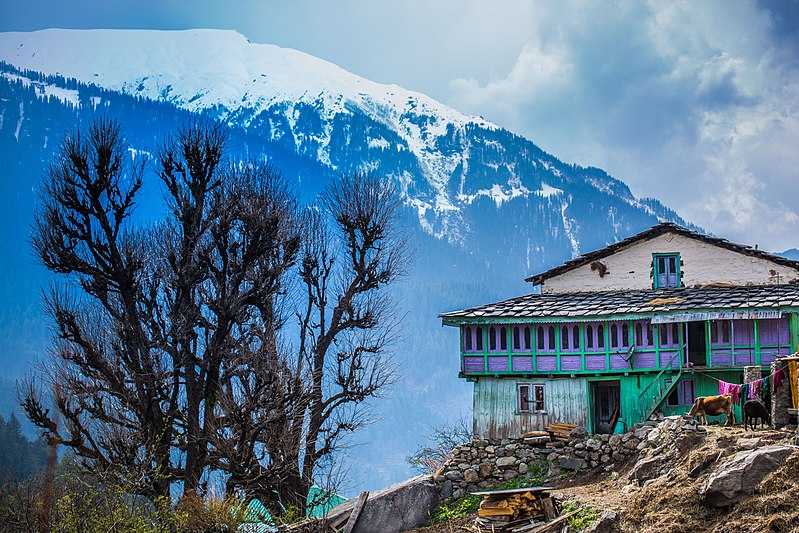
- Himalayan Nature Park, near Shimla
- Churdhar Sanctuary, Sirmour
- Chail Sanctuary, Solan
- Khem Bharti Homestay, Tirthan Valley
- The Himalayan Village, Kullu
- Sanjiv’s Aira Home Retreat, Shimla
2. Uttarakhand
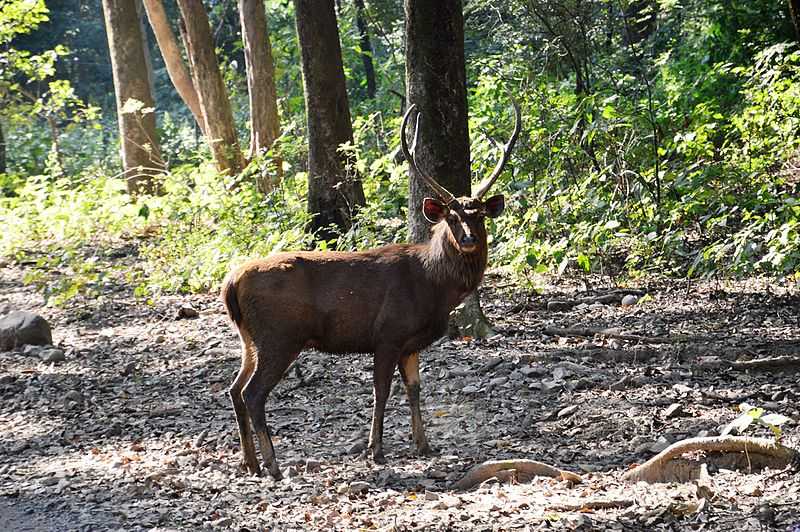
- Corbett National Park, Nainital
- Valley of Flowers, Garhwal Region
- Nanda Devi National Park, near Nanda Devi Peak
- Ecolodges in Jayalgarh and Auli
3. Arunachal Pradesh
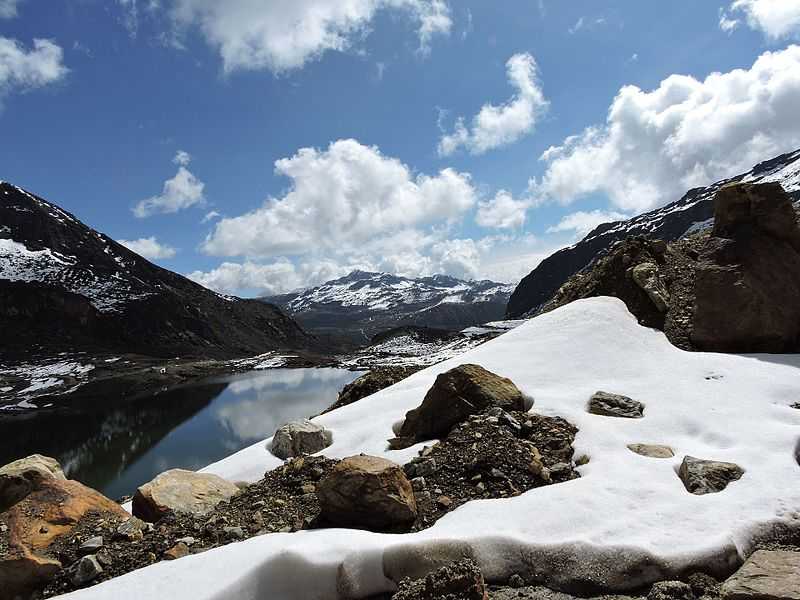
- Namdapha National Park, Itanagar
- Gorichen Peak, Tawang
- Talley Valley Sanctuary, Ziro
- Mehao Wildlife Sanctuary, Roing
- Non-profit Homestays, Thembang
- Homestays, Ziro
- Toshi Palace, Aalong
4. West Bengal

- Tea Gardens, Jalpaiguri and Darjeeling
- Sunderban Tiger Reserve, Sunderban
- Neora National Park, Darjeeling
- Jaldapara Wildlife Sanctuary, Alipurduar
- Seventy-Six Miles Homestay, Siliguri
- Blue Homestays, Doars
- Rangbhang Homestay, Mirik
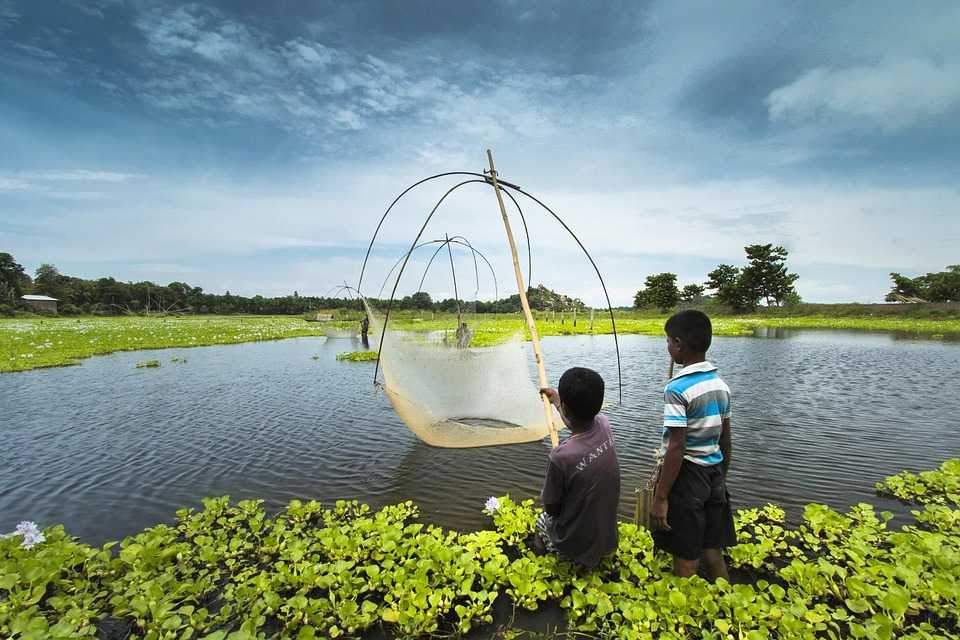
- Kaziranga National Park, near Golaghat
- Manas National Park, Barpeta,
- Nameri National Park, Sonitpur
- Rains Inn, Guwahati
- Agoratoli Eco Tourism Resort, Kaziranga National Park
- Chandubi Jungle Camp, Chandupi Lake
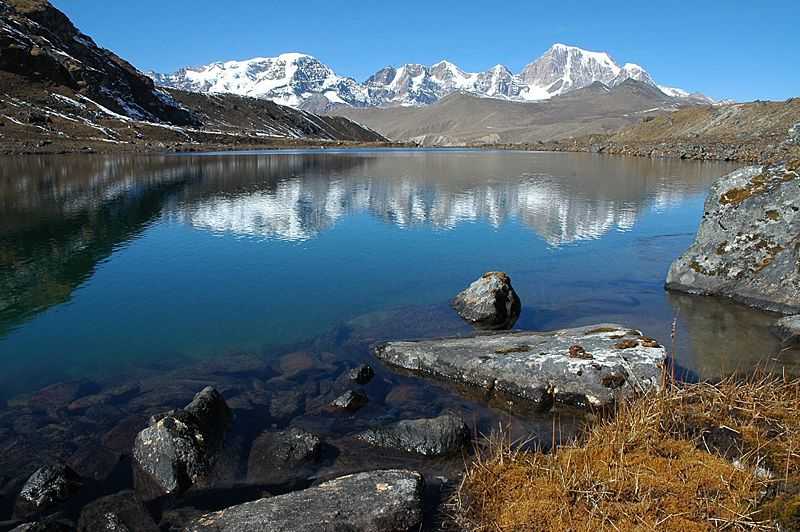
- Kanchendzonga National Park, near Chungthang
- Kyongnosla Alpine Sanctuary, Dichenling Area
- Maenam Wildlife Sanctuary, Namchi
- Varsey Rhododendron Sanctuary, near Soreng
- Teen Taley Eco-Garden Resort, Rumtek
- Cherry Village Resort, Pelling
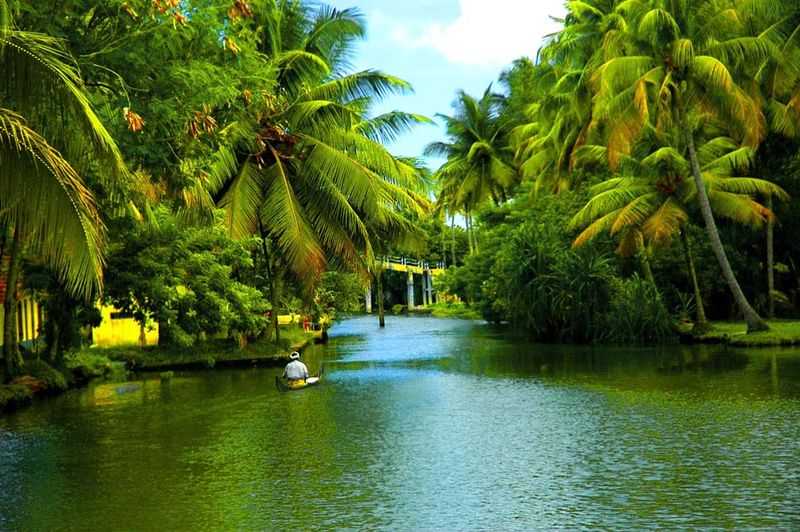
- Thenmala, near Kollam
- Konni Village, near Pathanamthitta
- Parambikulam, Chittur Taluk
- Rhodo Valley, Kannan Devan Hills
- Wild Elephant Eco-friendly Resort, Munnar
- Ashtamudi Villas, Kollam
This post was published by Atreyee Dutta
Share this post on social media Facebook Twitter
India Travel Packages
Compare quotes from upto 3 travel agents for free
Kashmir Tour Package 6 Nights 7 Days - Complimentary Photoshoot
Manali volvo tour package - excursion to solang valley, sikkim tour package for 7 days - excursion to tsomgo lake, leh ladakh summer holiday package with nubra & pangong stay, darjeeling tour package for family: gangtok & kalimpong, bestseller andaman and nicobar tour package, related articles.

IRCTC Announces Pay-on-Delivery For Train Tickets

Best Spots to Go Paragliding in India

Travel Tips
Drinking Water Standards In India
Best Places For Scuba Diving In India
Top Places For Hot Air Balloon Ride in India
River Rafting in India - Best Places & Basic Guide
Best Spots for Rock Climbing in India

Experiences
Hot Water Springs in India
12 Highest Motorable Roads In India
Dangerous Roads in India For That Memorable Road Trip
Vaccinations Required While Travelling To India

Hottest Places in India Where The Sun Gets Scorching

Art & Culture
Places To Visit This Independence Day To Experience Patriotism
27 Caves in India That are a Must Visit for a History Buff!

Beaches & Islands
14 Beautiful Islands of India for a Perfect Escape
Indian Visa Requirements - Application Process, Eligibility, Fee & More
Handicrafts of India - A Shopping Guide
Music Festivals In India That Every Music Enthusiast Must Attend!
Travelling With Children In India

Fairs & Festivals
Diwali 2023 : All You Need To Know About Diwali in India
15 Dances of India - Classical Indian Dance Forms and Their States of Origin

Wildlife & Nature
Biodiversity Hotspots in India
List of Best Art Galleries In India - For The Hidden Artist In You!
Bachelor Party in India - Best Party Destinations in India Before Getting Hitched!

Luxury Trip
Luxury Cruises in India for Your next Big Vacation
10 Best Places for Horse Riding in India - Saddle Up!
Souvenirs To Buy from 29 States Of India! - A Shopping Guide
Amazing Places to Celebrate Holi in India in 2024
Skydiving in India: Feel The Feeling of Free Fall
Kite Festivals in India - The Fight Of Colourful Kites Flying Through The Sky
Comments on this post
Browse package collections, india package collections.
India Honeymoon Packages
North East Tour Packages
South India Tour Packages
International Honeymoon Packages
International Tour Packages
Honeymoon Packages
Top Listed Packages
Kerala Munnar Tour Package with Thekkady and Alleppey
Spiti Valley in Summers: 1 Week in Breathtaking Kinnaur & Spiti
Kashmir 8 Days Itinerary: Enthralling Trip with Srinagar Houseboat Stay
Sikkim Tour Package for 5 Days
India Tour Package with Best of Himachal
3 Days Tour Package in India: Char Dham Yatra By Helicopter
Luxury India Honeymoon Tour Package - Tri-City Tour
Sikkim Tour Package for Couple - 8 Nights
5 Days Trip in India: Alleppey, Kovalam & Munnar
Gangtok Itinerary of 7 Nights 8 Days Package
Meghalaya Tour Package 7 Days with Shnongpdeng
Browse Hotel Collections
By hotel type.
Best Private Pool Villas in India
Best Cottages in India
Best Hostels in India
Capsule Hotels in India
Ski Resorts in India
Eco Friendly Resorts in India for Those Who Travel Consciously
Best Heritage Hotels in India for a Royal and Luxurious Stay
By Budget Category
Most Expensive Hotels in India for a Royal Stay
Best Luxury Hotels in India
Best Luxury Resorts in India
By Star Category
Best 5-Star Hotels in India
For Special Purposes
Resorts & Homestays to Work from Mountains in India
Best Yoga Retreats in India
Beautiful Treehouses in India Perfect for a Quick Staycation
Best Beach Resorts in India
Most Romantic Resorts in India
Top Places in India

Get the best offers on Travel Packages
Compare package quotes from top travel agents
Compare upto 3 quotes for free
- India (+91)
*Final prices will be shared by our partner agents based on your requirements.
Log in to your account
Welcome to holidify.
Forget Password?
Share this page
Username or E-Mail
Forget Password?
Do not have an account?
Already a member.

- India Art, History & Culture Tours – Top 6
- India Amazing Landscapes – Top 6
- India Adventure Tours – Top 6
- India Food Tours – Top 6
- India Spiritual Tours – Top 6
- India Wildlife Tours – Top 6
- India for First Timers
- Art & History Tours – Top 10
- Adventure Tours – Top 6
- Architecture Tours – Top 10
- Beach Tours – Top 10
- Beautiful Landscapes – Top 20
- Cruises – Top 10
- Festivals – Top 10
- Indulgence (Food/wine/spas) – Top 10
- Spiritual Tours – Top 10
- Trekking Tours – Top 10
- Wildlife Tours – Top 10
- Women Only Tours
- Father with Child Bonding Trips
- Destinations
- Travel Deals
- Interesting Travel Blog posts
- Travel Destination Guides
- Trip Planning
- Europe Top 10
- India Top 10
- North America Top 10
- South America Top 10
- Travel Podcast
- How It Works
- Our Approach
- Our Promises
Top 10 places for ecotourism in India
Eco-Tourism is derived from two words- Ecosystem and Tourism. India widely supports eco-tourism by precluding the environment and preserving its resources. The following places can provide a pleasant visit to you if you wish to take a breath away from the hasty city life and enjoy in midst of greenery.
Ecotourism destinations in India- Nature friendly tours India
Honey hills – thenmala eco-tourism, kerala.
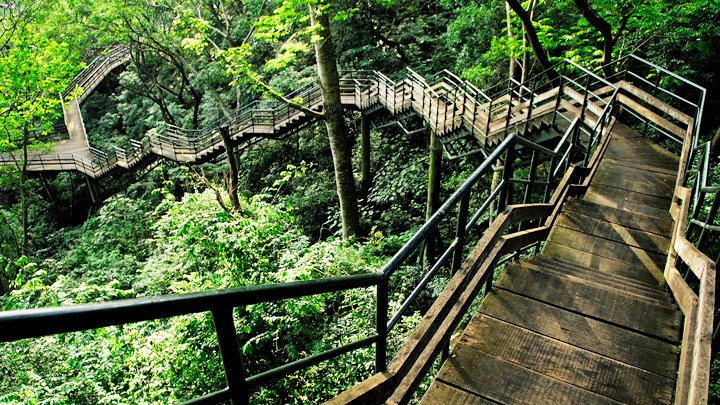
Ecotourism and medical tourism are the fast developing tourism segments of Kerala. Thenmala or Honey Hills is the unique destination in Kerala. The destination is known for its ecotourism and beautiful landscapes which are not only comforting but also stimulating. Located about 72kms from Thiruvananthapuram, the Thenmala Eco-Tourism stocks its resources with the well-known Shenduruney Wildlife Sanctuary at the slopes of the Western Ghats.
- How to reach? Nearest railway station : Shenkottah, Nearest airport : Trivandrum International Airport
- Best time to go? Summers marks to be the ideal time.
Bandipur National Park, Karnataka
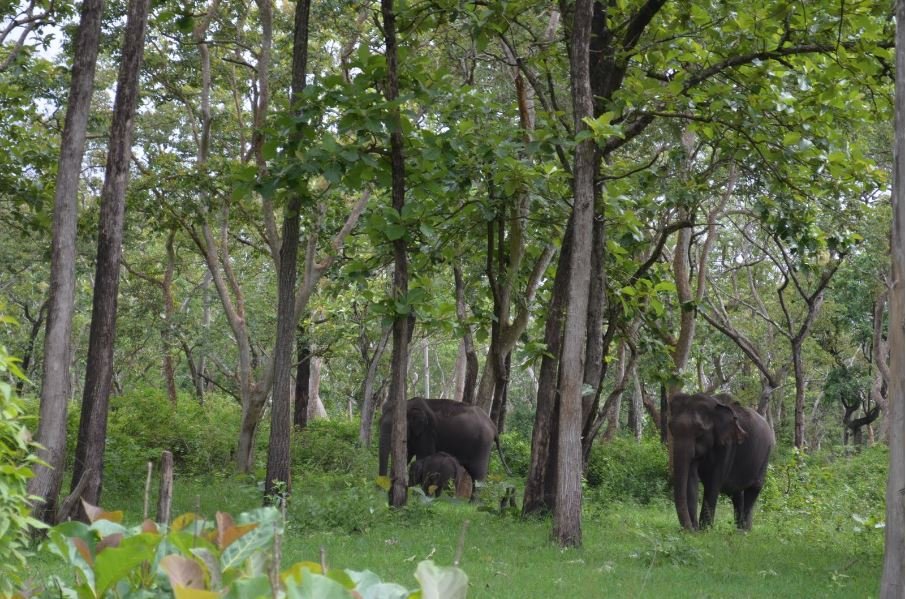
Bandipur National Park is one of the oldest parks in the Bandipur Wildlife Sanctuary. Situated in Karnataka, it is among the biggest wildlife reserves of India. It is a part of Nilgiri Biosphere Reserve and is highly protected by the Indian Government. The place meets the requirements of eco places. Green lodges here support sustainability of environment using methods like energy reduction and water conservation. Water conservation helps in preserving natural habitats which serves as homes for beloved wildlife.
- How to reach? The nearest airport is Bangalore, and the nearest station is Mysore. Then take a road trip to the park.
- Best time to go? March to May
Goa traditional trip

- How to reach ? Via railways, it is quite easy to reach Goa as the major railway stations in Goa are situated in Margao. The chief railway station is identified as Madgaon and Vasco-da-gama.
- Best time to go? All seasons are great seasons!
River rafting in Rishikesh
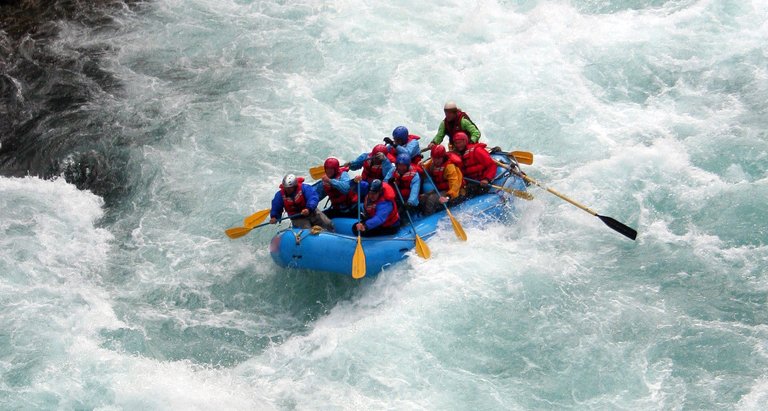
Rishikesh is a prevalent tourist destination. Exploring this destination provides ample opportunities to explore amazing mountain attractiveness and superb natural beauty. The place has tremendous scope for river rafting and other adventure sports. Eco rafting or ecological river rafting provides you with the opportunity of enjoying the wonderful combination of the ecological interpretation and scenic rafting in the midst of the verdant Himalayan landscape.
- How to reach? Jolly Grant airport at Dehradun is the nearest airport to Rishikesh. Besides, Rishikesh has a good network of buses connecting it with important places.
- Best time to go ? The greatest time to visit Rishikesh for River Rafting is from September – to mid-November, and then from March to first week of May.
Sunderbans National Park, West Bengal
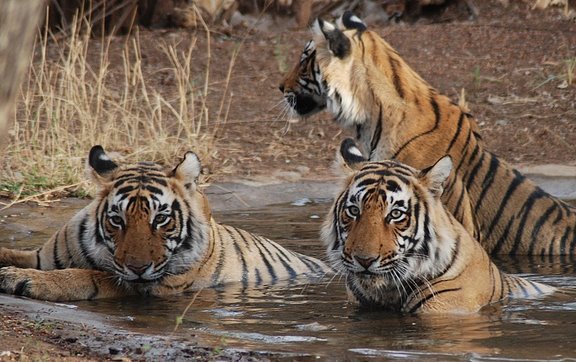
Sunderbans is one of the most alluring natural reserves in the entire world. You can achieve eco-tourism prospects in this striking destination without hindering the distinct flora and fauna of the region. Thus, you can spend a small sojourn in harmony with nature. Though Bengal Tiger is the flag ship species of this unique mangrove Forest, it also offers many other wonders of the nature to the visitors. There are two Nature Interpretation Centers located at Sajnekhali and Bhagabatpore, and one Eco museum at Sudarikati.
- How to reach? The adjoining railhead positioned near the Sunderbans National Park is Canning. Book a taxi after reaching there to travel to Sunderbans National Park.
- Best time to go? October to March
Chilika, Orissa
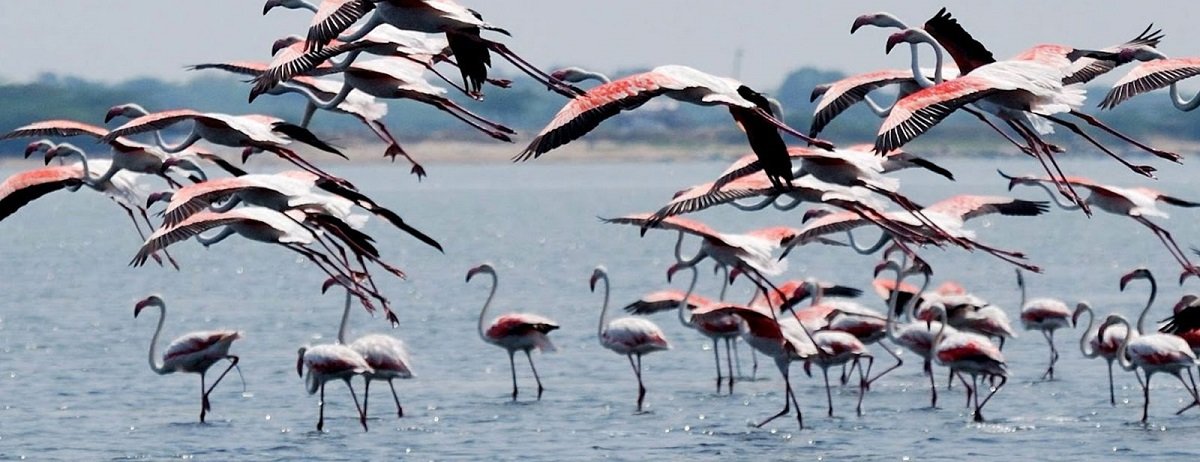
This is a biodiversity advert and the major brackish water lake in Asia. Furthermore, the largest lagoon along India’s east coast spreads over 1100 sqkm. A boat drive in this lagoon will get you amid the squeaks of oodles of migratory birds from Baikal, Siberia, South-east Asia, and Central Asia. Lakhs of migratory birds flock here during winter every year. Along with the migratory birds, more than a few species of local birds are also farsighted at Mangalajodi all through the year and a number of of them nest in the abode.
- How to reach? You can reach Bhubaneswar railway station via train. A two-hour journey from Bhubaneswar takes you to Chilika.
- Best time to go? During the winter months, from November to February.
Kaziranga National Park, Assam
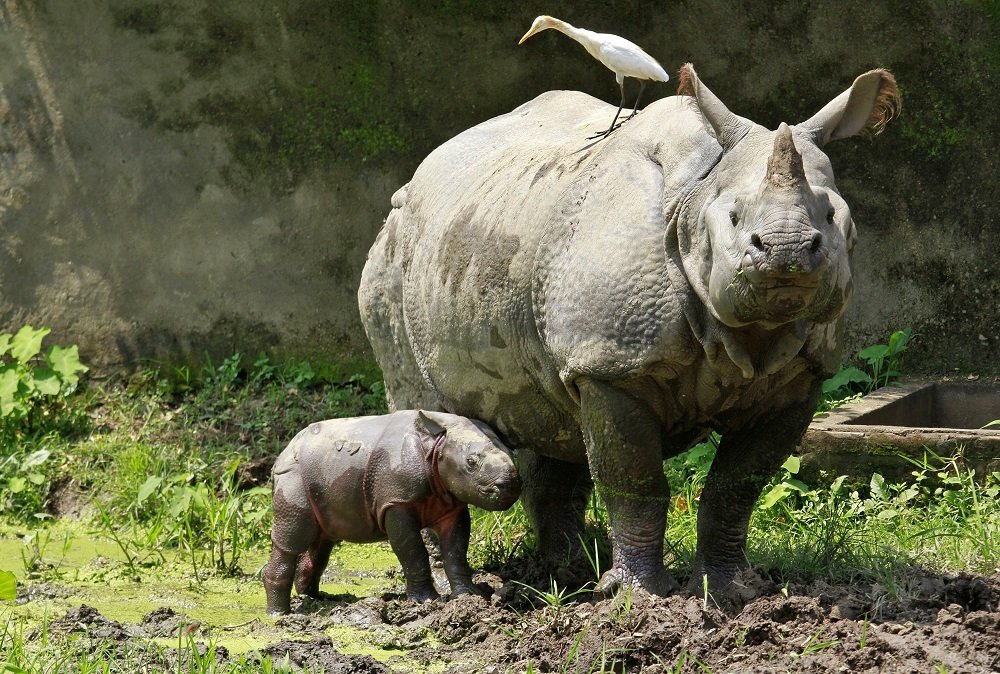
Kaziranga National Park is an honored national park in the country. This dwindling zone of Assam has no scarcity of discrete flora and fauna. Long elephant grasslands, marshlands, and thick tropical moist forest generate an ideal atmosphere for the existence of the flora and fauna. You can love the attractiveness of the Greater One Horned Rhinoceros with its grand body and its magnetic horn; see masses of elephants and some most wonderful tuskers. In addition, if you are fortunate enough, you might as well come through a tiger.
- How to reach? You can reach Guwahati via train. After that you need to travel by road. Hiring a cab would be a suitable option.
- Best time to go? November to April is the best time.
Tiger travel in Ranthambore National Park, Rajasthan

A nearby attraction of Sawai Madhopur, in the state of Rajasthan, Ranthambore National Park is an outstanding example of Project Tiger’s efforts at conservation in the India. Ranthambore National Park in Rajasthan is famous for its Tigers and is a delight treat for the photographers. This place is a jewel for wildlife enthusiasts. You get a chance to explore the grand creatures in the barren. Thanks to the efforts of conservation workers and government incentives, you can explore eco-tourism at its peak.
- How to reach? Nearest airport is Sanganer Airport. You can hire cab or bus from Sanganer Airport to reach Ranthambore. Nearest railhead is Sawai Madhopur.
- Best time to go? October to end of June
Dudhwa National Park, Uttar Pradesh

Dudhwa National Park is home to a large number of endangered animal species such as the Rhino and the tiger. Dudhwa is one of the ironic bio-reserves in India. Numerous species of reptiles, mammals and birds are protected here. This offers immense prospects of eco tours. Scattering across an area of 811 sq. km witnessing the nature paramours with swamplands, plains and thick woods, the zone is really meant for marvelous sums of Swamp Deer and Tigers species. It is an idyllic habitation for the wild beings to discover nature’s tranquility & relief ability in a more accepted way.
- How to reach? The most suitable way would be to travel to Lucknow and then reach Dudhwa by road or train. You can travel to Lucknow via railways. Nearest railway station is Charbagh railway station.
- Best time to go? Between November and May.
Chhattisgarh – The tribal excursion
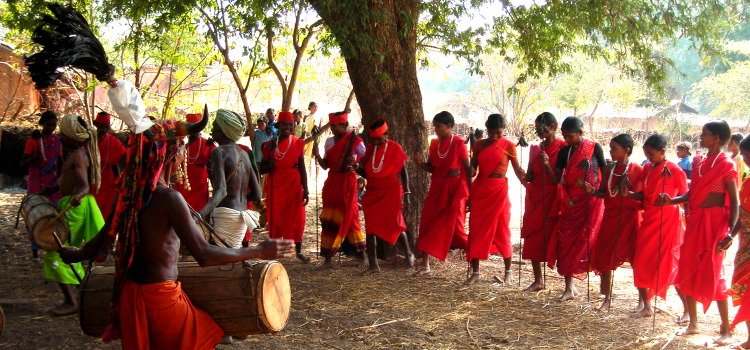
A tour to this place will take you to the backyards of tribal people. Chhattisgarh owns a wealth of earliest tribal cultures that continue to persist. There are grips of antique cultures that are untouched by modernism. The government has taken steps to reserve these as national assets. With so much of variety for eco-tourism, Chhattisgarh promises to be an ideal holiday destination for nature lovers, wildlife enthusiasts and also for those who want to discover the unique tribal life of the region.
- How to reach? Surely the finest way to get to Chhattisgarh from anywhere in India is by the massive network of Indian Railways. Raipur and Bilaspur are the two chief confluences that are on the ways of nonstop and passenger trains that joins the state to other portions of India.
- Best time to go? During the winter season. At that time, the weather is pleasant.
Eco Tourism is the greatest choice for the people who love Mother Nature and its splendor. Get to these places to identify what it means.
Hooma Roy Choudhury
You listed out very good places to visit . Pictures are good and explained well .
Leave a Reply Cancel Reply
Save my name, email, and website in this browser for the next time I comment.
This site uses Akismet to reduce spam. Learn how your comment data is processed .
Book hotel at the best price !
Book tours in any city, any country at the best price , recent posts.

Travel With Us

Best of Vietnam Cambodia-Soaking in beauty & heritage

Ananda Spa, Himalayas – The top destination Spa experience in India

Leukerbad, Switzerland – Largest Alpine Thermal Spa

The Himalayas, India – Road trip from Manali to moonscapes of Leh

Kurokawa Onsen, Kyushu, Japan – Natural hot-springs experience

Coachella, USA – Meet the celebrity artists and actors
Tour destinations.

Africa Tours

America Tours
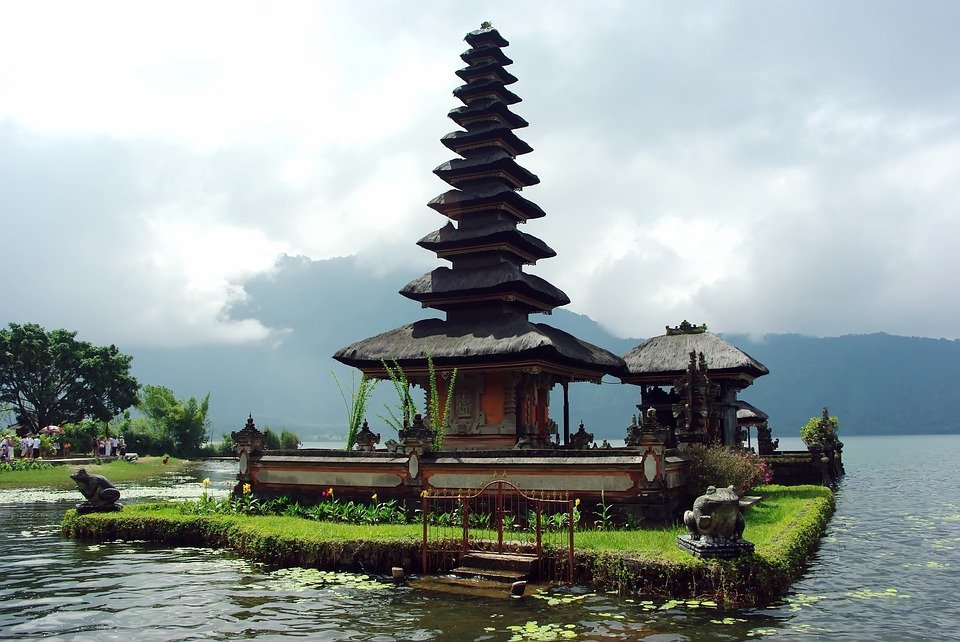
Australia & New Zealand Tours

Europe Tours
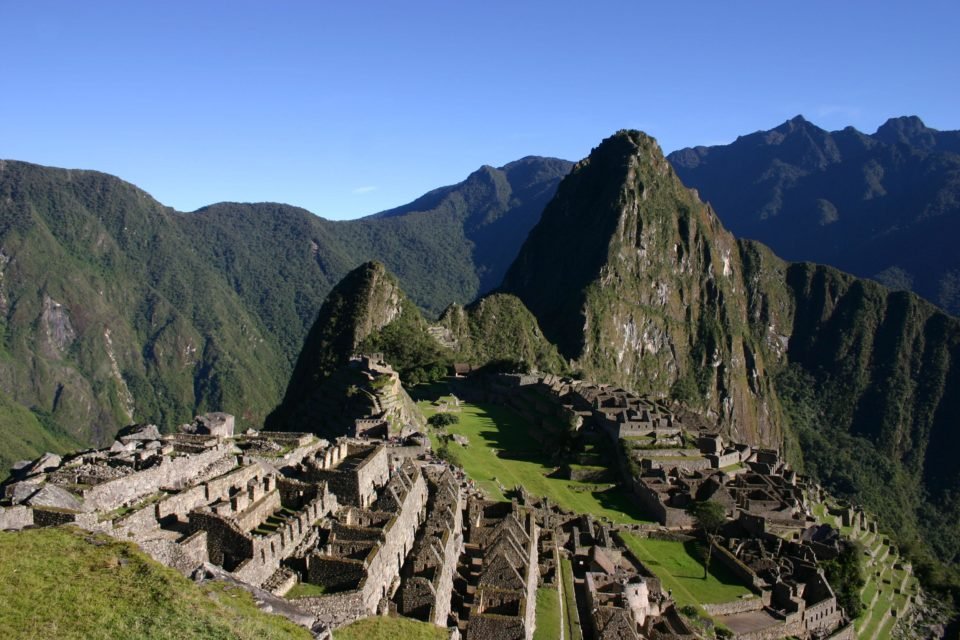
South America Tours
- Mauritius (1)
- Morocco (1)
- Tanzania (2)
- Americas (9)
- Kashmir (2)
- Maldives (1)
- Rajasthan (4)
- Malaysia (1)
- Singapore (1)
- Srilanka (1)
- Thailand (1)
- Newzealand (1)
- Cheap Flights (1)
- Choosing the destination (4)
- Austria (1)
- Czech Republic (1)
- Germany (3)
- Switzerland (2)
- UK-England & Scotland (1)
- Europe Top 10 (8)
- Finding Cheap rental cars (1)
- Inspiration (16)
- Adventure Travel (14)
- Beach Destination (11)
- Budget Travel (12)
- Citylife (8)
- Couple Travel (22)
- Family Travel (41)
- Heritage (21)
- Hill Station (9)
- Jungle (20)
- Luxury Travel (14)
- Most Popular Posts (13)
- Recent Posts (63)
- Religious tour (5)
- Romantic (21)
- Solo Travel (6)
- Travel Advice (29)
- Travel Tales (10)
- Unusual Places (9)
- Vacations (19)
- Waterfront (8)
- Photography Tips (1)
- Planning your itinerary (5)
- Saving money to travel (1)
- Saving on Accomodation (1)
- Saving on local transport (2)
- South America Top 10 (6)
- Family Vacation (8)
- Female Solo Traveler (1)
- India Top 10 (16)
- North America Top 10 (2)
- Popular Travel Tips (6)
- Travel Gear (2)
- Travel Guide (10)
- For a beach destination (1)
- For a Hill Station (1)
- For a Jungle (1)
- For a Solo Traveler (1)
- For a trek (1)
- When traveling with Kids (1)
- Travel Quizzes (1)
Proceed Booking
Already a member.
Username or E-mail
Don't have an account? Create one.
Or continue as guest.
Eco Eco Eco Eco Eco Eco
Activities Parks Wonders Places Lodge/Resorts Trips/Tours
What is Eco-Tourism Home Stays Flora & Fuana
Rishikesh Whitewater Rafting
Duration: 02 Nights - 03 Days
Bird Watching Tour
Duration: 05 Nights - 06 Days
Indian Tiger Safari
Duration: 07 Nights - 08 Days
Nepal Himalayas Tour
Duration: 09 Nights - 10 Days
Nature Trail In Flowers Valley
Duration: 11 Nights - 12 Days
This website uses cookies
We use cookies to enable functionality, increase security and analyse site traffic to help us improve our service.
You are using an outdated browser. Please upgrade your browser to improve your experience and security.
The future of Indian eco-tourism
COVID-19 has hit India's nascent green tourist sector hard. Our partner's new research suggests ways to recover sustainable prosperity
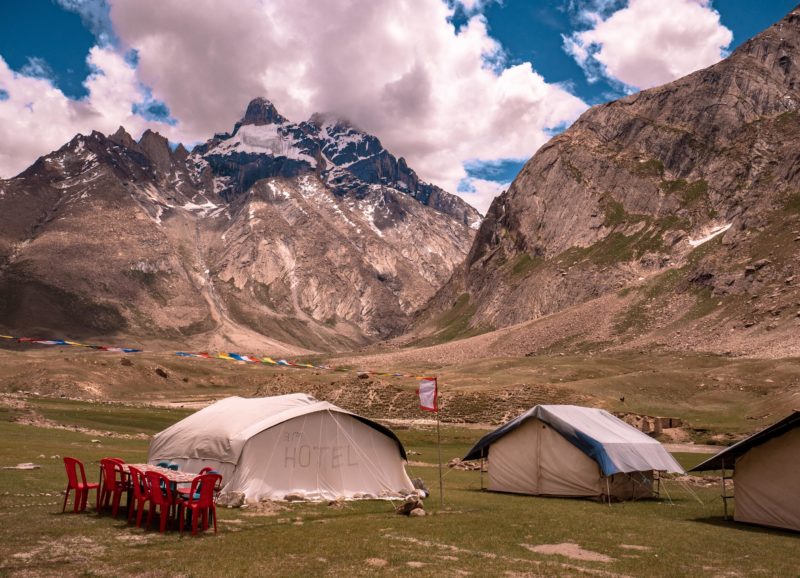
The inherent nature of capital means that it is cheap for the rich and expensive for the poor, hence it is always scarce for SMEs. This scarcity of capital is even more problematic for innovative new sectors such as eco-tourism...
The tourism sector is a vital part of India’s economy and an important source for investment, business, and employment opportunities, contributing about 7% of total GDP in 2019. Tourism also benefits other related sectors like transport, handicrafts, food processing, and others, creating job opportunities, income, and local government revenue.
The vulnerabilities of the tourism sector
But this important sector has been hit hard by COVID-19. Almost 80% of the travel and tourism sector is made up of micro and small enterprises, making them especially vulnerable to disruptions in demand and income.
Related reading
- Sikkim's eco-tourism evolution
- Of turtles and tipping points
- Fair Trade isn't just about coffee. It's a roadmap for economic revolution
In India employment generation from the tourism sector has fallen from 12.75% in 2019 to 8.0% in the current year (Ministry of Tourism, 2020). Moreover, the Indian Himalayan Region, a strong tourist asset of India, is amongst the most fragile ecosystem on earth and thus experiencing increased frequency of extreme events.
The region is responsible for providing water to a large part of the Indian subcontinent and is known for its unique centres of cultural and biological diversity , but is susceptible to population pressure, global climate change, natural hazards, and rapid loss of habitat and genetic diversity. This is an increased risk to the lives and livelihoods of the communities in the region.
The urgent need for today is to utilise our natural resources sustainably with a focus on minimising their depletion and pollution. At the same time, it is important to note that the welfare of human society and is directly linked to the sustainable use of natural resources. Ecotourism thus has gained widespread acceptance in the tourism industry all over the country and mountain tourism has been identified as one of the fastest-growing sectors in the recent past.
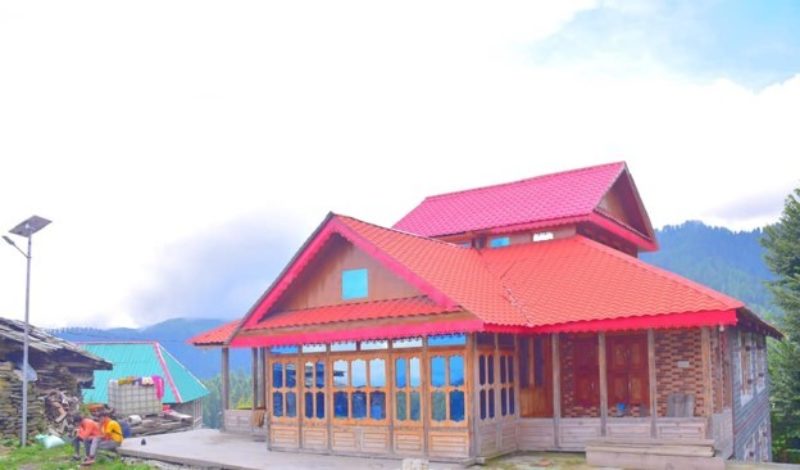
The states of Himachal Pradesh and Uttarakhand have recognised eco-tourism as having the highest potential for the economic development of the region and have initiated different ecotourism activities for livelihood creation as well as conservation and protection of the fragile ecosystem of the Himalayan region. However, Ecotourism is identified as a niche tourism area that is mainly popular amongst adventure/nature/wildlife enthusiasts. Thus, Ecotourism SMEs have faced many challenges.
The challenges mentioned here are based on case studies undertaken by Development Alternatives in Himachal Pradesh and Uttarakhand, which found that the ecotourist sector needs to chalk out a recovery plan incorporating challenges and perspectives of SMEs including rural communities, tour operators, agents, and upcoming responsible tourism startups.
The top 5 challenges faced by ecotourism SMEs
- Lack of public infrastructure and inadequate marketing support from the government: Making any destination commercially viable requires good public infrastructure and a proper marketing strategy. However, the benefits of development and good marketing are unevenly provided. Himachal Pradesh which falls in Indian Himalayan Region is heavily dependent on tourism as an avenue for livelihood generation as it is blessed with a wide range of magnificent snow-capped mountains. However, the distribution of tourists’ arrival across its 12 districts is highly uneven.
- Violation of rules and regulations and illegal practices - A huge chunk of homestays and hotels are unregistered, leading to poor management of natural resources, greenwashing of ecotourism-based enterprises, and disputes within the industry. A huge chunk of businesses operate without license, authorization, and skills making it difficult to monitor sustainability criteria. A formal accreditation system for tourism enterprises would enable high-quality operators to succeed and provide quality assurance to customers as well.
- Poor implementation of Homestay schemes and Credit Guarantee Trust Fund for Micro & Small Enterprises (CGT SME) - Financial institutes are much more likely to lend to large businesses than small ecotourist enterprises. Underdeveloped districts tend to face a finance gap from formal institutes due to low tourist arrival, meaning that locals from underdeveloped districts like Chamba and Mandi tend to migrate to major tourist hubs like Kullu in search of work and income. Major tourist hubs like Kullu-Manali, Mussoorie are now facing the brunt of overexploitation of natural resources and exceeding their actual carrying capacity.
- The low financial footprint for the tourism sector- Initiatives taken by the government for the tourism sector mostly revolve around developing infrastructure to support tourism in India. The sector also needs backing from the government to support the operational cost of tourism SMEs as well which will ease the process of accessing finance from formal institutes.
- Insufficient financial aid and limited scope of policy: The Himachal Pradesh Homestay Scheme was launched in 2008 to promote rural tourism and sustainable livelihoods, providing a subsidy of USD 106 to set up a homestay. However, the real cost of setting up a Homestay is much higher, covering basic infrastructure like rooms and toilets, furniture, and decoration. Current schemes must be expanded to include tax reduction for ecologically and culturally responsible businesses, which will enable individuals to invest more in the tourism sector and also develop a less-standardized, culturally rich tourism ecosystem in the country.
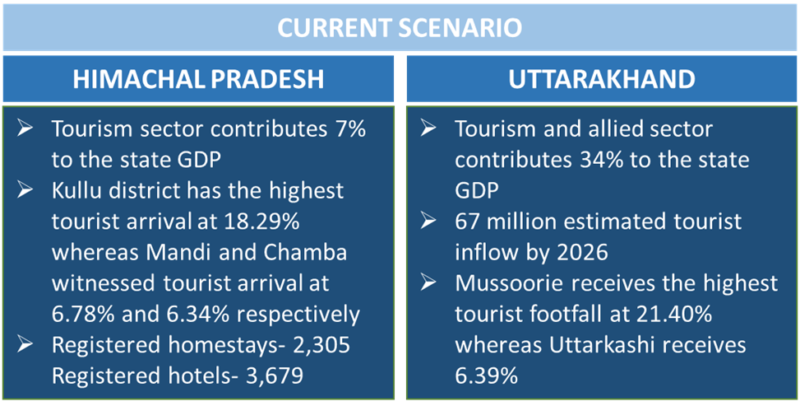
The way forward
Going digital can go some way towards addressing these problems. Firstly, it is affordable and secondly, it is the fastest way for local communities to connect with the world. Partnering with digital startups and established businesses such as Airbnb and NotOnMap, and using marketing tools such as video tours to offer a firsthand view of the experience being offered to potential customers. To boost other sources of revenue such as rural arts & crafts and food products partnership with e-commerce is highly recommended. This would enable the local entrepreneurs in reaching out to the wider market and advertising the homestays and other tourism services.
The government has taken initiatives to recognize the service sector in the new definition of MSME, removing the distinction between manufacturing and service-based MSMEs (India Today, 2020). With the revised definition of MSMEs, the tourism sector has been recognized as a service sector. It can now avail the same benefits being given to manufacturing businesses for quite a long time.
However, this alone is not sufficient. Government schemes must move beyond incentives for homestay construction and should include schemes for private individual investment into homestays through personal tax benefits. It has been observed on the ground that people are motivated to join the unconventional tourism bandwagon, but structural constraints and vulnerability to failure restrict the entrepreneurial spirit. Currently, the financial footprint of government schemes is very low for SMEs and needs to be more inclusive, thus garnering benefits for the local communities and the tourism sector.
- Tanya Issar , Deputy Manager (Policy and Planning), Development Alternatives
Building a Community of Purpose for small business at UNEA-6
Are the european farmer protests evidence of a green backlash, overheard in bonn: policy for an eco-social contract.
Bibliography
Economic Times. (2021, May). View: Travel, tour after stepping out again . Retrieved from Economic Times: https://economictimes.indiatim...
India Today. (2020, May 13). New definition of MSMEs and how it is different from earlier . Retrieved from India Today: https://www.indiatoday.in/busi...
Ministry of Micro Small and Medium Enterprises, GoI. (2020). Annual Report 2020-21. Retrieved from msme.gov.in: https://msme.gov.in/sites/defa...
Ministry of Tourism. (2020). Annual Report 2019-2020. New Delhi: GOVERNMENT OF INDIA.
Press Information Bureau, Government of India. (2020). Retrieved from 1. Press Information Bureau, Government of India. (2020). Ministry of Micr https://www.pib.gov.in/PressRe...
State Himachal Pradesh. (2020). Himachal Pradesh Statistical Abstract 2018-2019 Report. Himachal Pradesh: Himachal Pardesh Government. Retrieved September 28, 2021, from https://himachalservices.nic.i...
Tribune India. (2021, January 9). Why Himachal homestays mean business . Retrieved from Tribune India: https://www.tribuneindia.com/n...
- Greening Economic Sectors
Associated Hubs
Related articles.

Our Country Programmes Director reports from the 6th session of the UN Environmental Assembly in Nairobi, Kenya.

Imposing policy without the engagement of the impacted groups will undermine its implementation.

Some of our favourite quotes from our joint Global Policy Seminar for a New Eco-Social Contract.

IMAGES
VIDEO
COMMENTS
20 Sustainable Tourism Practices and Destinations in India. Spiti Valley, Himachal Pradesh: Nestled in the Himalayas, Spiti Valley is a remote and pristine destination that offers travelers a chance to experience the unique culture and traditions of the Spiti people. The valley is home to several eco-tourism initiatives, such as the Spiti ...
1. Kerala. Kerala is a well-liked ecotourism destination because of its varied animals, tranquil backwaters, and verdant forests. There are many national parks and wildlife sanctuaries in the state where visitors can see uncommon and endangered animal and bird species like tigers, elephants, and Great Indian Hornbills.
Thenmala, Kerala. India's first planned ecotourism destination, Thenmala in Kollam district is majestically set in the midst of evergreen forests in the lap of the Western Ghats and hosts a wide range of adventure and leisure activities for all kind of travellers. Its growing popularity among both domestic and international tourists is due to its unique vistas, bio-diversity and functioning.
Examples of Ecotourism Destinations in India. Presently, there are some attractive locations across India where one can avoid city life's hustle and help heal this planet. Following are some of the best eco-friendly destinations one can visit; Eco-Tourism Destination: Must see/do:
Sustainable Travel in India. India is a country of diverse landscapes and cultures. Its rich biodiversity has allowed the rapid growth of sustainable tourism associated with green travel destinations.. Green travel, also known as eco-tourism, is a lifestyle choice that one adopts while traveling to reduce their carbon footprints.
Thenmala, Kerala. Thenmala, which means Honey Mountain, holds pride of place as the first planned eco-tourism destination in India. It is surrounded by dense evergreen forests, rich in timber and a thriving rubber plantation. The beautiful green hills of Thenmala, nestled in the midst of the Western Ghats, holds many surprises for the traveller.
La Maison de Ananda (Majuli, Assam) Kohima Camp, The Ultimate Travelling Camp (Nagaland) Eco Resorts in Himachal Pradesh. The Wanderer's Nest (Chitkul, Kinnaur) Eco Resorts in Ladakh. Nubra Eco Lodge (Nubra Valley) Nimmu House (near Leh) Eco Resorts in East India. Calcutta Bungalow, Kolkata.
Ecotourism is an increasingly popular form of tourism that combines travel and adventure with sustainability and environmental conservation. It focuses on preserving natural habitats, promoting biodiversity, and benefiting local communities. In India, ecotourism has gained significant traction over the years due to the country's rich natural ...
4. Thenmala, Kerala. Thenmala, one of the lesser explored destinations in India, is India's first eco-tourism destination in India. Its 10 eco-tourism spots cover the hill ranges of Thiruvananthapuram, Pathanamthitta, and Kollam districts.
Discover India's top 3 best ecotourism destinations. Explore India's ecotourism hotspots: Hampi, Kerala and Andhra Pradesh. Learn how to travel responsibly and make a positive impact with ecotourism in India. Ecotourism in India offers remarkable encounters and bring constructive change on our planet.
Eco-tourism in India is about visiting the clearest and most pristine lakes in India while at the same time ensuring that it stays like that! You should always reach these spots by foot because that will help keep the water pure. ... This village is a prime example of a harmonious relationship between humans and threatened birds- the Spot ...
Auroville and Sadhana Forest. WHERE: Pondicherry, Tamil Nadu. Auroville, a utopian spiritual community situated on the hot, arid fringes of seaside Pondicherry, remains India's best-known eco ...
With that said, let us take a look at the examples of some of the best destinations for ecotourism in India-. 1. Odisha Ecotourism Nature Camps. When it comes to the best places for ecotourism in India, Odisha is undoubtedly a great choice. This state includes 37 nature camps at Bhitarkanika, Satkosia, Simlipal, Chilika, Bichitrapur, Chandipur ...
5. West Bengal. Famous for its sweet delicacies like the Roshogulla, Shondesh, and Mishti Doi, West Bengal has varying landscapes that delight eco-tourists. The northern part of the state is blessed with hill stations like Darjeeling, Rimbik, and Kalimpong, while down south, there is the world-famous Sunderbans.
Renowned destinations for Eco-tourism in India. Plan Your Holiday. View Gallery - 3. India boasts several destinations renowned for eco-tourism, offering travelers the opportunity to connect with nature while promoting conservation. Here are some prominent eco-tourism destinations in India: Periyar National Park, Kerala:
Valley of Flowers, Garhwal Region. Nanda Devi National Park, near Nanda Devi Peak. Eco-Friendly Accommodations: Ecolodges in Jayalgarh and Auli. 3. Arunachal Pradesh. Source. Arunachal Pradesh is a jewel of the North East. It charms tourists with its unrestrained beauty beyond imagination.
Discover most popular eco-tourism destinations in India including national parks, Thenmala in Kerela, Chilika lake in Orissa and tribal excursion in Chattisgarh. +91-7676813665 [email protected] ... Ranthambore National Park is an outstanding example of Project Tiger's efforts at conservation in the India.
Eco Tourism in India - The site describes the meaning and the purpose of nature friendly eco tourism in India. Ecotourism is the travel to natural areas to appreciate the cultural and natural history of the environment without disturbing the integrity of the ecosystem. There are many things to know about environmental travel tourism in India and about the major eco tour spots such as wildlife ...
SUMMARY. There are about 80 national parks and 441 sanctuaries in India, which works towards the preservation of wildlife resources in India. Eco-tourism is non-extractive and non-consumptive in ...
The United Nations World Tourism Organisation defines sustainable tourism as an approach that considers the economic, social and environmental impacts of tourism activities while also addressing the needs of visitors, the travel and tourism industry, the environment and host communities. In essence, it seeks to balance the benefits of tourism ...
9. Best Eco-resort for a Weekend in India - Na La Ri Resort. $. 3 guests. Traditional nature lodge. Pristine natural setting. Na La Ri Resort is an authentic eco-resort in a lush setting in Sumer. Comprising a combination of tents, small cottages and larger units, Na La Ri Resort is a haven for nature lovers.
Ecotourism is a type of tourism that focuses on responsible travel to natural places and environmental preservation. Ecotourism has a lot of potential in India right now, and it's important to ...
The tourism sector is a vital part of India's economy and an important source for investment, business, and employment opportunities, contributing about 7% of total GDP in 2019. Tourism also benefits other related sectors like transport, handicrafts, food processing, and others, creating job opportunities, income, and local government revenue.
Abstract and Figures. The current study examines ecotourism as practiced in India by conducting a descriptive literature review of studies published between 1990 and 2019, focusing on ecotourism ...
Cite examples to substantiate. Conclusion: Conclude by summarising. Introduction. Bhakti was accepted as a means to attain moksha along with jnana and karma. The Bhakti Movement originated in the seventh-century in Tamil, South India (now parts of Tamil Nadu and Kerala), and spread northwards. It swept over east and north India from the 15th ...
India's push to digitize its society started about 15 years ago, but e-payments were slow to catch on. In 2016, 96% of transactions in India were still conducted with banknotes. Two events that ...
Furthermore, many Thai organizations are boosting their productivity and accelerating innovation using Microsoft's generative AI-powered solutions. For example: Advanced Info Service Public Company Limited (AIS), Thailand's largest digital life service provider, has enhanced its workforce productivity by adopting Copilot for Microsoft 365 ...